Farm cost in ation set to fall fast





NEW Zealand cannot plant its way to carbon neutrality and must act with greater urgency to reduce greenhouse gas emissions, according to the latest Climate Change Commission advice to the government.

While forestry will continue to have a role in carbon sequestration, commission chair Dr Rod Carr said it does not incentivise the reduction of gross carbon emissions but only encourages excessive tree planting, which reduces future land use options.
The commission calls for greater government urgency to meet climate change objectives and wants regulations streamlined to allow the accelerated adoption of new technology.
It also wants reform of the emissions trading scheme (ETS), saying in its current form it does not encourage the reduction of emissions but drives afforestation.
“The only way we can get NZ to stay at net zero in 2050 and beyond, is to reduce our gross emissions,” Carr told Farmers Weekly.
Carr expects 500,000ha of land to be planted in exotic and native trees by 2035, of which 60,000ha was planted last year.
He urged the government to provide advice and assistance to improve the performance of agriculture’s 20% worst greenhouse gas emitters, a move he said will go a long way to meeting the sector’s emission goals.
“The question is, how do we accelerate the number of farmers in that space?”
Carr is confident that known breeding, feeding and management, along with targeted tree planting, will allow farmers to achieve a 10% reduction of 2017 methane levels by 2030.
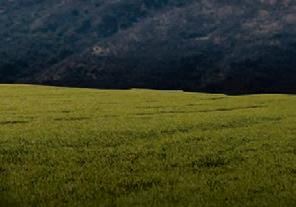
To meet the 24-47% reduction goal by 2050 will require new technology.
Farmers should be rewarded for reducing greenhouse gas emissions but he reiterated his surprise that farmers have adopted He Waka Eke Noa (HWEN), describing it as an expensive and complex way to price emissions.

Carr called for an end to the blame game, with urban blaming rural for that sector’s emissions and rural blaming faceless international politicians for setting targets, saying a lowcarbon world will be sustainable, affordable and provide opportunities.
“We will be better off when we get this job done.”
Federated Farmers president
Continued page 5
Sharon Chynoweth of Canterbury waits with horses Blue and Flash at the recent National Ploughing Championships in Milton.

PEOPLE 9
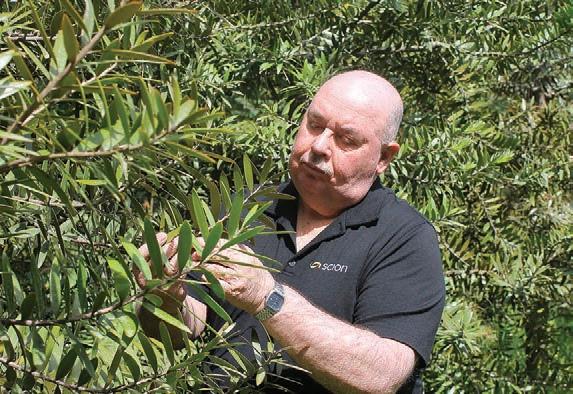
Greg Steward, who is the first to admit he failed science and left school at 16, was farewelled by dozens of current and former colleagues at a special function at Te Whare Nui o Tuteata this month.

PEOPLE 20

A survey has found that not many catchment groups have specific objectives they are working towards, or action plans.
NEWS 13
Zespri is an example of a food company that has undertaken to fully understand its customers’ needs, says top researcher.
MARKETS 15
As he eyes retirement, Steve Wyn-Harris makes good on his promise to share his succession plans for the family farm.
OPINION 19
team’s skills
so they can udderly take on anything
Grow your Learn online with a Dairy Assistant course



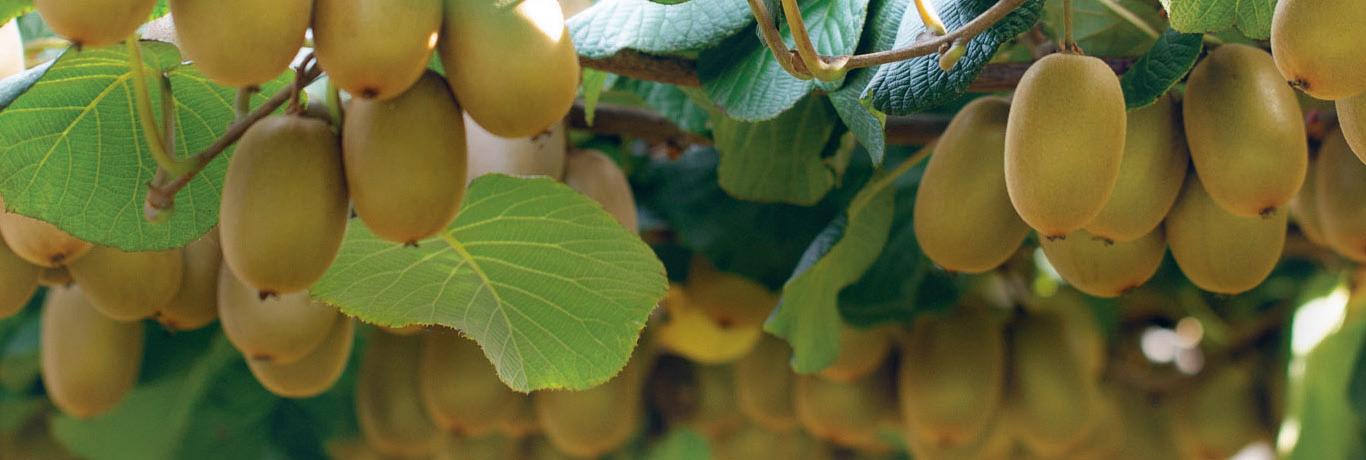
New technology and initiatives can make a massive difference to the nutrient efficiency on your farm, but those opportunities also come with challenges. In this issue we talk with a panel of farmers about their approaches to nutrient efficiency.
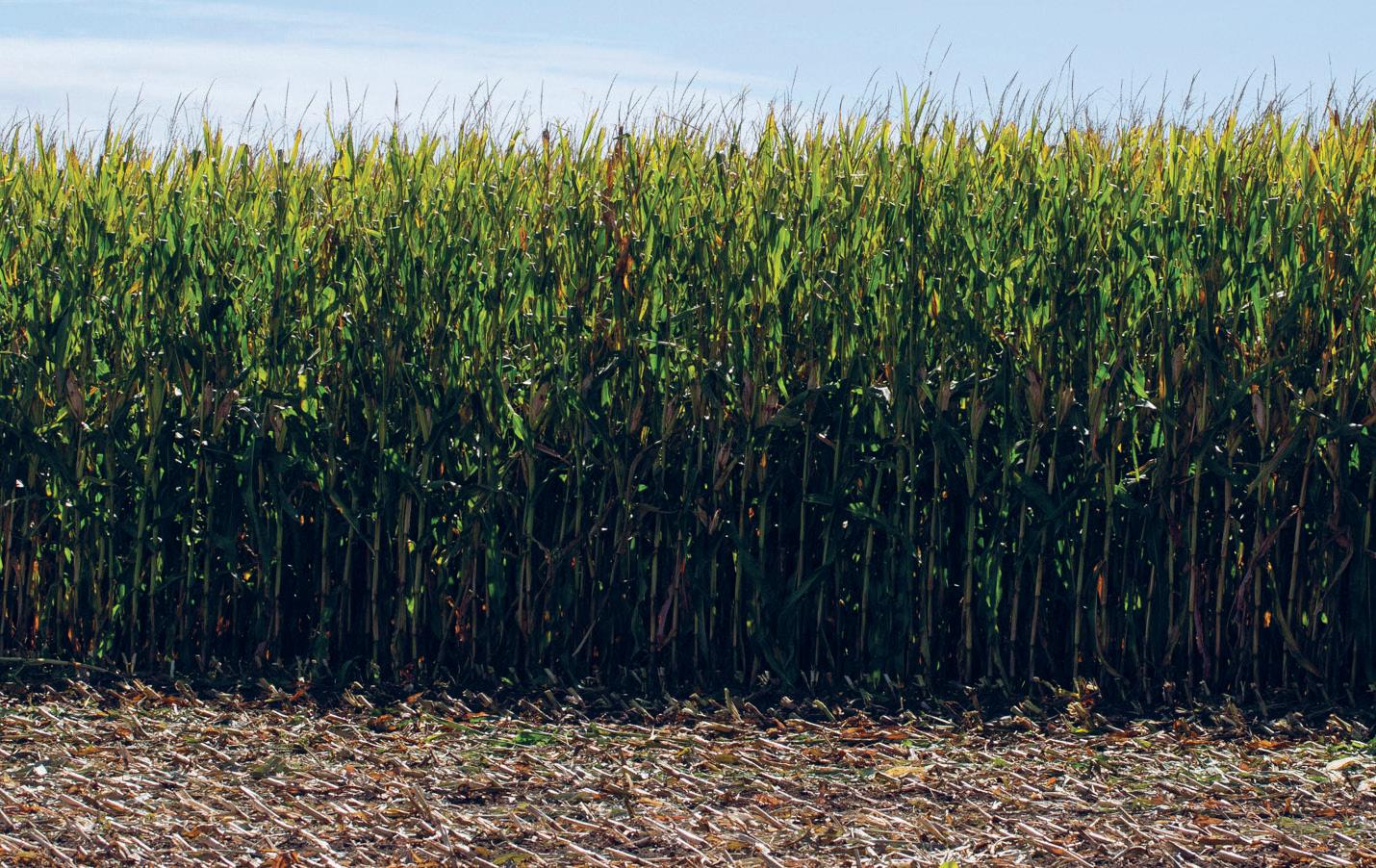
Here we showcase two very different approaches, both focussed on being future ready.

Mark & Catriona both grew up in farming families – in fact, Catriona’s parents were kiwifruit pioneers in the late 1970s. Today they run the 17ha Coastal Kiwis Organic Orchard in Opotiki, and their kiwifruit is exported to over 15 countries around the world. Their innovative approach is what won them the title of the 2018 Ballance Farm Environment Awards National Ambassadors.

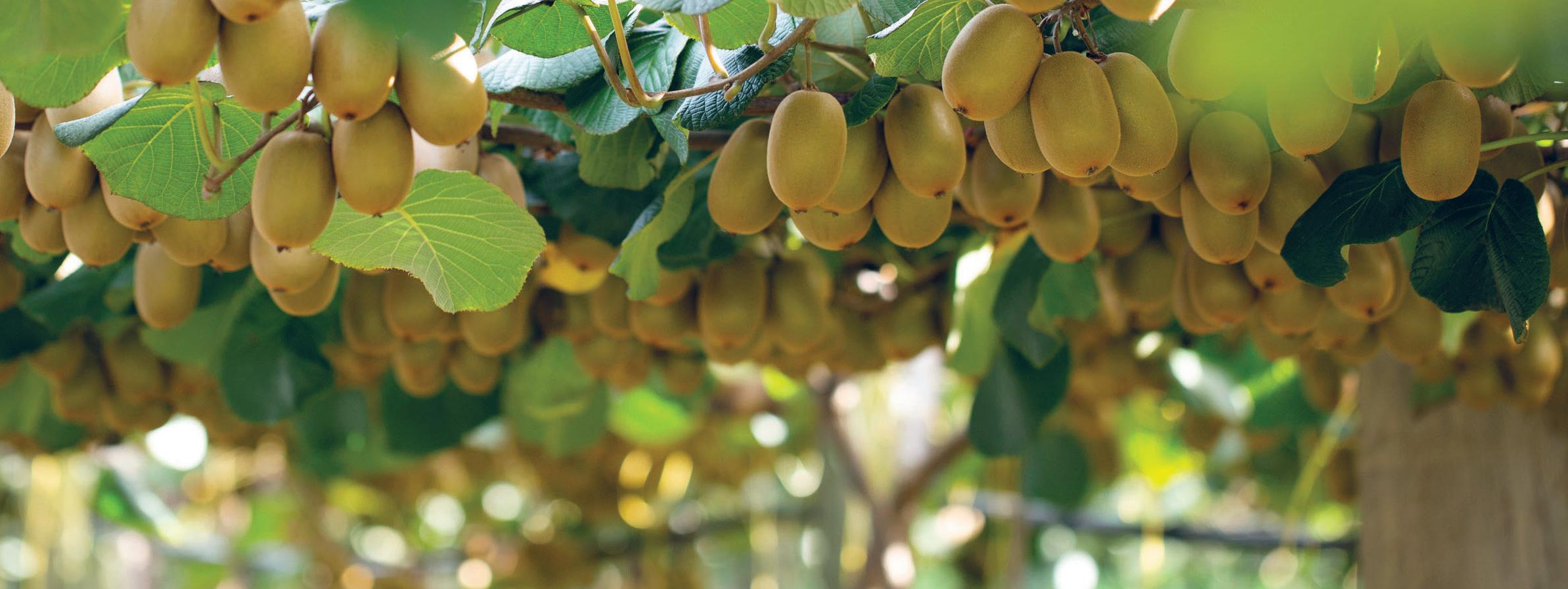
Eric & Maxine operate a 490ha arable farm in the Ashburton District. They grow a variety of crops including wheat, specialist grasses for seed, spinach, radish, red beet, oil seed rape, red clover and alternative pasture species, plantain and chicory. They won the title of the 2011 Ballance Farm Environment Awards Canterbury Regional Supreme Winners, but they have another claim to fame: setting the Guinness World Record for the highest wheat yield per hectare in 2017 and again in 2020.
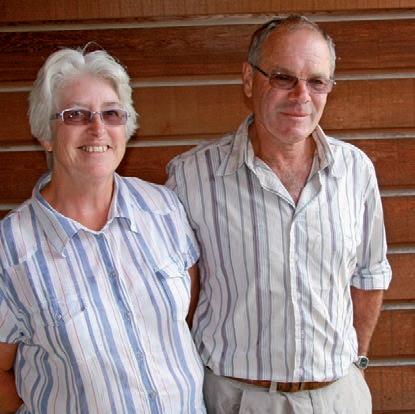
Efficient nutrient use is critical to productivity and sustainability on farm. It’s also vital to soil health. Finding the optimal balance of nutrients helps manage costs, maximise yields, and reduce nutrient losses. That’s why nutrient efficiency is a key pillar of Ballance with Nature.
Mark & Catriona: “Our business is underpinned by a reliable, efficient nutrient programme. As a predominantly kiwifruit orchard, we only harvest once a year. With 50 to 60 tonnes of fruit per hectare leaving our gate at once, we need our nutrient programme to be as efficient as it can be.”


Maxine & Eric: “Looking after the environment is the main thing. It also means looking after your farm and your soil. You don’t want to degrade your farm by overusing nutrients.”
Mark & Catriona: “One of the best things we did was breaking the orchard down into five different soil areas. Another was buying a soil probe that measures temperature. As we come out of winter into the springtime, we watch the soil temps and observe signals from the environment so we know when the optimum time is to apply nutrients.”
Maxine & Eric: “We’ve been doing variable rate spreading for 15 years. Intensive soil testing is undertaken every second year and variable rate spreading maps are generated from this. This evens up the fertility across the paddock, giving more consistent yields. It also ensures we don’t overuse nutrients.”
Mark & Catriona: “One challenge that was highlighted during COVID was access to supply, not having a wide range of products to choose from. Especially as we’re certified organic, and adding new products to our nutrient programme requires a bit of trial and error.
“Also, as a horticulture business, we find that the different varieties we grow have slightly different timings and requirements.”
Maxine & Eric: “Cost is a big one. Variable rate nitrogen spreading, especially with sprayers, necessitates changing nozzle technology. This comes at a price, but it is worth it for the efficiency gained. We need to be mindful of disease resistance and some weed resistance occurring, plus the loss of some agchem as is occurring elsewhere.”
Mark & Catriona: “We worked with Ballance on an organic suite of products to give growers more choice in the marketplace. And we use different equipment, like a smaller spreader calibrated for more accuracy, to get the most from smaller volumes of product.”
Maxine & Eric: “We’ve been doing these things over many years so cost is less of a barrier. Someone who looks at what we’re doing right now might be put off by the expense. It’s about having a long-term plan – the results will come.”
What are some of the nutrient efficiency practices being looked at in the future?
Mark & Catriona: “When we were in Italy we learned about their methods of fertigation, adding nutrients to irrigation systems.
“Food wastage is something we’ve been considering lately too. So much fruit is fully grown and doesn’t even make it to market. There’s a huge opportunity there.”
Maxine & Eric: “Pulsating nozzles for nitrogen variable rate application. The cost of a spray boom is still fairly high, but they’re getting cheaper all the time. The key is keeping an eye out for new technology. Also more precise ways of measuring nitrogen and other elements such as satellite imagery and drone technology.”
What’s exciting about the future of farming in New Zealand?
Mark & Catriona: “Our business is about growing food and improving our soil. Today we’re kiwifruit growers, but with a good supply of resources, we’re ready to grow whatever the market needs. We’re excited about future varieties of plants. We’d also love to see more talented young people get into ag and hort science careers, that’s the area that excites us too.”
Maxine & Eric: “New Zealand’s got great potential. The diverse climate and land mean we can adapt quickly to changes, it is a big advantage for us.
“In terms of technology, Precision Ag for the application of agchem & fertilisers, and more precise measurement of crop water requirements would be desirable. Being able to utilise some form of gene editing technology would probably be our greatest step forward, building disease resistance into crops to minimise use of agchem.”


Making it easy for you to care for and protect your natural resources.
If the natural world is healthy, so too are the people.
Taiao ora, Tangata ora.
EDITORIAL
Bryan Gibson | 06 323 1519
Managing Editor bryan.gibson@agrihq.co.nz
Craig Page | 03 470 2469 Deputy Editor craig.page@agrihq.co.nz
Claire Robertson
Sub-Editor claire.robertson@agrihq.co.nz
Neal Wallace | 03 474 9240
Journalist neal.wallace@agrihq.co.nz
Gerald Piddock | 027 486 8346
Journalist gerald.piddock@agrihq.co.nz
Annette Scott | 021 908 400
Journalist annette.scott@agrihq.co.nz
Hugh Stringleman | 09 432 8594
Journalist hugh.stringleman@agrihq.co.nz
Richard Rennie | 027 475 4256
Journalist richard.rennie@agrihq.co.nz
Nigel Stirling | 021 136 5570
Journalist nigel.g.stirling@gmail.com
PRODUCTION
Lana Kieselbach | 027 739 4295 production@agrihq.co.nz
ADVERTISING MATERIAL
Supply to: adcopy@agrihq.co.nz
SUBSCRIPTIONS 0800 85 25 80 subs@agrihq.co.nz
PRINTER
Printed by Stuff Ltd
Delivered by Reach Media Ltd
Andy Whitson | 027 626 2269 Sales & Marketing Manager andy.whitson@agrihq.co.nz


Steve McLaren | 027 205 1456
Auckland/Northland Partnership Manager steve.mclaren@agrihq.co.nz
Jody Anderson | 027 474 6094
Waikato/Bay of Plenty Partnership Manager jody.anderson@agrihq.co.nz
Andy Whitson | 027 626 2269 Lower North Island Partnership Manager andy.whitson@agrihq.co.nz
Omid Rafyee | 027 474 6091 South Island Partnership Manager omid.rafyee@agrihq.co.nz
Debbie Brown | 06 323 0765 Marketplace Partnership Manager classifieds@agrihq.co.nz




Grant Marshall | 027 887 5568 Real Estate Partnership Manager realestate@agrihq.co.nz
Andrea Mansfield | 027 602 4925 National Livestock Manager livestock@agrihq.co.nz
PUBLISHERS
Dean and Cushla Williamson
Phone: 027 323 9407 dean.williamson@agrihq.co.nz cushla.williamson@agrihq.co.nz

Farmers Weekly is Published by AgriHQ PO Box 529, Feilding 4740, New Zealand
Phone: 0800 85 25 80
Website: www.farmersweekly.co.nz
ISSN 2463-6002 (Print)
ISSN 2463-6010 (Online)
Weaker demand for infant formula dairy base has caused Synlait to knock $20 million off its net profit after tax guidance for the 2023 financial year.

An estimated $16.5m was from “further demand reductions, mostly from one of Synlait’s customers”. Although not named, the major customer and part-shareholder is a2 Milk Company.
The remainder of the net profit after tax impact is attributable to higher financing and supply chain costs.
Westland Milk Products has announced it’s building a $70 million lactoferrin plant at its Hokitika facility.
The investment, supported by its parent company Yili Group, is expected to see production capacity triple for the multifunctional protein. The plant upgrade follows a $40m investment that doubled consumer butter production at Hokitika.
Ravensdown has established a new commercial entity, Agnition, aimed a providing increased innovation for farmers and growers.
Ravensdown chief executive Garry Diack said Agnition’s mission is to build, grow and invest in world-leading Ag-IP and innovations and turn them into valued products and solutions to combat climate change, and provide enhanced productivity. He said Agnition is a structural response to Ravensdown’s strategy of “Smarter farming for a better New Zealand”.
The Environmental Protection Authority is seeking information on how aquatic herbicides containing specific chemicals are used in New Zealand.
Aquatic herbicides are used across the country to control pest plants in ponds, lakes, and rivers. The EPA began reassessing aquatic herbicides in September 2022 after identifying significant new information about the effects of certain chemicals, including diquat dibromide, in some products.
 Hugh Stringleman MARKETS Livestock
Hugh Stringleman MARKETS Livestock
DAIRY herd clearing and dispersal sales have been more numerous this autumn and cow values are down as much as $1000 compared with a year ago.
Top quality registered cows and those with LIC contracts are fetching high prices but the averages for most herd sales have been around $2000 compared with closer to $3000 last autumn.
A large clearing sale for Peter and Trixie Foote, near Whangārei, conducted by Link Livestock and carried on bidr, went from 10.30am to 5pm to sell 380 lots of Holstein Friesians.
Agent Grant Aitken said the average across all sales was $2000, including empties, and the top price was $5400 paid by a Northland buyer.
The Rock View Holstein Friesian dispersal sale for Gary and Karen Peters, Stratford, made a top price of $25,000 for Rock View Doorman Selice, a rising 5-year cow with excellent figures.
The sale of 110 mixed age cows,
Andrew Hoggard was encouraged by elements of the report, especially on afforestation and streamlining the process for releasing new products.
He was less so by the lack of discussion on reviewing targets and the focus on gross emissions rather than warming effects.
He was similarly sceptical about suggestions about greater use of online recording and monitoring of farm data, saying
38 in-calf heifers, 80 calves and some semen straws drew 335 watchers on bidr, of whom 119 were registered buyers, 55 made bids and 36 of those bidders were successful.
“The online platform extended the reach of the sale and cows will be going to all parts of the country,” PGG Wrightson regional manager and auctioneer Andrew Gibson said.
The increase in dairy clearing and dispersal sales in Taranaki this season stemmed from reasons such as the end of leases, retirements, sharemilkers getting placements, and farm sales.
Simon Payne New Zealand Farmers LivestockThe sale averages were excellent for this year’s market; $3870 for the cows, including empties and all ages, and $3542 for the in-calf heifers.
Also in Taranaki, at Eltham, an in-calf dairy sale of 250 Friesian
the system’s current mixed performance does not instil confidence.
DairyNZ chair Jim van der Poel had yet to read the full report, but at first glance said the commission’s recommendations came as little surprise.
The report’s emphasis on firming up an emissions pricing plane by 2025 had van der Poel concerned about the short timeframe and the pressure that is coming to meet that deadline.
“We think there’s absolutely a risk,” he said.
and Friesian-cross cows made a top price of $6600 and averaged around $2200.
The Wells family built up the herd over 35 years and achieved 480kg-plus per cow with a BW of 191 and PW 224.
New Zealand Farmers Livestock agent Simon Payne said more dairy clearing and dispersal sales in Taranaki this season stemmed from reasons such as the end of leases, retirements, sharemilkers getting placements, and farm sales.
Buyers are cautious for cashflow reasons and may be in the market because of higher empty rates. Cow and heifer values are as much as $1000 lower than this time last year.
Payne referred to an annual heifer auction of 102 lots which last year averaged $2800 and this year $1833.
The Sabarr Trust herd dispersal on April 17 saw 190 Holstein Friesian cows average $2000 and 50 in-calf heifers $1933, with a top price of $4200 as the vendors switched to smaller cows.
At Gordonton, central Waikato, the Dickson family dispersed an A2 herd of 159 lots and achieved
The biggest barrier in meeting that deadline was waiting for the government to make a decision on the industry’s emissions pricing plan.
“They basically have to stand it up and they have to decide. We had an agreement in place before Christmas and the industry has met all of its deadlines and now we’re waiting for the government to say whether they still support that or that they have a different view.”
The report vindicates Beef + Lamb NZ’s call for limits on the
a top price of $3200 and averaged around $1800.
In Northland, Lodore and Kauri Ayrshires sold 29 in-calf heifers for an average price of $2608 and a top price of $5100, along with 11 heifer calves averaging $1100 and a top price of $1600, twice.
Those averages in 2022 were $3265 and $2380 respectively.
A three-day clearing sale for Graham and Glenys Bell, Milldale Farms, Te Aroha, was conducted online only, for the sale of 280 cows, 72 in-calf heifers and 57 heifer calves, all Jersey and Jerseycross breeding.

ability of fossil fuel emitters to offset their greenhouse gas emissions by planting trees on productive farmland, BLNZ chief executive Sam McIvor said.
Forestry has a role, but the current policy settings incentivise over-planting, which McIvor said undermines NZ meeting its emissions reduction targets and has significant negative consequences for rural communities.
McIvor welcomed the commission’s view that the

The top prices were $11,000 on the first day, $9800 on the second day and $6500 on the third.
Part two of the Dick and Faye Post Posterity Jersey dispersal at Tauwhare, near Hamilton, was conducted on April 26, selling 82 in-calf heifers, after a very successful sale of mixed age cows and heifers last year.
Lot 8, Posterity Rick Lynda 2159, A2A2, contracted to CRV, and expected in calf to Puriri Magnum Striker, made the top price of $7100, sold to Nathan Williams. The average price was $2417 for 74 lots sold.
ETS needs fixing, along with its reiteration of support for a farm-level system for managing agricultural emissions.
“However, there is a significant amount of work that needs to be done to set up a credible measurement and reporting system, which would be the first in the world.
“We strongly recommend focusing on getting this set up and working properly, but not introducing a price until sequestration and mitigation issues have been worked through.”
THERE is increasing uncertainty over exactly when exporters will be able to take advantage of New Zealand’s free trade agreement with the United Kingdom.
Expectations that the deal could come into force ahead of schedule in early May seemed to be confirmed when the Trade (Australia and NZ) Bill 2023 received Royal Assent in the UK in late March.
Several pieces of so-called secondary legislation still needed to be ticked off, however, before the deal’s start date could be agreed with NZ.
Trade Minister Damien O’Connor said at the time that the British government had advised him that secondary legislation was on its way to being passed and the agreement was set to enter into force in the first half of this year.
Farmers Weekly understands that industry groups were given a signal around this time that the start date was likely to be the first week of May.
Now it can be revealed that a single piece of secondary legislation needing to be passed by the Welsh parliament – relating to changes to government procurement rules it must now follow as a result of the trade deal with NZ – is taking longer than expected and is holding up confirmation of the deal’s start.
An early May start for the trade deal is now off the table and there is uncertainty over exactly when the Welsh parliament will get around to passing the legislation.
“We were working to [entry into force] of early May. That was where it was for a number of months.
“This could shift it out to the first or second week of June,” a source briefed by NZ officials said. However the source said there is uncertainty around exactly when the legislation will be presented
to the Welsh parliament and what will happen if it is not passed in the next session.
The Welsh parliament is due to convene again in early May and sit for a period of 40 calendar days, including recesses.
Eyebrows were raised after the British only communicated the possibility of a delay the day after the UK had been formally accepted into the CTPPP trade deal. ‘The timing was interesting.’
“We do not have 100% clarity on when the Welsh are going to introduce the secondary legislation,” the source said.
“If they take the 40 days then that takes us to the end of June.
“You are not talking about a delay to any great degree but it is frustrating.”

Sheep Measles are caused by a tapeworm Cysts cause undesirable blemishes in sheep meat. These cysts can disrupt the lamb export market and cost our farmers financially!
All dogs need to be dosed for sheep measles at least 48 hours prior, and less than 30 days, of going on farm. Take proof of dosing - download a certificate from our website.
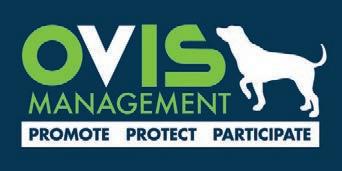
"Scoop the Poop" - remove all evidence that your dogs were there!
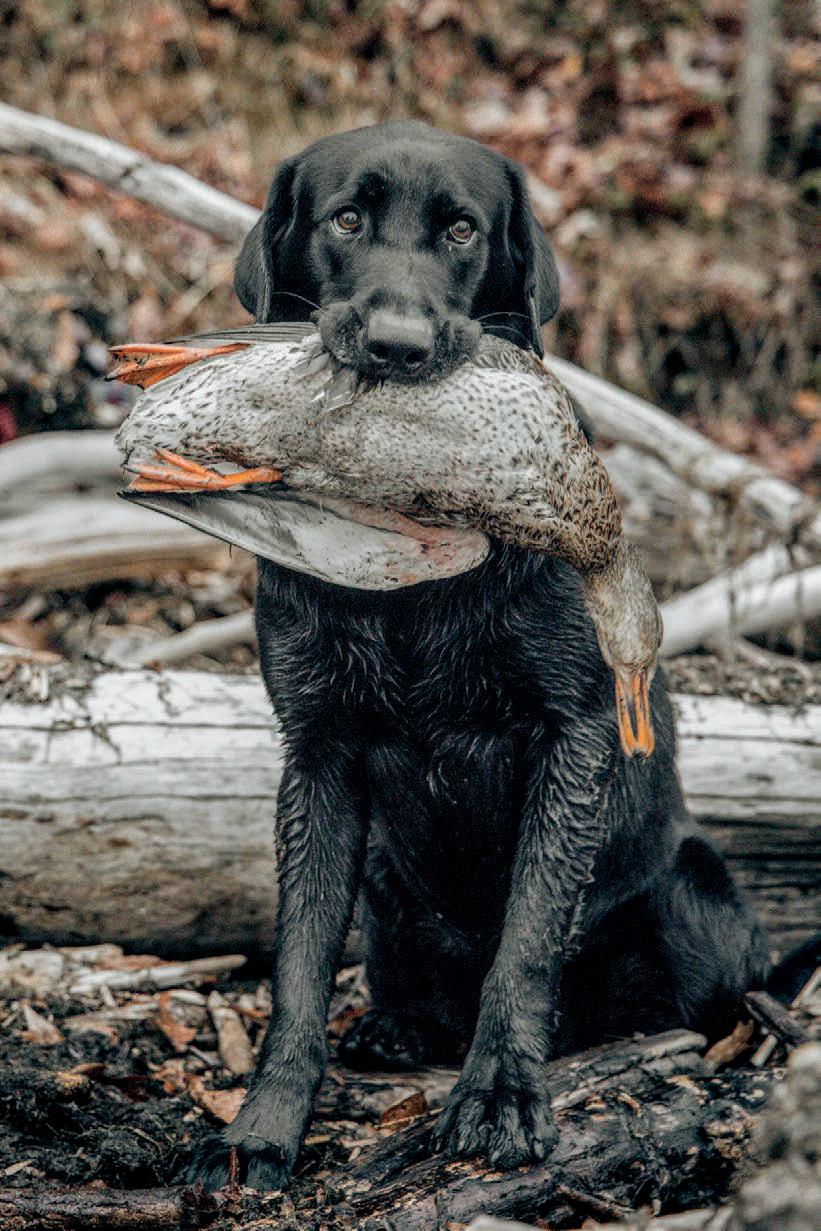
The source added that although NZ officials are hopeful the legislation will be passed during the Welsh parliament’s next session, there are no guarantees.

“Basically the tariff schedule has been released with a note that says the UK government will advise by letter of the entry into force date and that is as much as we know at this stage.”
The source said the majority of the Welsh parliament is understood to support the free trade deal with NZ and there is no suggestion at this stage that it intends to derail its implementation by delaying the secondary legislation.
But there is frustration with officials in Westminster that they have been unable to get to grips with the relevant legislative timetables since the main legislation was passed in the House of Commons in London.
The source said this is possibly due to inexperience on the part of British trade officials.
“They have been in the EU since 1973 and there has been no precedent for the past 50 years because they just haven’t been doing trade deals.”
Eyebrows were further raised after the British only communicated the possibility of a delay the day after the UK had been formally accepted into the Comprehensive and Progressive TransPacific Partnership trade deal by its 11 existing members including NZ.
“The timing was interesting,” one source said.
Beef + Lamb NZ’s regional manager for the UK and Europe, Alex Gowen, remained hopeful the deal could enter into force by the middle of the year as originally hoped for.
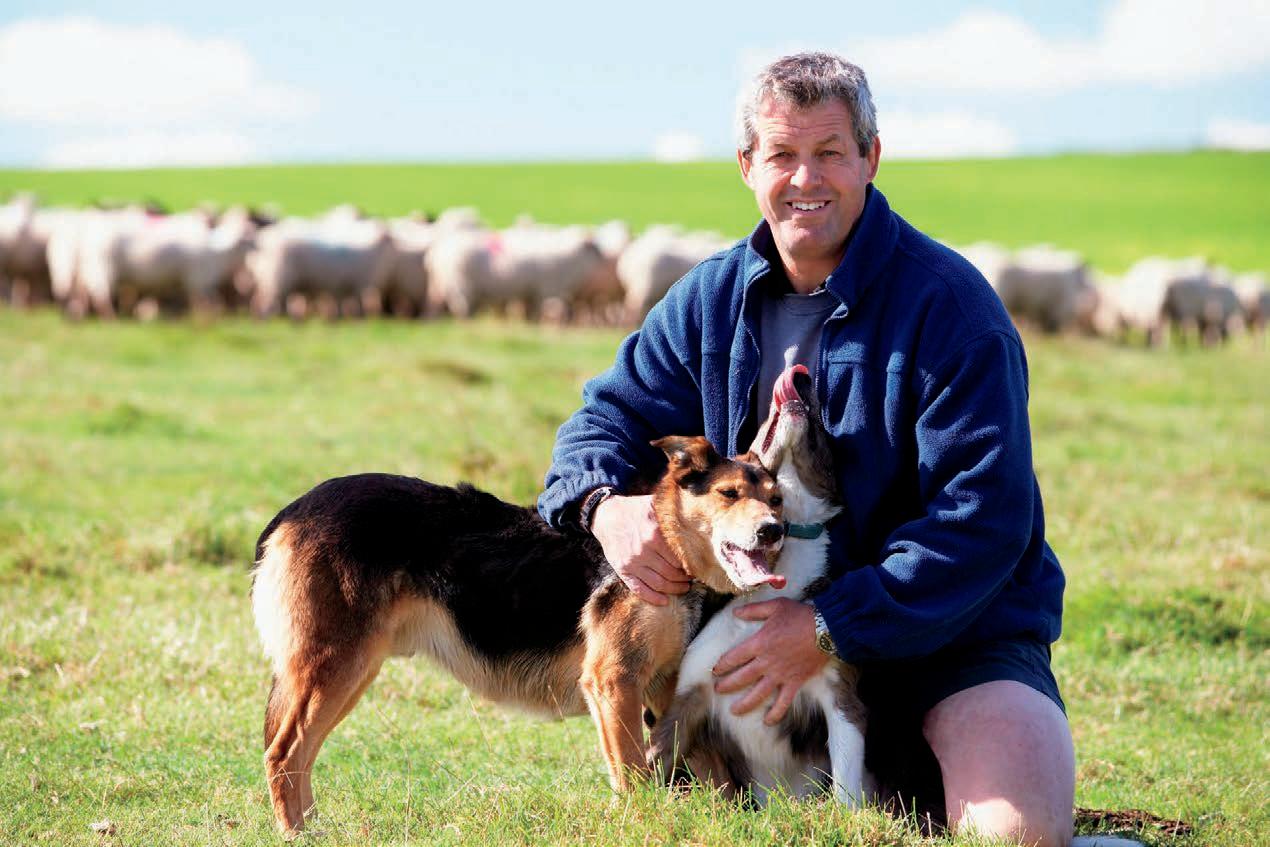
He said delays are frustrating for exporters who need certainty so that they can plan marketing and logistics.
This was particularly the case for beef exporters, who are anxious to take advantage of significant
increases in tariff-free quotas as a result of the deal.
“As far as sheepmeat is concerned we have ample access relative to our marketing needs, but on beef it is important to have early clarity on timeframes.”
It is understood Australian beef exporters have been stacking up product in bonded warehouses in the UK ahead of an early-May start date for their own deal, which begins on the same day as NZ’s. Those exporters are now having to roll over those storage agreements at additional cost.
A dairy industry source said NZ dairy exporters are relatively relaxed at this stage about any delays.
The source said that might change the closer entry-intoforce gets to the start of the next calendar year.

A delay to implementation past January 1 next year would see the second annual tranche of tariff cuts on dairy products rolled over into 2025.
Keep our sheep sweet, NZ!

consumers to simply buy more frequently during the year,” Kang said.

BOKEUN Kang, Zespri’s regional market manager for South Korea, has some bold targets for a kiwifruit market that is already punching above its weight in the company’s global portfolio, claiming fifth spot for sales last year behind Germany.
This has come on the back of double-digit compounding growth over the past decade, peaking at 20% in the 2021 season as South Koreans’ appetite for SunGold kiwifruit continues to grow.

The sales of 12 million trays of kiwifruit last season consisted of about two thirds SunGold and came in a crowded fresh fruit market that ranks kiwifruit at 17th, with consumers on average making 2.1 purchases in a year.
“Purchasing penetration is only about 30% , compared to bananas at 90%, and we can see significant potential in encouraging existing

The growth phase has coincided with the gradual rollback of the stringent 45% tariff that was on kiwifruit before the New ZealandSouth Korea free trade agreement was signed in 2015.
At the time the tariff was recognised as one of the most punishing in the world, costing NZ growers the equivalent of about $8000 each every year.
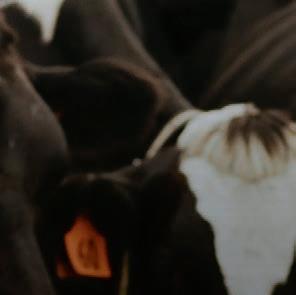

The tariff was phased out entirely by 2020 and Zespri has progressively bought the price of the fruit down, making it more affordable.
But Kang said it is not just repricing that has sharpened interest in kiwifruit, with a concerted, focused, marketing campaign aiming to build on South Koreans’ affinity for fresh fruit in a country that grows 80% of its own produce.
He said the growth is also “thanks to our heavy investment in the Zespri brand, and the quality that implies we have given consumers confidence they will
be getting a consistent product, something most other produce has not really been able to achieve, given its seasonality”.
With the new kiwifruit selling season just kicking off, he openly acknowledged the quality challenges the past season bought – something shared by most other Zespri markets – but said consumer confidence in the brand has been retained despite that.
He acknowledged the challenge of retaining the value proposition compared to price when NZ’s supply is looking variable, with a drop this year followed by a significant surge predicted next year.

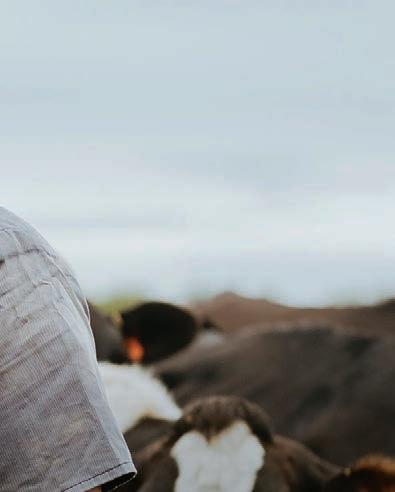



Despite NZ’s supply constraints for this season, Kang remains committed to the bold goal of hitting a target of $300 million in sales for 2025.


But he is also going a step further, with United States produce giant Dole firmly in his sights. With its sales of NZ$370 million a year in South Korea, Kang would like to knock it off its perch by 2027 to become South Korea’s largest fruit marketer.
Gaining and securing valuable year-round shelf space to achieve that is supported by South Korea’s home-grown Zespri fruit, much of which is produced on the southern island of Jeju.
The fruit has been grown in the country since 2004 through Zespri’s global supply programme, and the company has 200 canopy hectares and is initiating new plantings on the mainland for an operation now generating 500,000 trays. It is on target to reach 800,000 trays this year and 1 million next.
A battle for purchase platforms is also raging in South Korea at present, as more traditional retail giants like Lotte and E Mart start
to find themselves threatened by online ecommerce retailers thriving in the tech-savvy economy.



Overall Zespri’s sales are 40% retail, 50% wholesale and 10% on ecommerce platforms. As in China, ecommerce platforms surged over the covid outbreak, almost doubling from only a 6% share in 2020 to 10% now, and continuing to grow.
Because of consumers’ desire to “see, touch, smell” fresh produce, it is traditionally only about 9% of sales online.


But Kang said thanks to Zespri’s investment in quality consistency, achieved with even greater effort last season, it double that.
“For consumers, that Zespri brand is a guarantee the fruit they are ordering does not need to be seen first-hand to be bought.”
The ecommerce business is being boosted by collaborative work with YouTube influencers and aligning with the Naver online portal.
Sometimes known as the “South Korean Google”, Naver also makes use of paid links aimed at boosting business to consumer contact.
Linked with YouTube real-time live shopping shows, it allows consumers to ask questions in
real time and make purchases in a medium that is rapidly making traditional daytime retail TV channels redundant.
Despite South Korea slipping in population size, down 128,000 in the past year, and rapidly aging, Kang said there is significant opportunity to increase demand from young families, currently 18% of the market.
Appeal is aided by the “Kiwi Brothers” animated kiwifruit developed three years ago; it is still popular with young audiences in both Japan and South Korea.
Key account manager Jusu Jung said the aim is to achieve the sort of penetration bananas have, at 90%-plus.
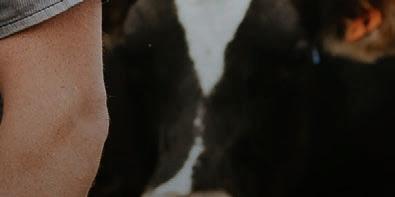
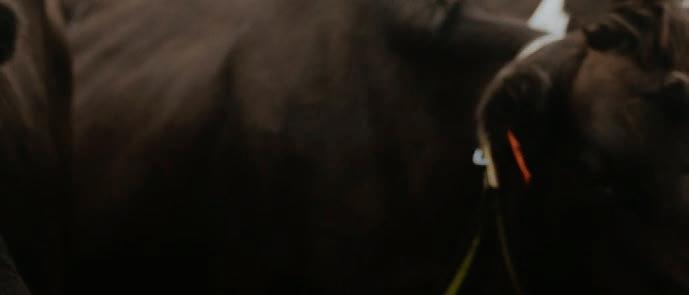
“And we also see lessons to learn from the likes of pineapples where inconvenience in eating has been overcome by retailing without the leaves and spines.
“With our Fresh Cut project now underway, we aim to learn from pineapples and are working on a retailed fruit that has the skin removed and is pre-sliced for convenience, sold in sustainable packaging,” he said.
Good wintering is great farming
Wintering practices on farm have really improved over the past few years. Let’s keep going and make 2023 even better for our animals and our environment.ON THE SHELF: Home-grown Zespri fruit has helped secure valuable year-round shelf space in South Korea. Richard Rennie travelled to South Korea with funding from the Asia New Zealand Foundation. Richard Rennie in South Korea MARKETS Horticulture PREMIUM: Zespri’s Bokeun Kang says South Korean Zespri distributors are hoping they will be able to meet growing demand for SunGold this season in the face of tight supplies.













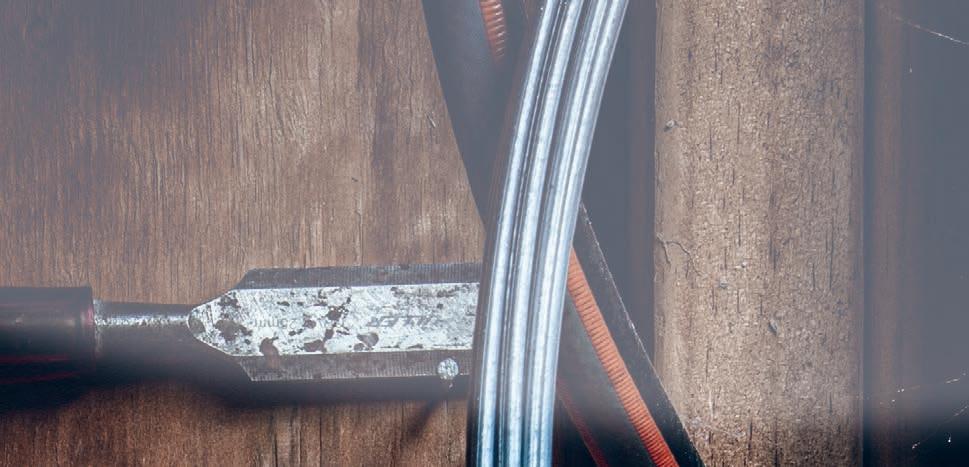


worlds in Latvia in October to prepare for.
VETERAN Timaru

ploughman Bob Mehrtens will literally be breaking new ground when he heads to Latvia and Estonia to compete on the world ploughing stage.

Mehrtens claimed the reversible plough title at the recent New Zealand Ploughing Championships in Milton, where Southland crop farmer Mark Dillon won the conventional silver plough title.
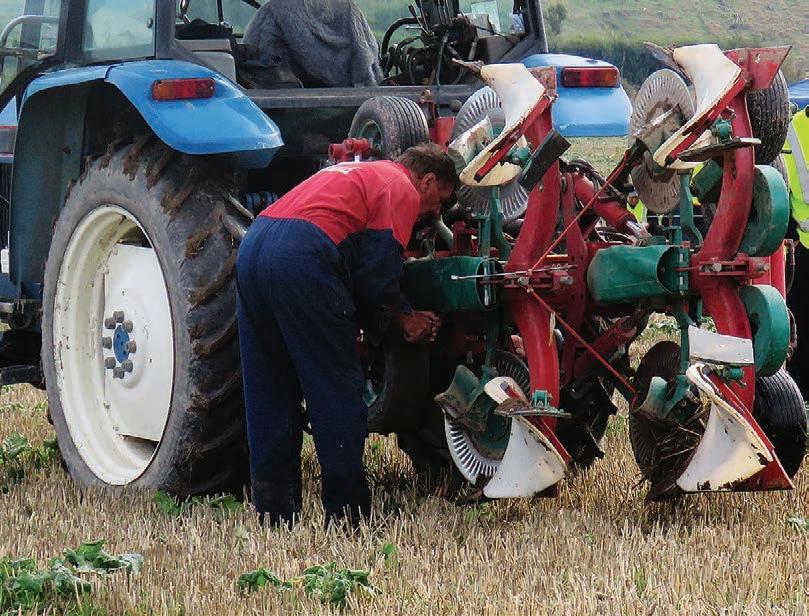
Those victories entitle the pair to compete at the 2024 World Ploughing Championships in Estonia.
But first, Mehrtens has the 2023
It is the first time the ploughman has visited either country, despite representing NZ on the world stage “14 or 15 times” since competing in the Netherlands in 1989.
He admits to not knowing much about either country but is excited at the prospect of experiencing new cultures and meeting new people.
“I have met people who plough from Estonia but I don’t think anyone knows a lot about Estonia. I’ll look it up on the computer one night when I get around to it,” Mehrtens said.

Mehrtens, who runs a transport business in Timaru, was pleased with his performance at the nationals and said the paddocks used for the competition suited him.
“It was very, very old grass so I knew that it would be pretty difficult for a lot of them to handle that.


“It’s the sort of soil that I like to plough and suited my plough nicely. It wasn’t stony and had good moisture, which is very important.”



Despite being a regular national
winner, Mehrtens said it is satisfying to know he still has what it takes to win a title.
“There’s no room for error now. The guys are creeping up quietly, which is good to see. The young fellas are keeping up and keeping you on your toes.”

For Dillon, it was just his second national title in more than 20 years of competing and Estonia will be his second attempt at a world title. He competed in France in 2014 and finished 18th.
“It was a big learning curve going to your first worlds. I know what I’m in for now, and will be a bit more prepared.”
The key will be to get as much as practice as possible in the leadup to the event and then head to Estonia in plenty of time to train in that country.
Dillon was a convincing winner in the conventional plough category and was happy with his performance.
“The aim of the game is to win. I was really happy with my stubble plot and the grass one was hard work. I had to work hard all day but I ended up coming out with a good result.”
Ploughing is a family affair for the Dillons and three generations were involved in the Milton event. Mark’s father Richard was a judge and his son Blain competed in the contemporary plough section.
Dillon is unsure if he will take his Massey tractor and plough to Estonia; it will depend on cost.
“I’d like to. Once you get your own tractor and plough set up it’s what you’re used to and what you know.”
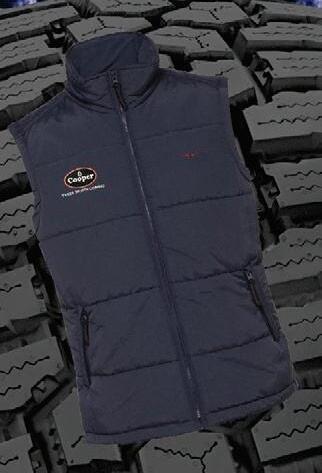
Mehrtens’ trusty 1998 Ford 7740 tractor and plough are about to be shipped to Latvia, and will stay in Europe for next year’s competition.
“We’ve worked out it will take about 6-8 weeks to get there but we’re sending it over earlier just to make sure,” he said.
Competing internationally is not cheap, but Mehrtens said it’s




ONE of the youngest competitors was 13-year-old Jake Watt of Romahapa, near Balclutha.
Jake took part in the contemporary section, under the watchful eye of his grandfather John Watt, a former national ploughing champion and competitor at world championships.
He was even using his grandfather’s 1966 International tractor, and it


not something he gives too much thought to. His best result was a second placing in the reversible plough in Kenya in 2017 and the prospect of going one better keeps him going.
“It’s a bit of a buzz and nice to get the chance to represent New

proved the lucky charm as Jake finished second in the competition
Jake’s parents, Chris and Lisa, said he had been interested in ploughing for a while, helping plough paddocks around the family farm, but this was his first national competition.
“It’s an excuse for him to drive tractors,” joked Chris.
“He enjoys it and it’s great he has Dad there to pass on his knowledge and help him out.”
Zealand. That’s what we strive for.
“At the end of the day once you are looking at a lid, you can’t get out. So you’ve got to enjoy it while you can.
“I love it. It’s all part of the challenge, and being part of the rural community is the best part.”
At the end of the day once you are looking at a lid, you can’t get out. So you’ve got to enjoy it while you can.Bob Mehrtens Timaru ploughman STEADY: Jake Watt is a picture of concentration as he competes in the contemporary section of the ploughing championships.
LEVELLING OUT: Westpac economists Nathan Penny, pictured, and Satish Ranchhod predict a return to pre-covid farm cost in ation rates of around 2% in 2024.
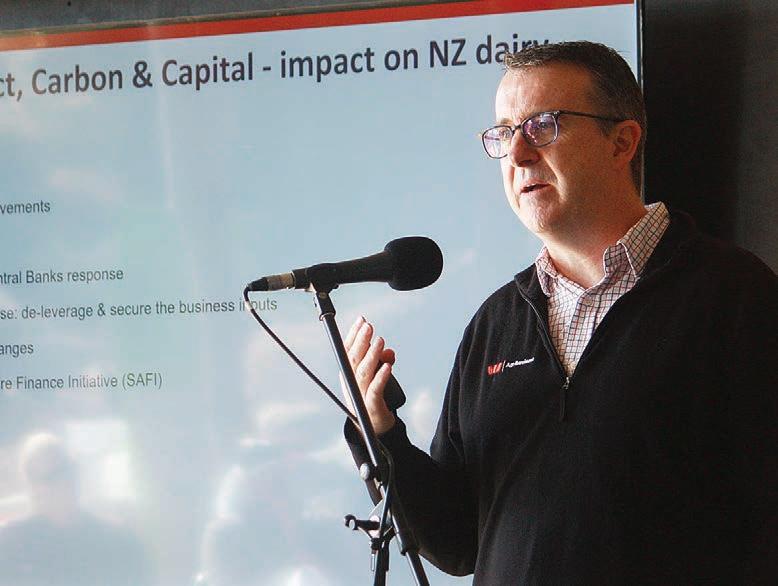
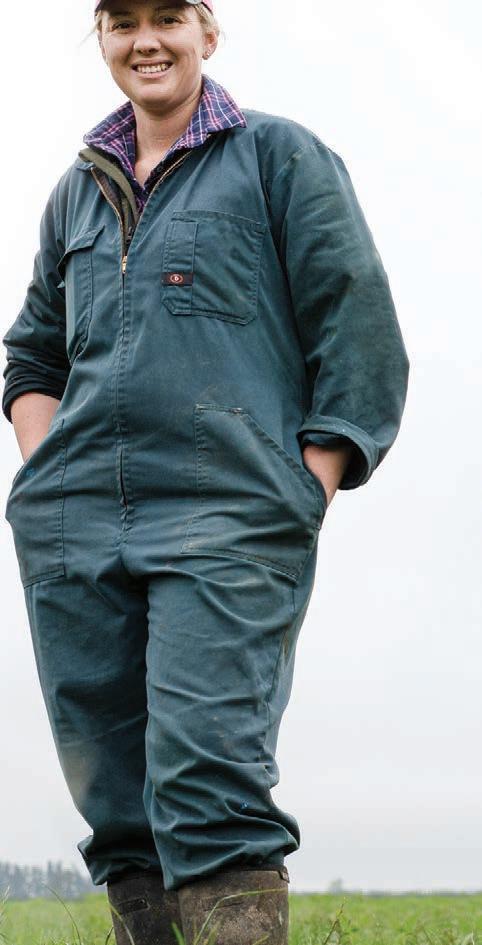
Senior economists Nathan Penny and Satish Ranchhod base their predictions on much lower feed, fertiliser and fuel costs.
RURAL cost inflation doubled in the past year to reach 15.3% in December 2022, but Westpac economists expect it to fall rapidly, to 4% by December 2023. For 2024 they predict a return to pre-covid farm cost inflation rates of around 2%.
Continual wet weather during spring and summer left most farmers with ample pasture and substantially reduced the likely demand for imported feedstuffs, they said.
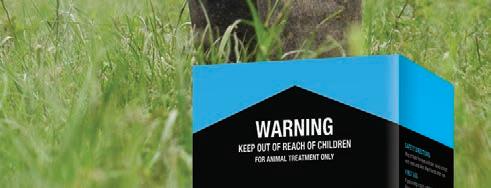
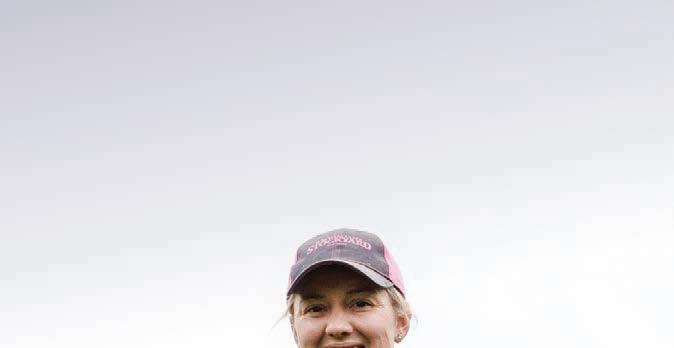


Fuel prices have fallen about 20% since the middle of 2022 and local fertiliser prices have fallen considerably, too, and are likely to fall further. The global price for urea is down 66% from its peak.
“Rural cost inflation has peaked, but that is not to say the picture isn’t still ugly,” Penny and Ranchhod said.
Debt servicing costs rose 45% over 2022, fertiliser was up 33% and fuel 28%.
Feed cost inflation was 13.5% and is expected to remain high during 2023 and 2024 until the effects of the widespread wet weather are known.

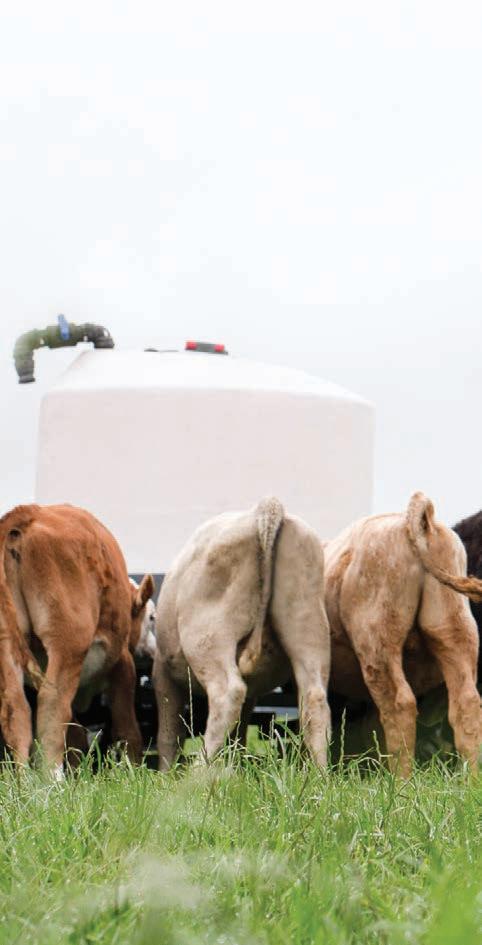
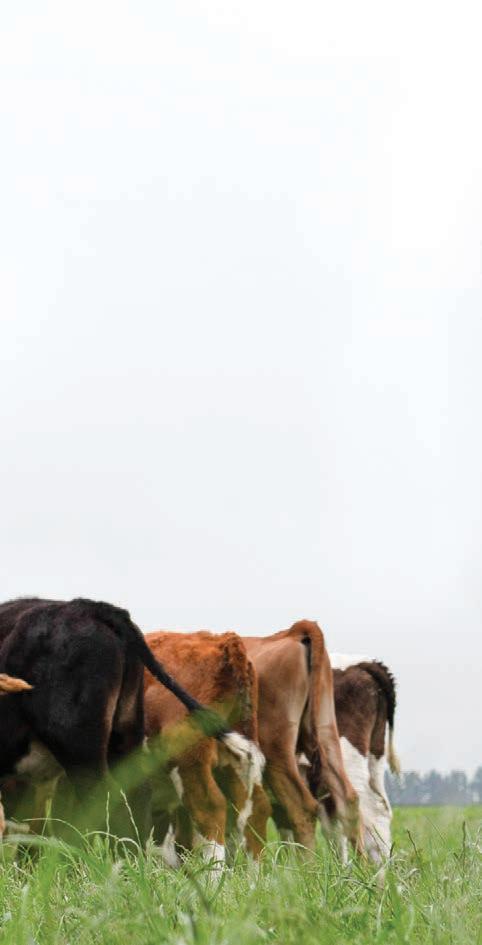
“With feed costs the largest component of most livestock farm budgets, this is a welcome development on the inflation front,” they said.
With feed costs the largest component of most livestock farm budgets, this is a welcome development on the inflation front.
Wage costs will remain high and most measures are at or near record highs, including low unemployment figures and increases to minimum wage rates.

The Westpac economists think the rate of cost inflation will slow dramatically but they don’t expect the cost structures on farms and orchards to decline.
“We don’t expect costs will fall back to previous levels – in other words, cost structures are likely to remain permanently higher.”
For example, Dairy NZ said dairy farm working expenses were in the low to mid-$4 range between 2017 and 2021 but are now in the low to mid-$6 range.

In better news, Westpac expects farm and orchard margins to widen again as much lower cost inflation comes along with higher farmgate returns.
These returns have already risen for meat prices and should go up for the smaller kiwifruit and apple crops this year.
Additionally, Westpac holds a very optimistic view on the 2023-24 milk price of $10/kg milksolids.
Agricultural economist Phil Journeaux was not as optimistic about falling farm inflation as the Westpac economists.

“The non-tradable components of inflation remain high – wages, debt servicing and food prices,” he said.



“And I am less optimistic about fertiliser coming down until Ukraine has won its war.” Journeaux agreed that the cost structure of farming is now permanently higher than a couple of years ago.





“ The gains we’ve seen
Ensuring the sustainability of New Zealand’s primary sectors and building on our position as one of the most sustainable global producers of food and fibre continually requires new innovation and industry collaboration.





As the largest agribusiness event in the southern hemisphere, Fieldays® is the best place to see new challenge-solving innovations, like the automatic water quality monitoring ‘waka’ from RiverWatch, and join the conversation on sustainable solutions. Start embracing a more sustainable future at Fieldays 2023.


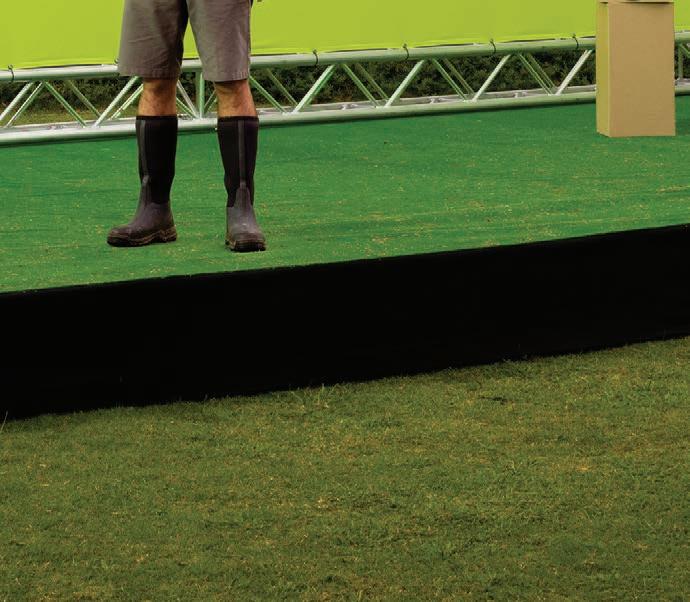

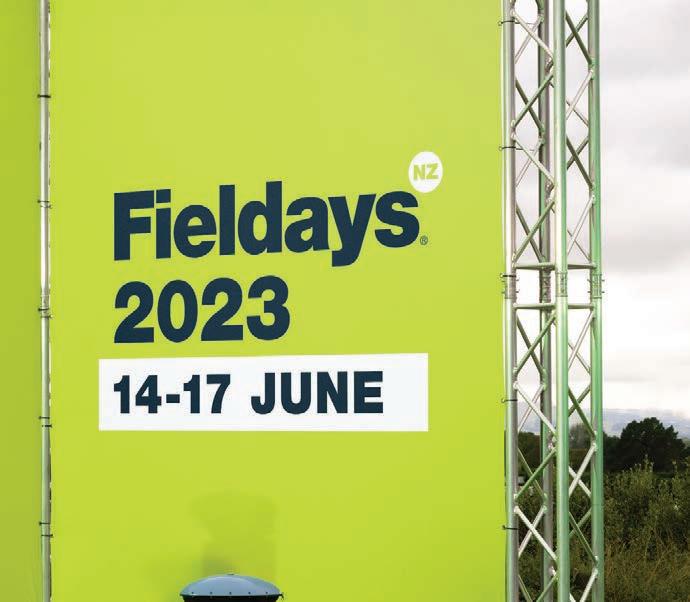

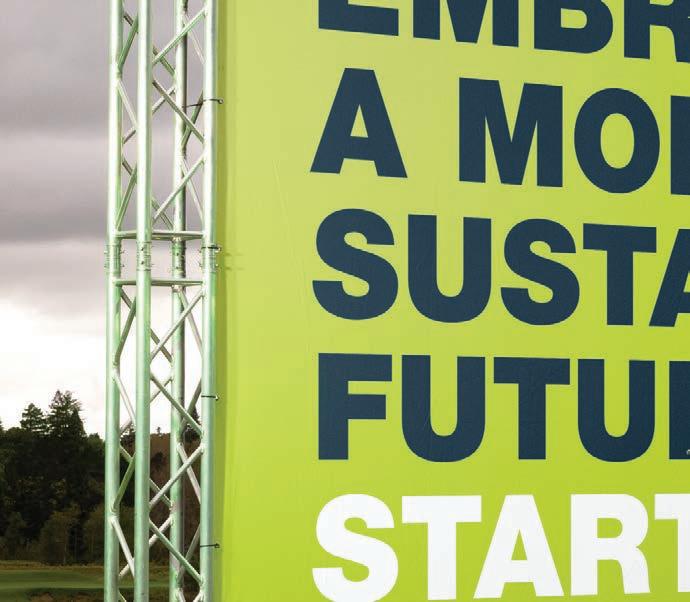

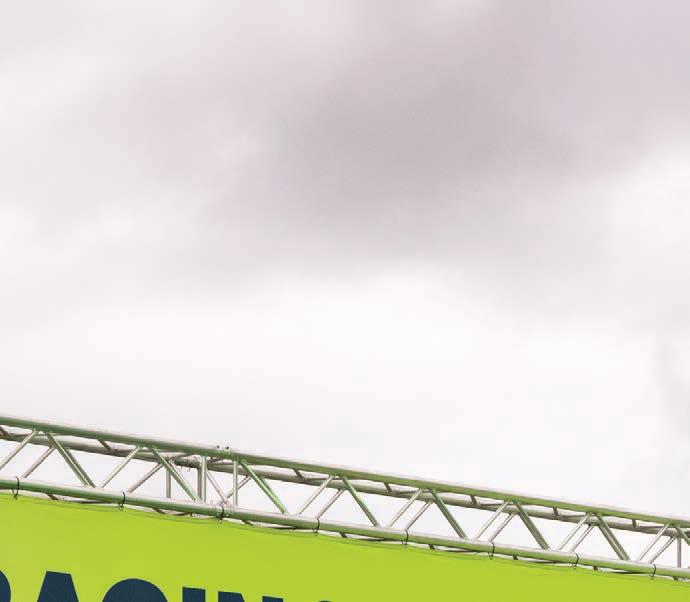
GET YOUR TICKETS









Stacey knows how important it is to fuel her body with the right stuff, which is why she’s joining Beef + Lamb New Zealand to remind Kiwis that the quality, taste, and nutrition of New Zealand beef and lamb is second to none.




There are many good things in life we can all identify with: triumphs in sport, family barbecues, and holidays to name a few. These are made even more memorable centered around a delicious meal of beef or lamb.


With Stacey on our team, we’ll transport Kiwis back to cherished moments, reconnect them to their love of New Zealand beef and lamb, and instil pride in our farmers and world-leading farm practices.

WORK TOGETHER: Hundreds of catchment groups have formed around the country, doing good work on riparian planting and pest control, but a Cawthron Institute report found these e orts can be better co-ordinated through having an action plan.
CATCHMENT groups should consider creating action plans outlining their goals, and strategies to achieve them, if they are to realise their full potential, a threeyear study has found.
They also need to monitor the group’s progress to enable members to report to their community and local government, the study by the Cawthron Institute found.
The study, funded by Our Land and Water National Science Challenge, looked at how catchment groups can be better supported and encouraged to protect waterways. It came up with 30 recommendations.
Recently, Cawthron Institute social science manager Jim Sinner outlined the findings in a webinar.


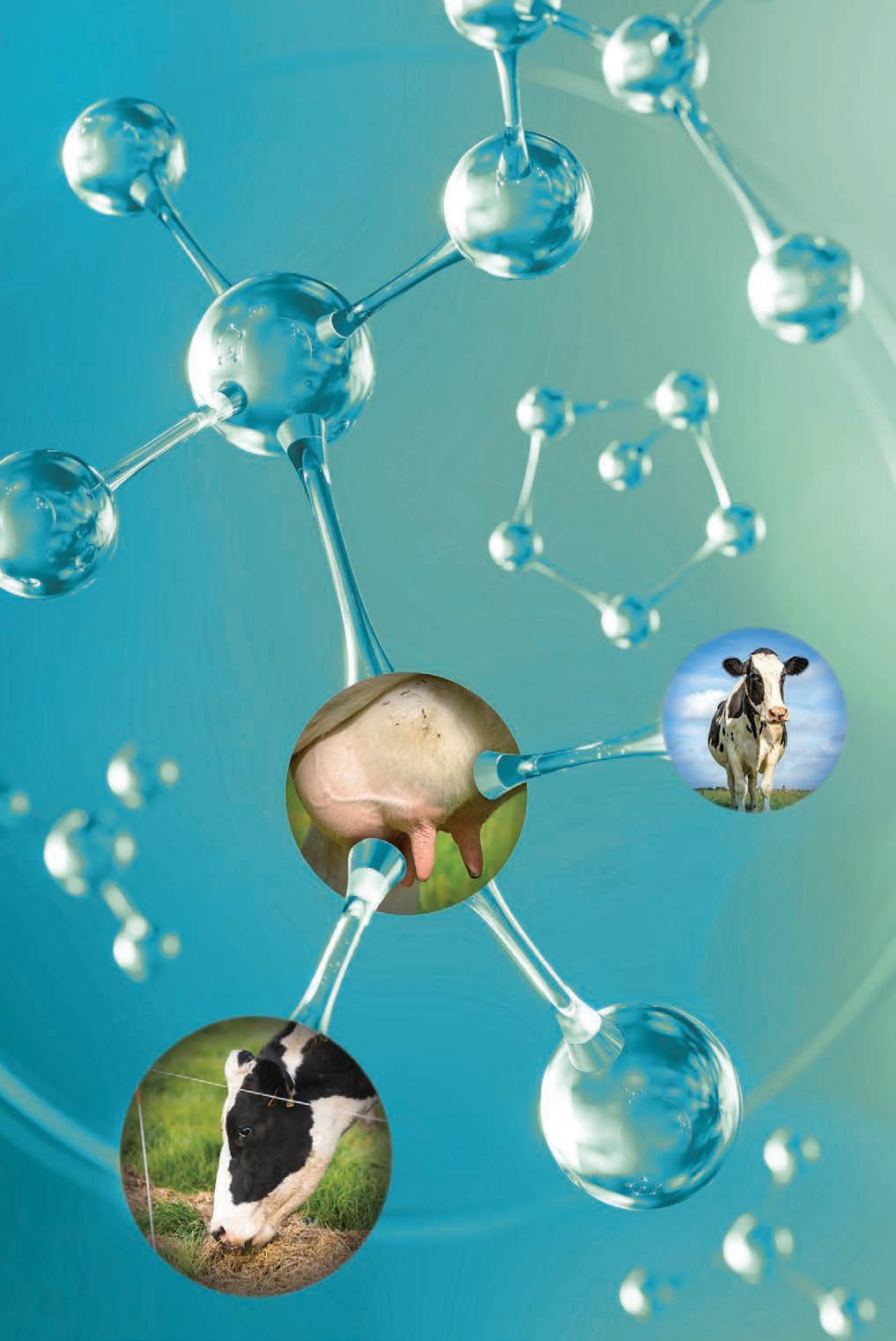
“Catchment groups should report occasionally to tangata whenua, local communities and councils on their progress against freshwater outcomes that are in the national policy statement and regional plans to help build community trust that catchment groups are actually responding to those desires and aspirations of their community,” he said.
Developing a plan is also a good first step to see if the group has the capacity to deal with larger issues, such as over-allocation.
A recent survey found that not many catchment groups have specific objectives they are working towards. Sinner said this suggests that the number of groups with action plans is low.
Not having a plan gives central and local agencies less confidence that catchment groups can achieve their outcomes.
“You’re going to get more regulation and you’re going to keep going around in this circle of regulation and pushback and not making much progress.”
Solving freshwater issues requires a collective solution and catchment groups could have a role in solving that problem.
They are a way to more efficiently communicate with farmers and reduce compliance visits to individual farms and enable farmers to devise their own solutions, he said.
“We also think about catchment groups as being a way to help achieve freshwater objectives without intrusive regulations and thereby avoid the backlash that we get whenever we try to regulate.”
The study found there are many different
expectations about what a catchment group can and should do. These expectations are the reason the true potential of the groups is not being realised and the study aimed to bridge these different expectations of the groups involved.
The study also found that central and local agencies should support catchment groups’ relationship work. This could be achieved by funding group co-ordinators.
It also recommended that freshwater policies should be designed in a way that recognises and rewards catchment groups that co-ordinate members’ actions to achieve catchment-scale outcomes.
“We would like to see policy that says, if a catchment group is implementing a credible plan to meet community aspirations and water standards, their members will face fewer regulations about specific farming practices, because they’ve got a local solution that will work for their land and waterways,” he said .
Hundreds of catchment groups have formed around the country and many are doing good work on riparian planting and pest control. However, these efforts could be better co-ordinated.

“We have a lot of farmers doing good things individually, but if they aren’t coordinating their actions, if they aren’t asking what is needed across their catchment to achieve the outcomes the community expects, there is a very real risk that the outcomes will fall short.”
It also recommended that tangata whenua should consider hosting catchment groups at the local marae to strengthen relationships and explore ways of working together.
Sinner said he suspects that it is only a minority of groups that have strong relationships with tangata whenua. He believes this is because of anxiety from both groups.
“Farmers might not know what to do and how to approach tangata whenua, and maybe the opposite is true as well.”

Sinner said the answer is to start that conversation with the local marae.

“Have a cup of tea. Just getting that conversation started will make you realise that you have a lot in common and relationships can build from there.”
He said that groups need to keep building relationships and keep developing an action plan to achieve their objectives.
“Get funding, pay for a co-ordinator and report regularly to your partners in the wider community.”
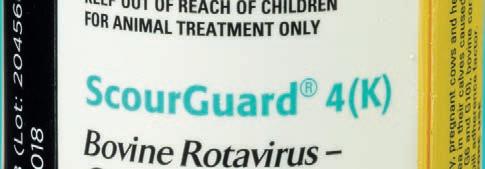





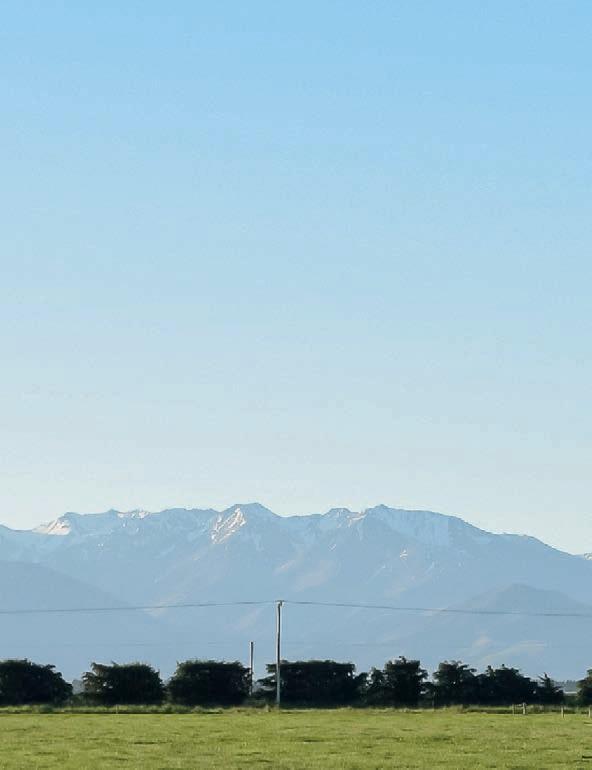


Some jobs call for double duty, like vaccinating for calf scours. Scourguard 4K is proven to protect against both G6 and G10 rotavirus strains, so for bigger, healthier, scour free calves, don’t settle for half measures. Vaccinate your cows with Scourguard 4K. Tested and proven in New Zealand. Get your total vaccine solution from your vet today.
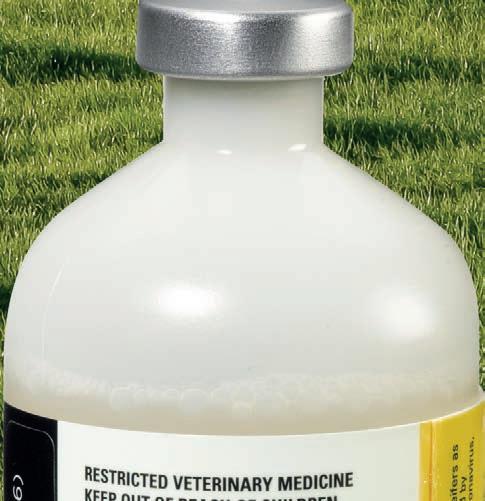
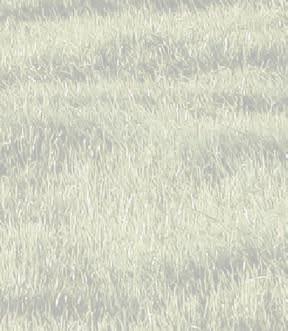
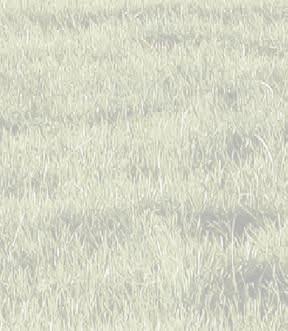



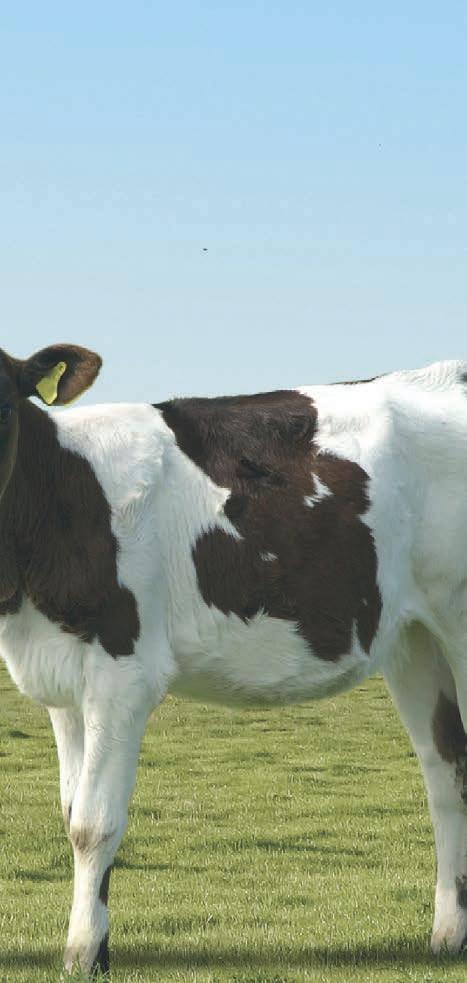



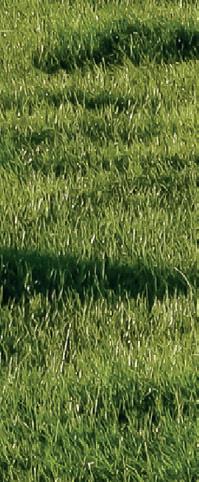





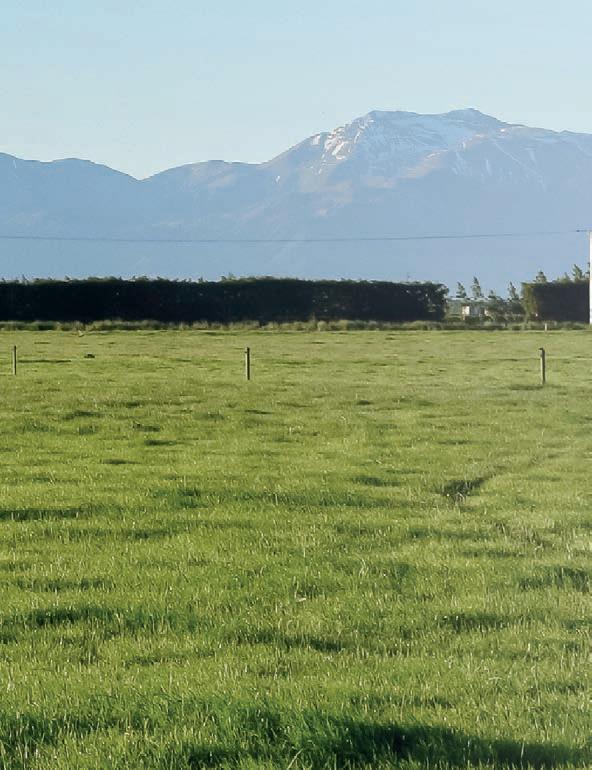

HORTICULTURE’S ability to deliver a sustainably produced product with a strong story behind it should put the sector in a good position to meet the needs of a more conscious consumer market.
In the final Our Land and Water webinar series on leveraging a “green premium” from product claims and delivering them back to growers and farmers, the horticultural sector’s opportunities were underscored by the successes of Zespri and the Boring Oat Milk company.
Dr Caroline Saunders, head of Lincoln University’s Agribusiness and Economics Research Unit, said New Zealand producers have made some headway in the past decade in advancing a premium for their products, but it is not necessarily consistent across all product types.

You may go without a holiday, a new car, or some new clothes, but actually eating is something everyone does every day.
Carol Ward ZespriShe cited Zespri as one company that has successfully recognised the need to build its premium on consumer-driven values.
Carol Ward, Zespri’s global sustainability officer, said this has been founded on understanding consumers’ expectations and responsibility for the fruit’s taste and quality. An ability to also communicate the health benefits is critical for capturing that premium.
“People want to know their fruit has been produced in a way that cares for the environment, that looks after its workers and their welfare, and is a brand that has purpose. It is through that wider communication of benefits we have been able to hold our premium in the markets and capture that value back for NZ kiwifruit producers.”
While acknowledging that rising food prices are putting pressure on consumers’ purses, Ward said Zespri fruit is benefitting from something of a “lipstick effect”.
“You may go without a holiday, a new car, or some new clothes, but actually eating is something everyone does every day.”
She said the “lipstick effect” is the opportunity to treat yourself to something you do every day, like putting on lipstick, even if you do not have the new designer handbag to go with it.
“So lower-cost items can still be part of that purchase basket. But it is tough, with the cost of living.”
Saunders said Zespri’s efforts around its “Taste Zespri” programme highlight its awareness of consumers’ values.
“The fruit into Japan had not been selling well because the sugar content was low, and it was not as tasty as they would like.
“They took that back to producers, and producers had to reduce their yield, and they pay a premium to producers for that. The whole chain picked up that value and it meant that market revived.”
For Boring Oat Milk founder Morgan Maw, the challenge has been to align her processing in NZ – a first for the sector – with processors who share her and her consumers’ values about sustainability and plant-based production.
“You need to find people whose values are aligned with your own because when push comes to shove, and you have to make financial decisions in a business with pressing costs, if you are not coming from the same place you are going to disagree.”
More recently this has involved aligning more with farmers who may not be growing oats, but who may be interested in the crop’s value as a nitrate soaker with relevance as an option for planting on some dairy farmland area.
As a crop, oats emit 93% less greenhouse gases than dairying, and the challenge for Maw has been to illustrate to dairy farmers that oats may not be a silver-bullet solution, but are another tool available to them.
Saunders said despite research showing some consumers searched out shorter supply chains and more local products during and after the covid pandemic, her 2006 Food Miles report showed food produced in NZ did considerably better in emissions terms than food produced in UK.
“We should really connect with those consumers in those markets, and almost market ourselves as local. Show that shipping it across the world is not necessarily worse for the environment than it being produced where it is.”
AOTEAROA’S two main fertiliser cooperatives, Ballance Agrinutrients and Ravensdown have lowered the price of their range of nitrogen products as fertiliser prices ease off their historic highs over the past 18 months.
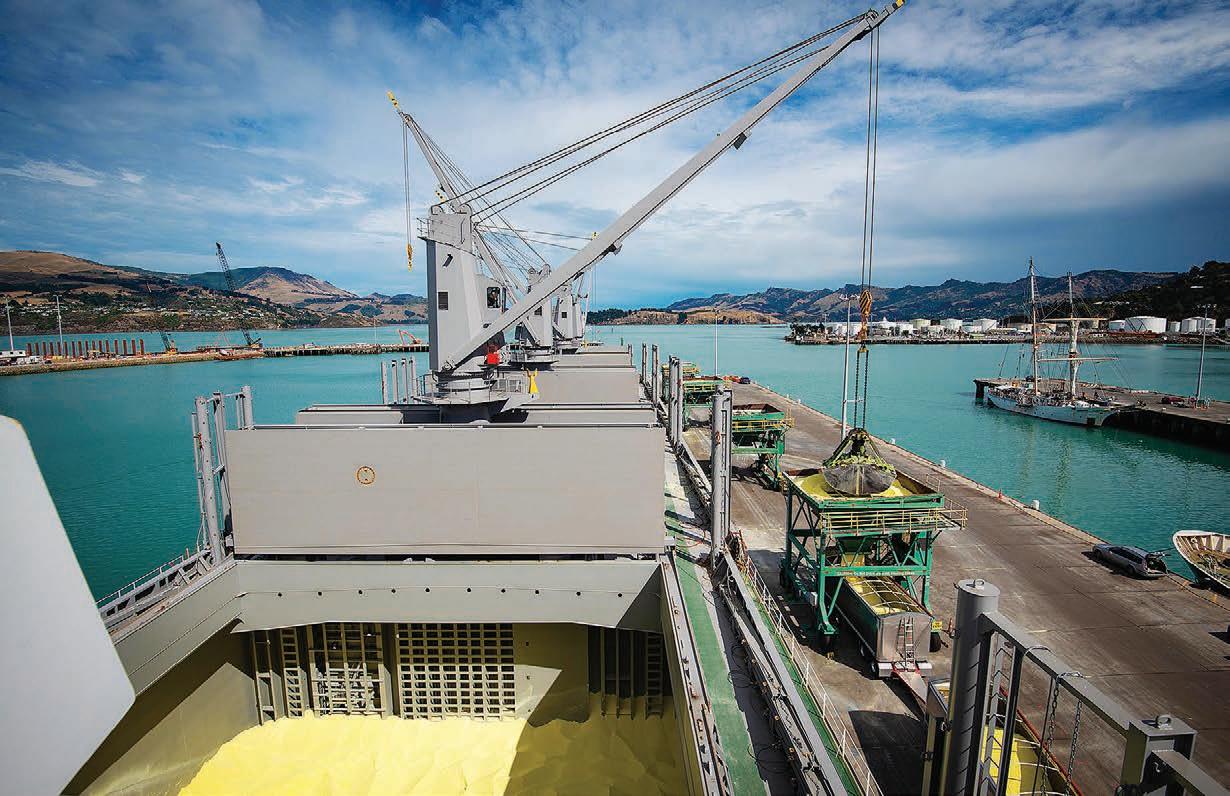
Ballance lowered the cost of urea, SustaiN and SuperN have all dropped by $150 a tonne to $980, $1029 and $1010 respectively, while SOA and PhaSedN have come back by $100/T to $797 and $895.

Ballance shareholders were told of the new prices on April 21. Ravensdown lowered its prices three days later.

In an email to shareholders, Ravensdown general manager of sales and marketing Gary Bowick said:
“At a time when cost pressures
are generally mounting, I’m pleased to confirm we are reducing prices on some of our main line products which include urea and granular ammonium sulphate.”
Urea had been reduced from $1139-$989 and granular ammonium sulphate came down from $912-$812.
“As you know, both products can be good, fast-acting options for farmers looking to fill the winter feed gap as we head toward those cooler and shorter days.
“Used strategically, urea continues to be one of the most flexible and widely suitable sources of nitrogen in the New Zealand farm fertiliser stable.”
It is the second time this year prices have eased, with Ballance and rival fertiliser cooperative Ravensdown announcing reductions in March. Ravensdown’s prices are unchanged.
According to Westpac, fertiliser
costs lifted by 33% over the past year. It expects those costs to ease. In an online Economic Bulletin, it points out that the price growth has eased from the 70% increase in the year to June.
Local fertiliser prices have headed in the same direction, and with world urea prices, for example, down by around 66% since April 2022, further local price declines are likely.
Westpac
“Fuel (petrol) prices have fallen by around 20% since the middle of 2022. Local fertiliser prices have headed in the same direction, and with world urea prices, for example, down by around 66% since April 2022, further local price declines are likely,” it said.
THANK you, Stuart Chambers, Hauraki writer and former sheep farmer, for the best opinion article I have ever read, “An emissions tax on the hand that feeds it” (April 17).
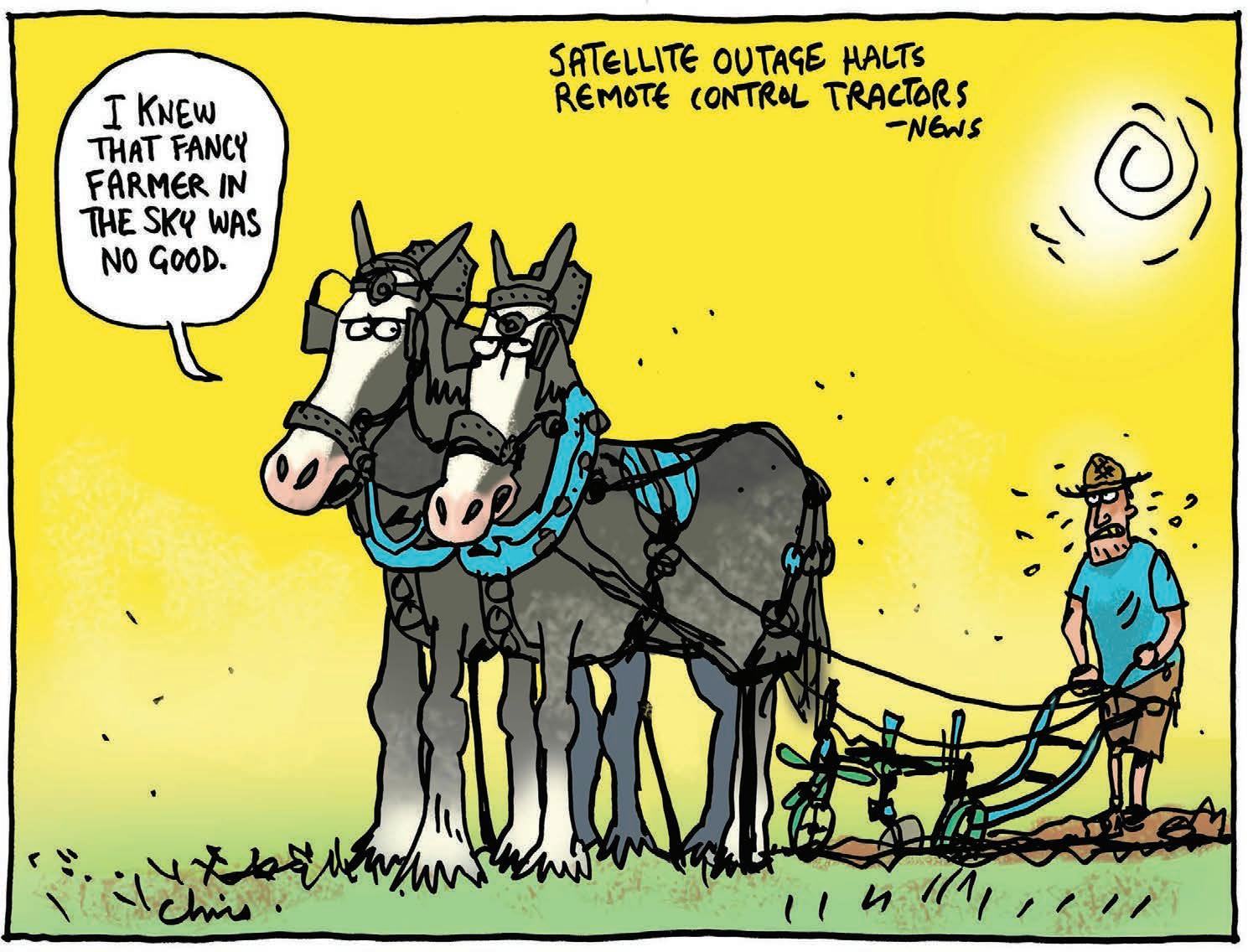
Also noted, your hand resting on the old split timber fence post covered in lichen and moss.
Those early settler farmers had the guts to get on with the job of producing food, wool and timber for building.

As you said, “there are three essentials in life — food on the table, a roof over your head and clothes on your back”.
Also, politicians of all persuasions were different in the aftermath of World War II, realising a supportive government programme needed to be put in place, one instance being the State Advances Corporation, which was set up to lend money at very cheap rates of interest to farmers and ordinary urban people.
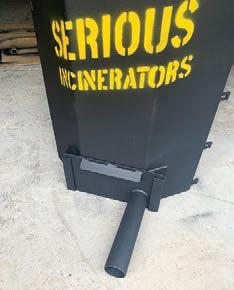
Urban dwellers owe a huge debt of gratitude to our hardworking farmers, whose trade in value-added commodities earns our New Zealand government 65% of all our overseas earnings.
The two negotiating parties – our farmer leaders and our MPs – need to listen to the farmers’ concerns, then work together to collaborate and come up with the best solutions for all to move forward.
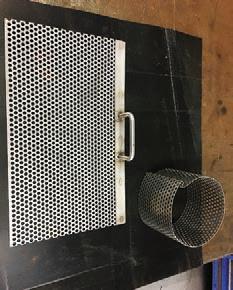
 Managing editor
Managing editor
THE covid-19 pandemic has changed our lives in so many ways, and much of the focus has been on the economic and social impacts and our recovery.
But that three-year shock and its long tail have changed our habits too, and smart businesses will monitor that change and act accordingly.
China is slowly opening up again after its most recent lockdown and a report from the New Zealand Ministry of Foreign Affairs and Trade highlights some key ways that consumers there have shifted their thinking.

Ecommerce sites, a dominant sales channel for Chinese consumers, are now being overtaken by live-streaming channels similar to TikTok.
Big box retailers are also grabbing market share from smaller retail businesses.
Chinese buyers, like those in every other
part of the world, are increasingly focused on their health and the environmental credentials of the food they buy.
Success in China has always involved a lot of work, particularly for branded consumer products, but those who’ve found it have all done the work to identify the consumer and tell a story they’ll respond to. They have also had strong supply chains.

Happily, the MFAT report says port access and processing is improving, which is great news after a few years of frustration.
Other parts of Asia are catching the same ecommerce and live-selling wave as China, and NZ exporters are there for the ride.
While the weather is making things difficult for Zespri at home, overseas the kiwifruit marketer is continuing to rack up the wins.
Our reporter Richard Rennie is in South Korea and was able to get a first-hand look at how Zespri markets its fruit to consumers there.
Sales volumes in the country have enjoyed double-digit growth in recent years, helped along by a rollback of the 45% tariff that hamstrung the exporter previously.

South Korea grows 80% of the produce it eats, so success is not that easy to find, but Zespri’s team there reckons it can knock global powerhouse Dole off the top of the
list of fruit marketers there.

That would be quite a feat – Dole is one of the largest fruit and vegetable companies in the world and employs more than 38,000 people in 75 countries.
Its history can be traced back to 1851.

Zespri was born in 1988 and now represents about 4300 growers worldwide.
David has Goliath firmly in his sights. This type of success begins with a great product, but the supply chain, retail partnerships and a marketing push that connects with buyers are crucial.
The blame game is all too common nowadays. It does not resolve any concerns in a positive way.
We have to know our past to understand the present and plan together for the future.
Alexandra
THE following definition I came across some time ago may assist readers to finally understand what He Waka Eke Noa calls carbon trading or sequestering: “Carbon trading is based on paying real money for the non-delivery of a free and invisible substance essential for all life to someone or no one – who gets paid for doing something that amounts to achieving nothing.”
Leveraging the popularity of online sales and marketing channels is also pivotal to reaching the right people.
Zespri appears to have the right recipe and with the European Union and United Kingdom trade deals coming into effect, will look to replicate it in those markets.
Now all we need is the weather to play ball back home.
Gibson
Asia reopens
Success in China has always involved a lot of work, particularly for branded consumer products, but those who’ve found it have all done the work to identify the consumer and tell a story they’ll respond to.

IT’S HARDLY surprising that native forest owners in New Zealand’s large and growing carbon farming community are feeling a collective case of whiplash.
On March 22, in the space of two hours flat, the sector was slapped with push-me, pullyou announcements from two government departments casting the future of the Emissions Trading Scheme (ETS) in entirely different lights.
It turns out the government has been quietly working on a major review of the ETS. This was tabled in a cabinet meeting by Minister for Climate Change James Shaw in late September last year, with a 27-page tome that foreshadows a comprehensive review of the ETS. This follows advice from the Climate Change Commission on the need to strengthen ETS incentives for actual overall emissions reductions.
The review of the ETS is important, and big news to those who work in, grow or buy carbon credits. It seems to recognise the
need to adjust the carrot and the stick so we actually decarbonise as an economy rather than try to plant our way out of trouble, with pines.
It could be an opportunity torebalance the incentives to reforest with natives, and remove GHG emissions through native forests rather than pine plantations.
So far, so good, for natives.
The wording of the review has been warmly welcomed in the industry for “evening the carbon playing field” for native forests. But any euphoria or hand rubbing over the review was disabused the same day by the Ministry for Primary Industries (MPI) proposing to hit the brakes on its no-fees policy for the Permanent forest category of the ETS. In essence, this amounts to plonking steep fees back on the category where native forests are usually registered.
It comes only 90 days after the MPI removed these fees in the first place. In our view it directly undermines the government’s commitment to incentivising new native forest planting through the ETS by introducing further
BENEFITS: Native forests won’t be ‘getting a free ride’ in the scheme, says CarbonCrop CEO Jo Blundell. ‘Quite the opposite is true. Native forests on farms ... receive no additional recognition for the biodiversity, water quality, and climate resilience benefits they deliver beyond farm boundaries to NZ at large.’
obstacles to restoring native forests.
As a country, are we for native forests, or against?
Native forests are usually in smaller parcels than their plantation cousins and do not earn as many carbon credits. The restoration of these fees means the cost to register a native forest in the ETS is superficially the same as it is for pine trees. But in reality, this can make it cost-prohibitive to register natives. Under the proposed new fees, a 10ha block of natives will cost $1815 + GST to register. These fees mean that almost 100% of the revenue from the first four years of carbon yield for natives will go to covering fees, versus less than 15% for pines in most locations around New Zealand, which is anything but equitable.
Native forests are crucial to NZ’s
ecosystem and biodiversity. They play a significant role in mitigating climate change by sequestering carbon from the atmosphere. As recent extreme weather events have shown, they can also help mitigate other aspects of climate change.
After announcing free registration and processing fees for permanent forests at the end of last year, it sends a pretty negative message to change this now. These new fees will make it more challenging for landowners to register native forests. It could lead to even faster expansion of exotic forests, which the ETS review has identified as a risk.
The MPI is also proposing a new admin fee to cover internal ETS platform costs. We’d like to see this covered within the MPI’s budget for native forests. These costs could be minimised by
adopting broader automation, like we’ve done with our technology. Removing the administrative costs to participate is table stakes if the government does indeed want to rebalance native forest recognition in the scheme.
Native forests won’t be “getting a free ride” in the scheme. Quite the opposite is true. Native forests on farms do more than just remove carbon and they receive no additional recognition for the biodiversity, water quality, and climate resilience benefits they deliver beyond farm boundaries to New Zealand at large. Until this is properly recognised and incentivised, the least that could be done is to support them through removing fees. I’m sure others will be taking a similar view back to the MPI.
But the conclusion we’re taking from this regulatory “push me, pull you” is that anyone with a forest should register it in the ETS as a matter of urgency –whether it is native or exotic. The current conditions for the ETS participation are more attractive now than they will likely be later.
For many, delaying the decision to register last year meant they missed the deadline to claim five years of carbon credits. Registrations are now taking around eight months, so it could be better to submit before further changes are announced and new fees take effect.
If uncertainty is the enemy of business, native forest owners in New Zealand’s carbon farming community can be excused for a very sore collective neck as two different arms of the government pull in different directions, causing a bad case of regulatory whiplash.
Anthea Yule
Hawke’s Bay farmer
NOBODY mentions Phil Goff’s name anymore.
After spending 32 years in parliament for the Labour Party, he became the mayor of Auckland.
He completed two terms at the helm but did not seek re-election last year.
He has moved on to become the High Commissioner for New Zealand to the United Kingdom.
Wayne Brown has been in the hot seat ever since.
Imagine inheriting a $270 million budget hole, as Mayor Brown put it when discovering the discrepancy in early November.
Little did he know then, things were about to get much worse.
Cyclone Hale seriously tested emergency services and stormwater capabilities in early January.
More heavy rain fell as Aucklanders shut up shop for their long anniversary weekend. People were left wading through water. Cliffs fell. Lives were lost.
Cyclone Gabrielle moved down the country. It saved most of the force for the east coast of the North Island, destroying lives and livelihoods.
I farm in Hawke’s Bay and the
destruction needs to be seen to be believed. It is going to take years for those affected to get back to where they were. Some won’t have the resources, energy or time.
You have all seen the footage. The water reached the top of twostorey houses in places. A GPS tracker has located a harvester 4km out to sea!
The efforts of locals and volunteers who continue to help has been incredible. The initial cleaning up of the roads was done by farmers with tractors and local contractors. The use of cones was kept to a minimum, and things got done. We all just got on with it.
Things changed at the beginning of the third week. Contractors could not start work until the road control people were there. This caused delays and confusion. We are still confused.
Who is in charge?
Hawke’s Bay is a big place.
The revenue received from the province in the last financial year placed it third in New Zealand.
When I moved here from South Canterbury in 1987, both Napier and Hastings had their own public hospital and newspaper.
Napier had the Daily Telegraph, which serviced Napier, surrounding areas and farmland
north of the Tutaekuri River, right up to Wairoa.
The Hawke’s Bay HeraldTribune went to people south of the Tutaekuri, including Hastings, Havelock North, Waipukurau, Dannevirke and surrounding areas. This was the more conservative paper of the two.
The papers combined in 1999 to make Hawke’s Bay Today.
Now Hastings has the only public hospital in the region.
The papers and hospitals might have combined, but sentiment remains very different in the two cities.
Imagine if Otago had two cities the size of Dunedin, or Waikato had two cities the size of Hamilton. Who would be lead pony?
And that is the problem.
At the last Census Hawke’s Bay had a population of 178,600.
These citizens are served by five councils. We are separated by our rivers. Rivers that have supplied our booming agricultural and horticultural sectors. In light of Cyclone Gabrielle, these rivers have been our undoing.
We have four mayors, a chairperson, 50 councillors and five chief executives. Surely enough talent.
So, I read with interest recently a small article on page three of
Hawke’s Bay Today, “Big recovery plans”. No photos were provided. The newly established Hawke’s Bay Regional Recovery Agency (RRA) has appointed an independent chair and six directors. A very talented line-up, but all career board people.
Not a true reflection of the Bay. And not enough skin in the game. The true reflection of the Bay can be found among the 50 elected representatives.
We need big-picture thinkers with vision, stamina and patience to rebuild Hawke’s Bay. The sort of people that can be found in every corner of rural New Zealand. Not people with the ability to move on to a better opportunity, like the previous mayor of Auckland, without a backward glance.
Got
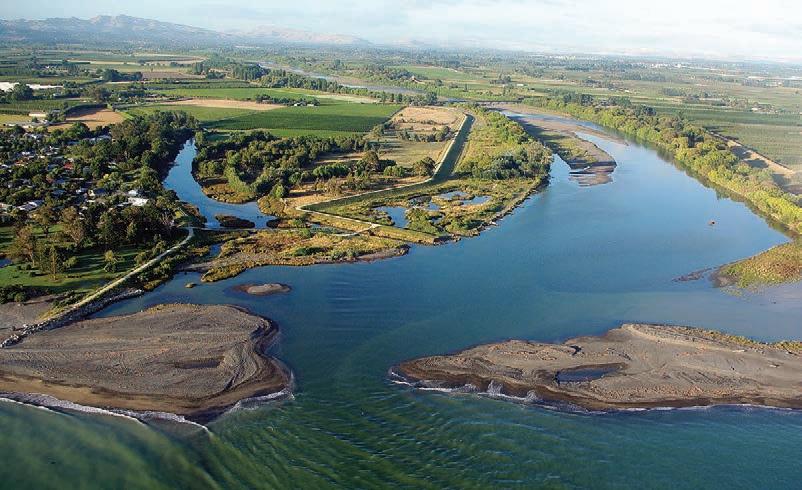
North Canterbury. My second was that if a cat owner can’t control their animal and it gets shot while trespassing, tough.
I notice some Australian states demand that cats are locked inside after dark. I’d support that here.
The hysteria certainly put the small rural hamlet of Rotherham on the international stage.
It is described in Wikipedia as a “small rural village in the Hurunui District between Culverden and Waiau”. In the 2018 census it had a population of 144 people spread over 54 households.
It is the size of two rugby fields, has a good percentage of university graduates and just three unemployed.
school was assisting with that.
I’d have thought its main targets would have been rabbits, hares, possums and cats, all of which do extraordinary damage to the environment.
Considering cats destroy “bats, birds, eggs, lizards, weta, the black stilt, black fronted tern and grand and Otago skinks”, I’d suggest every person has a duty to exterminate them. The good citizens of Rotherham were, as well as responsibly fundraising, doing their bit for the environment.
BELIEVE it or not, the major New Zealand news story to grace the international media recently wasn’t about market access, dairy prices or live animal shipments, but a North Canterbury hunting competition over feral cats.
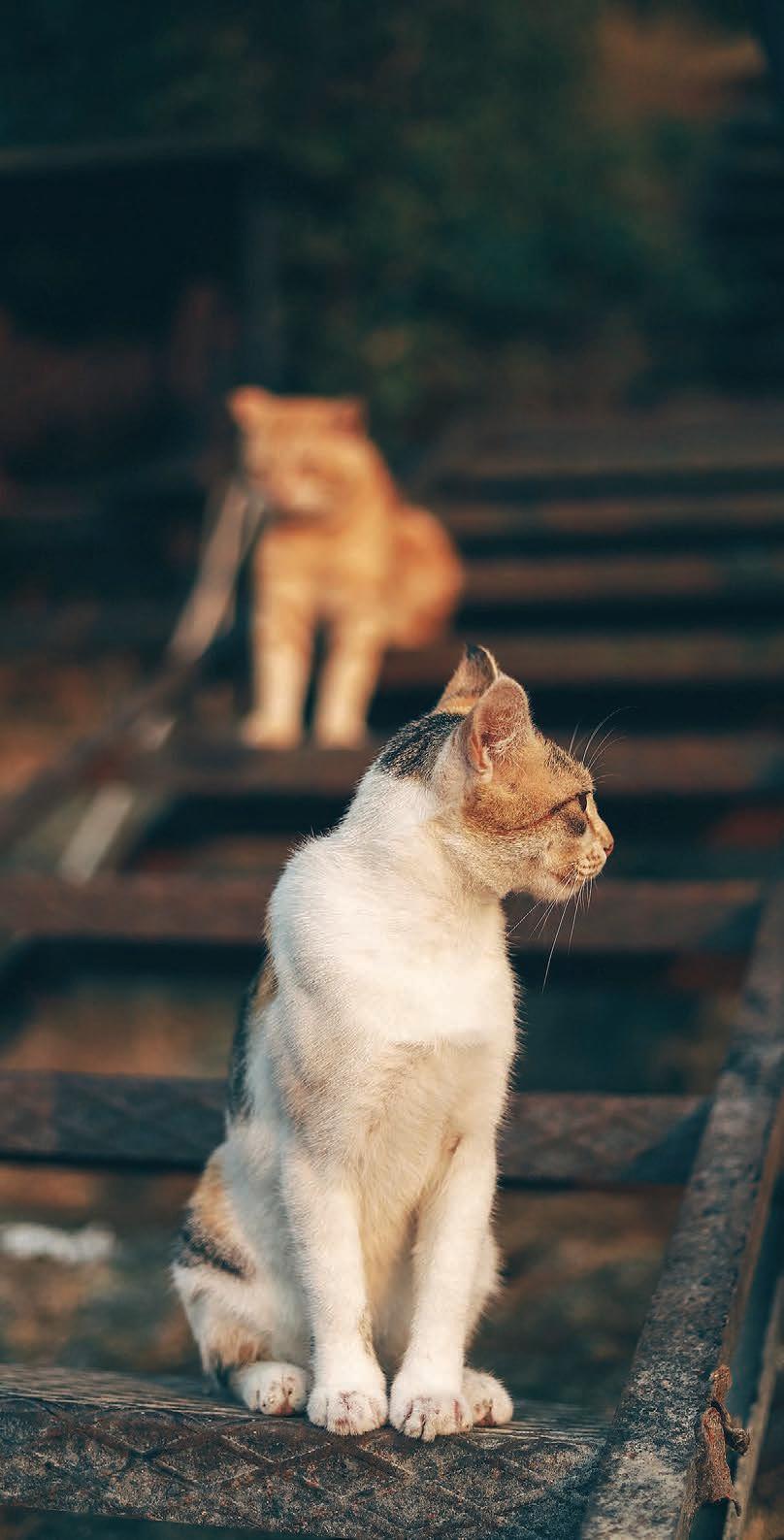
It featured on ABC, BBC, Fox News and the Guardian, among other outlets.
It was the small North Canterbury rural village of Rotherham that put NZ on the world stage.
I was originally alerted to the issue by an immaculately coiffured Auckland lady lecturing me on Newshub about the evils of the hunting competition. Fourteenyear-olds weren’t developed enough to use guns and what about the killing of innocent domestic cats!
Beyond the mainstream media the hysteria on Twitter was mind blowing. “Teaching children to kill cats will lead on to them killing humans” was the rant from another Auckland cat lover.
My first thought was that if those people are worried about anyone misusing guns, they should consider their Auckland neighborhood and not that of rural
That “small rural village” lurched onto the international stage because it had the temerity to run a hunting competition for kids that involved killing feral cats. It was a fundraiser for the local school billed as the “best little school in North Canterbury”. Going to its website justifies that billing.

The competition has been run in Rotherham over several years and last year there were 250 child entrants who killed 427 animals. The village deserves a medal.
That it incensed the uninformed to the extent it did surprised me.
Let’s consider the reality of the situation. For a start, I taught both my daughters to shoot at 14. I took a lot of pride in doing it once and doing it right, as have my rural colleagues. I used to shoot with my father from age 11 or 12 and had my own .303 legally at 15.
Further, to claim, as the Department of Conservation and the SPCA did, that killing cats requires skill – meaning that skill doesn’t exist in rural NZ – is insulting.
Also, we have predator-free NZ and I’d suggest the Rotherham
I can remember some years ago now the environmental groups opposed releasing the rabbit calcivirus because of downstream effects on the black stilt. Obviously today it is okay for cats to kill the stilts.
The SPCA, never one for shrinking from criticising rural NZ, opposed the competition with the bleat that people couldn’t tell the difference between feral and domestic cats. The organisers made the point that anyone killing a domestic cat would be eliminated from the competition. Predictably, SAFE were apoplectic but who would care?
We’re told by scientists that cats kill over 100 million birds a year in NZ, including 1.1 million native birds. That is a disgrace.
They are responsible for the extinction of six bird species as well as a decline in the population of bats, frogs and lizards. They carry toxoplasmosis, which “has a significant effect on New Zealand’s sheep industry”. Toxoplasmosis causes abortions in sheep and cost just the Hawke’s Bay sheep industry $18 million in 2014.
The competition has been run in Rotherham over several years and last year there were 250 child entrants who killed 427 animals. The village deserves a medal.
Instead the group has cancelled the feral cat competition because of “vile and inappropriate emails”
accompanied by threats of violence and arson.
Cancelling annoys the hell out of me but it was the right thing to do. To say the entire saga irritated me would be an understatement.
We had a community doing a service to the environment while fundraising for the school and swimming pool.
A lot of uninformed people and groups came out with a pile of rubbish that was accompanied by threats, which caused the cancellation of the feral cat kill.
So, good citizens of Rotherham, I support you. Advertise for donations for the school and I’ll be there as, I’m sure, will others.
FOR a fairly new MP who went to Wellington primarily to represent the farming sector, it’s been a really exciting few months pulling together the National Party’s policy proposals for New Zealand’s world class agricultural industry We announced the first tranche of these policies in mid-April and have another two to come.
In declaring some fairly sweeping changes to farm
regulations aimed at peeling back the mountain of red tape that has buried farmers for the past five years, I hope the industry will see their voices reflected in our proposals.
I’ve always been of the view that policy should be designed from the grassroots up – for it is, after all, our grassroots farmers and growers who will be the end “users” of these policies. For that, I am grateful to the hundreds and hundreds of people I’ve had contact with over the past two years who’ve fed back to us what works – and what doesn’t.
National’s Getting back to Farming package makes 19 changes to rules and regulations that have choked the industry,
caused monumental anxiety and, in many instances, actually created regressive outcomes. These changes will help farmers get on with earning the income on which their livelihoods, New Zealand’s economy, and New Zealanders’ standard of living, depend.
This is about using targeted rules with clear environmental limits so
If we form the next government these custombuilt ships will be the only ships that will receive licensing or certification to transfer our animals.
farmers can work with confidence. We have also committed to restarting live cattle exports – but with the strictest regulations in place to ensure world class animal welfare standards. We will take an evidential approach to the welfare of our animals, based on scientifically backed best practice. Much has been made by advocates of the sector of the need to implement a gold standard, which Australian exporters have led the way in creating. Developed in 2020, the gold standard is a 12-point regulation framework that is performance-based, demanding that all potential exporters and importers are licensed by the Ministry for Primary Industries (MPI).
At its heart is the assurance of good physical and mental health in animals, including good nutrition and freedom from stress.
Welfare standards have not previously been enshrined in legislation. Previously, both MPI and exporters have relied on guidelines rather than strict statutory criteria.
In mid-April I boarded the last ship to leave Napier, the MV Gelbray Express, to see for myself what best in class looks like.
This was a $100 million, custombuilt ship and it has me more convinced than ever that, with the right regulations in place, NZ can lead the world in the safe,
ALITTLE while I ago I wrote that I might talk about our succession plan, given we are now in the throes of implementation.
Several people have emailed and chased me up about that prospect and I guess I shouldn’t be surprised as I’ve been interested in other people’s plans and thoughts over the years.
I’ve picked their brains and attended seminars and workshops on the issue, so only fair that I offer up our own action plan.
I’ve concluded there is no right plan or template, but it is hoped to get to something specific for your own family and situation that works. So, this is what we are doing and I’m not suggesting others copy it.
Ours will have started when we had our firstborn, 31 years ago. The son who is coming into this business in a couple of months.
As is common, at that point we formed a trust to ensure some protection of the family assets for the future. In 1992, those assets were modest, 180ha with a reasonable amount of debt. I look back at the balance sheet of the time and am surprised we formed a trust at that stage.
Continued from previous page
humane transfer of animals.
I saw for myself the state-ofthe-art pens, drainage, water, feed and air-conditioning systems. I saw calm, relaxed animals sitting comfortably in sawdust beds. I spent time with the vets and stock handlers to understand what the daily checks and routines consist of.
Throughout the voyage to China I was sent the daily updates and photos and saw no sign of animal distress, heat stress, injury, humidity or high ammonia levels.
If we form the next government these custom-built ships will be the only ships that will receive licensing or certification to transfer our animals.
I also want New Zealanders to understand that we will license and, importantly, audit importers and offshore farms to NZ animal welfare standards. This will provide everyone the comfort of knowing our animals live a good life, for their whole life. We will ensure a further overlay with an
For us, our priority is family harmony above keeping a farm down through the generations, so we plan on our three sons ending up with equal shares in the family equity.
Probably on advice from our lawyer and for future benefits, as it turned out.
We called it the Lorax Trust, because even then I was a bit of a greenie and admired Dr Seuss’s book The Lorax. This was one of the first environmental books written as a children’s story, with the message to respect the environment to preserve the

international accreditation agency like Quality Assure carrying out final certifications.
So now I say to the industry: your move.
In my view it is up to the industry itself to prove its merit, open itself up to the public and earn its social licence to operate. There is only so much governments can legislate for.
I have listened to the feedback and I have acted on it – the rest is on the shoulders of those who seek to continue this trade. Much like the dairy industry, which has opened up its farm gates, so too must the quarantine facilities, the trucking companies and the shipping operators themselves –not to mention the destination farms – to prove to New Zealanders there are world class systems and facilities.
NZ can and will lead the way in this industry.
A National government will support the sector to set the standard for global best practice – but it needs to earn that reputation for itself.
planet for future generations.
The next 20 years were busy, buying small parcels of land and focusing on paying off debt after each purchase before making the next.
I was given a hard time for our modest lifestyle and my tightness, but having escaped the farming recession of the 1980s by not going broke, I was keen not to reencounter those times.

In hindsight, the caution meant we were never going to be big farmers due to being risk-averse, but focusing on debt repayment kept us out of financial trouble and stress and has proven to help our succession planning now.
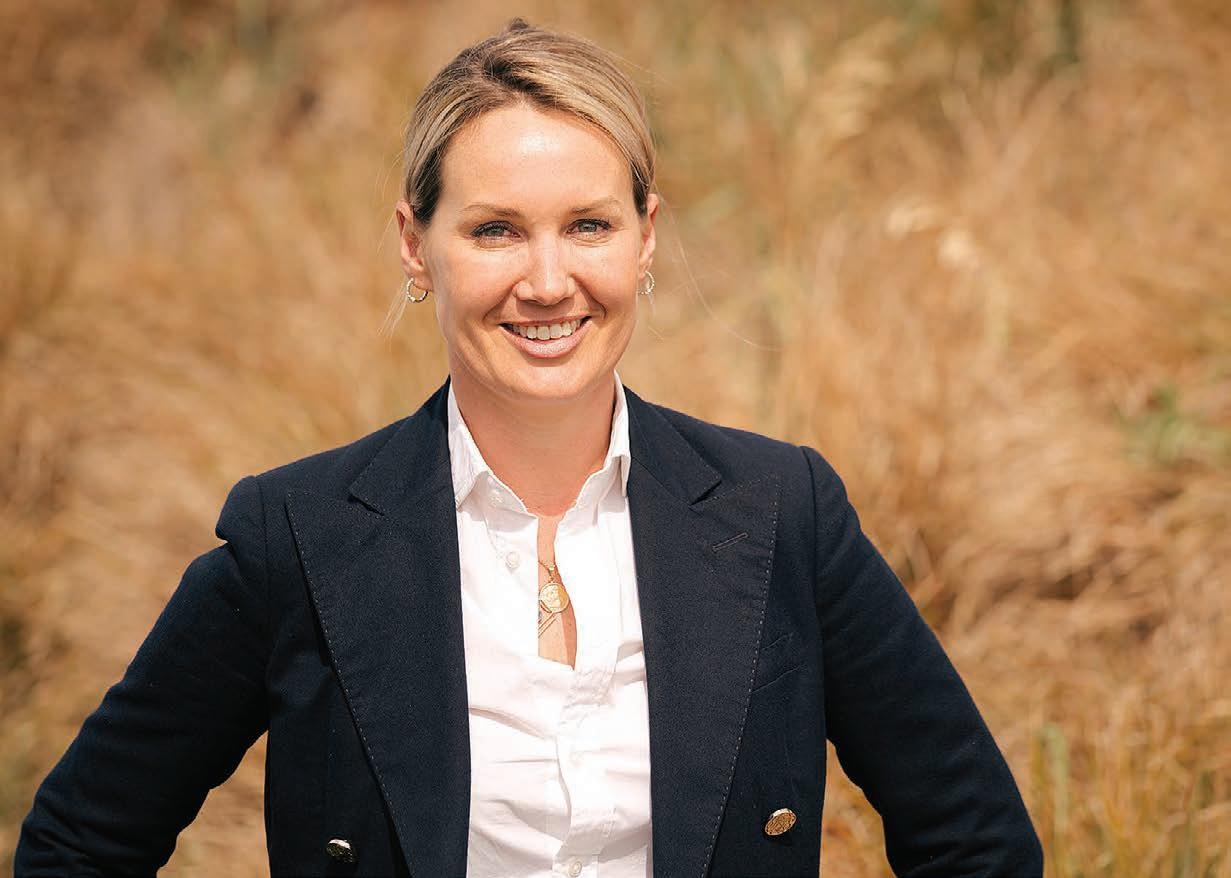
The next main move was to form a company, about a decade ago. I’d read a particularly informative book, Keeping Farming in
the Family: A Guide to Farm Succession by Ian Ross Blackman, a rural lawyer. I recommend it to you.
Around the same time our lawyer and accountant were going to their own seminars and a company structure was being favoured for farming businesses.
So, we formed Lorax Farming Ltd because a company is a good legal vehicle to operate a farming business while the trust owns the company shares, thus giving protection to the family assets.
There are taxation advantages to operating as a company, but it was set up as our main succession tool. It allows for the sale of a proportion of shares, which is what we are now planning.
Jason and Rosa bring a good amount of capital with them
and will use that capital to buy a small proportion of shares in the company. We were planning to use some of that to retire the last of the debt but have recently bought a house so it will be used for that instead.
This allows them and their daughter to move in here, which is a better proposition than a small cottage on another block.
I’ve written before that at most of those succession seminars we went to, the refrain for farm succession is that you can be fair but not equal.
For us, our priority is family harmony above keeping a farm down through the generations, so we plan on our three sons ending up with equal shares in the family equity.
This makes it harder for the farming successors but not impossible.
It means we can’t extract any other capital for ourselves other than the house purchase, and none of them get any capital in the short term.
This will happen when the new farmers begin to borrow money to buy more shares and increase their share of the company.
Our thinking at present is to wait out the current interest rates until the rates reduce again to make the servicing easier.
When these capital amounts are distributed to their two brothers, they will get an equivalent amount of further shares in the company. So, borrow $1 million and get 1.5 million of shares in exchange.
The scale of our business is a limiting factor, but we have a good legal structure, sound balance sheet and are profitable.
Time will tell if the plan works out.
There are other challenges, not least sharing the income after paying a good manager’s package, but that subject can wait for another time.
Like a mighty tōtara tree that stands tall and strong, Greg Steward has been celebrated for his resilience, endurance and passion for advancing New Zealand’s knowledge of indigenous forestry over nearly five decades.

the estimated kauri crop rotations of hundreds of years out of the water.
GREG Steward, who is the first to admit he failed science and left school at 16, was farewelled by dozens of current and former colleagues at a special function at Te Whare Nui o Tuteata this month to mark his retirement49 years after joining the New Zealand Forest Service as a trainee woodsman.
During the event many people paid tribute to Steward’s unrivalled expertise that saw him carve out an extraordinary research career that focused on managing kauri, tōtara and indigenous hardwoods in plantations.
The turnout reflected the standing in which Steward is held as Scion’s and possibly New Zealand’s longest serving indigenous forestry researcher.
His legacy will be built on through the work of other scientists who are now ‘picking up the baton’ and championing the value of indigenous trees for their economic potential and special timber qualities.
But despite entering retirement, Steward’s expertise won’t be lost after he has agreed to serve as an Emeritus scientist – a mentoring role that enables him to keep sharing his considerable knowledge.
Scion chief executive Dr Julian Elder made the announcement at his farewell to a round of delighted applause.
“We’re so pleased that Greg will be joining our growing cadre of Emeritus researchers who, while officially in a new phase of their lives, continue to serve our science community,” he said.
During his career, Steward authored and co-authored papers on indigenous tree species looking at their qualities, and timber production modelling, with specific emphasis on managing kauri, tōtara and indigenous hardwoods for production.
In 2020, his contributions were acknowledged with a Science New Zealand Individual/Lifetime Achievement Award.
His thesis on the growth and yield of New Zealand kauri awarded him with a Master of Forestry Science (Hons) in 2011 and dispelled many myths around the growth potential of plantation kauri.
His research showed that kauri stands aged 20 to 60 years were 20 times more productive than natural stands – work that blew
Projects he has both led, and been involved in, have strongly influenced the position that indigenous forestry is now moving towards, as demonstrated in the successful Tōtara Industry Pilot programme in Northland.
Relating to that project, and as a parting gift from Scion, Steward was presented with a carved hoe (paddle) carved from tōtara by Grant Hamarama Smith Marunui (Ngāti Hurungaterangi, Ngāti Te Kahu, Ngāti Rangiteaorere, Ngāti Rongomai, Ngāti Manawa and Ngāti Rangitāne) and Kawana Waititi (Te Whānau-a-Apanui).
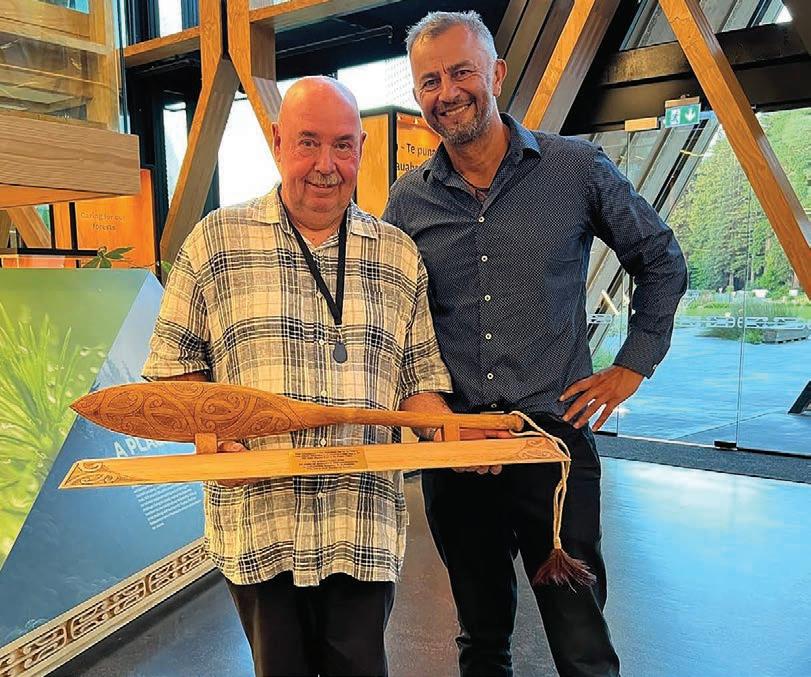
General manager for Te Ao Māori and Science Services Hēmi Rolleston said he was privileged to present the taonga as Steward “rows off” into his next phase.
“A legend in indigenous forestry, Greg is a rangatira who has been dedicated to his work and is going out on top”.
“Like the tōtara, he has weathered storms but stood strong and seen lots of growth around him. Because it so highly valued, tōtara is a symbol of chieftainship and nobility in Māori culture, so it is very fitting that his taonga reflects those special values.”
“And just as the tōtara tree provides shelter for all those who seek refuge under its branches, Greg has been a source of comfort and guidance for many people at Scion over the years. It’s wonderful that can continue in his new role as an Emeritus scientist.”
Reflecting on his career, Steward acknowledged the researchers
who came before him who were generous in their support, allowing him to grow and take on new responsibilities.
“Almost everybody you come across adds to your store of knowledge, and it’s sometimes the people you least expect it from.
“The person I most want to acknowledge is Tony Beveridge who was a very kind and intelligent person – one of those old-fashioned gentlemen. He took me under his wing in my early days.
Like the tōtara, he has weathered storms but stood strong and seen lots of growth around him. Because it so highly valued, tōtara is a symbol of chieftainship and nobility in Māori culture, so it is very fitting that his taonga reflects those special values.
“He was very respected and knowledgeable about indigenous trees, having worked in Pureroa in the 1950s. But he was always interested in our observations as younger people in the forests as he knew that how we saw things would add to his observations.”
Steward grew up in South Auckland and was first exposed to forestry when, at 16, he joined the Woodsman Training School in
January 1975. One of 50 trainees in his intake, he learned about silviculture with the idea that after three years, he’d be qualified to supervise forestry silviculture gangs.
His first two years were spent living in a hostel at Kaingaroa and felling trees and cutting logs. He says the worst jobs were planting young trees in the middle of winter or working in the nursery with bare hands during frosty mornings when temperatures plummeted to as low as -4degC.
By contrast, his favourite job occurred during his group’s first summer together.
“About 30 of us were driven out by bus to the middle of Kaingaroa where there was about 200ha of dry cutover pine forest. We were given litres of diesel, boxes of matches and they told us to set fire to it all.
“We looked at each other and thought, ‘And we get paid!’ It was a teenage boy’s dream.”
He was one of four trainees who, in their third year, continued their training at what is now Scion. Exposed to different research areas, it was the Indigenous Silviculture research group that impressed Steward the most.
After completing his training he joined the group and worked alongside indigenous forestry scientists in the field. Steward recalled how they’d spend Monday to Friday in forests like Pureroa west of Taupō, living out of huts and sleeping bags, only returning home at weekends.
“We were doing everything from indigenous production forestry research through to identifying reserves and mapping forest types. A lot of logging and planting trials; it was very physical work and I’d never been so fit.”
Occasionally, it could even be dangerous work.
“We were working in some of the most remote forestry areas of the North Island,” he says.
“There shouldn’t have been anyone else around but occasionally you’d get the odd hunter come through poaching, most often during the roar. We were shot at by certain people who
didn’t want us there.”
Having spent so much time in New Zealand’s indigenous forests, studying rimu, mataī, kahikatea and kauri, Steward has mentally mapped the landscape they grow in.
He recalled working in Minginui during selection logging trials when he and a group of science trainees challenged themselves to deliberately get lost in the forest.
“It was pointless, we knew those forests so well that after five minutes of walking, we knew exactly where we were.”
Even now, he can be shown a tree on a computer that has been assessed using LIDAR technology and, due to its shape or the way its trunk swells, he’ll know it’s exact location, he says.
In becoming an Emeritus scientist, Steward will continue providing support to the next generation of indigenous forest researchers.
After dedicating his life to his love of New Zealand’s indigenous forests – from his first days as a trainee woodsman in Kaingaroa, to being the driving force for indigenous forestry at Scion, Steward is satisfied that he’s stepping away from the coalface having left enough research for others to build on.
“There’s enough stuff out there now to go away quite confident that people should be able to harvest indigenous trees if they get good quality seedlings and look after them, that it’s something they can do within their lifetime.
“When I started we were talking in rotations from planting to harvest of about 250 years. We were trying to replicate the old forests because that’s what we thought we had to do.
“Then we started to do more intensive research. Now I would say relatively confidently that you can get down to 80 years, and with silviculture and breeding we can probably get down to 50 or 60 years to produce a harvestable tree and a useable product.
“We must unlock the economic potential of these indigenous species. In that way, people become more likely to invest.”
Faster, cheaper technology – including powerful artificial intelligence – is opening up opportunities for farmers to better plot and predict threats to their land when the next dire weather event blows in. Richard Rennie reports.
SIGNIFICANT drops in the cost of remote sensors, better cloudbased server capacity and powerful artificial intelligence tech open up opportunities for New Zealand farmers to better understand their farm’s response to climate change and lifechanging weather events.
Stephen Ponsford, CEO of Spark’s AI and data analysis company Qrious, says recent cyclone events have highlighted the role digital mapping and real-time sensing, to name two tools, can offer farmers to better prepare for future events.

Qrious has been working with two farm environment companies, MyEnviro and Adroit, on sensing tech in the Mangaone River catchment of Hawke’s Bay, providing the platform for real-time monitoring of water quality, emissions, fertiliser use and pasture growth.
You can then start on simulation analysis and get to develop ‘digital twins’ of your farm, with AI simply the only way to process the level of data this can generate.
Stephen Ponsford Qrious“And we have just had an agreement with Hills Laboratories to do ground truthing on the real-time probes to calibrate their accuracy,” Ponsford says.
“For example, the sensors could detect an elevation in E coli levels, prompting the lab to intervene and test to check, so the sensors can act almost like a real-time digital smoke alarm for an event.”
After Cyclone Gabrielle, Ponsford says, there is potential for better risk management around future events, with farms able to combine real-time sensing and satellite footage and use AI to evaluate the risk characteristics of that particular farm.
It takes the work that catchment authorities have done at a modelling level for their catchments to a far more granular level that farmers can manage and account for in making decisions for future events.
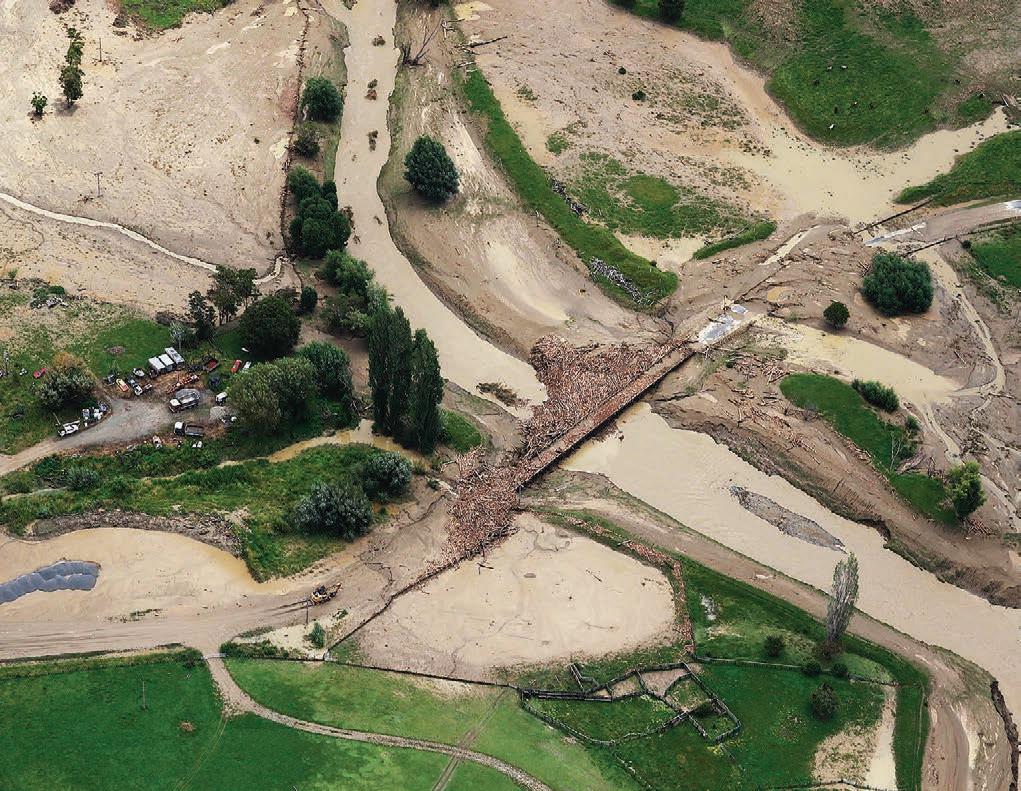
“This has really only arisen in the past five years as we have seen things like IoT [internet of things] sensors drop in price to only $1-$10 apiece, and cloud-based AI approaching zero cost.”
It is the predictive analysis, the look at what might happen on farm given certain conditions, that Ponsford says is a particularly exciting step that comes after real time analysis of sensor data.
“You can then start on simulation analysis and get to develop ‘digital twins’ of your farm, with AI simply the only way to process the level of data this can generate.”
As weather events that were once one in a 100 years become more the norm, the need to understand their effect in the future becomes more critical than simply reviewing them afterwards in the belief they are unlikely to come around again any time soon.
He is optimistic the age-old bugbear of farm tech – lack of interoperability across different platforms – will soon be a thing of the past.
“At Qrious we have done a lot of work across other industries, including banking and insurance, where data sharing has been a requirement. On farms of course you also have IoT data to incorporate in the mix.
“We are going to start to see more done on verifiable data, data required for legislative purposes and for things like bank lending, which may require evidence of sustainability targets, for example.”
He sees the use of that tech becoming more transparent, sitting in the background of daily operations, ticking the compliance demand box simply by being entered in real time as part of daily operations.
At an industry processing level Qrious has turned its analytical capacity to help Zespri develop a maturity assessment system that
WE HAVE THE TECHNOLOGY: Qrious CEO Stephen Ponsford says the use of artificial intelligence in farm data analysis will help farmers better understand how their farms would be affected by major climatic and weather events.
offers a digitised quality control system for the organisation.
Ponsford says thanks largely to the ultra-fast broadband project and the Rural Broadband Initiative, New Zealand is fortunate to now have a solid set of digital arteries running through it, even more so than across the Tasman.
As more giant server farms are built in NZ, that resilience and the capacity to build agritech and export it offers an incomegenerating lever that puts less demands on
physical resources than simply producing more food.
“We have a GDP weighted with highcarbon, lower-paying jobs, while our tech sector has a skills shortage.” Qrious has started a data academy as a talent pathway, offering $1 million in scholarships for women, Māori and Pasifika to build more local talent in the data analytics industry. Research has shown more diverse tech teams are 50% more likely to collaborate and commit successfully.
A BIT ABOUT SMEDLEY STATION – Smedley Station and Cadet Training Farm is a commercial agricultural training farm running sheep, cattle and deer, located in Central Hawke’s Bay. They train young Kiwis to become the best future farmers of New Zealand. Under the leadership of Business Manager Rob Evans, the property has grown to its current size of 5600ha (3400ha effective), wintering 30,000su. Within the Smedley farming operation there are four blocks including the main Smedley block, Parks Peak, Onepoto and Ridgelands, the latter three have Block Managers employed on them.
For more information on Smedley Station, please follow this link https://smedley.ac.nz/
THE OPPORTUNITY – Reporting directly to the Business Manager, the Stock Manager will be responsible for the day-to-day stock management on the main Smedley Station, which is 960ha. This is a hands-on role with a focus to maintain and improve the already high performing breeding stock. Key duties will include stock rotations, pasture management to maximise growth rates and following of the animal health plan. The Stock Manager will be working with the cadets on a daily basis, helping them with mustering, stock shifts, horse work and dog training. The ideal person for this role will work alongside, support and guide the cadets in all aspects of stock management.
A BIT ABOUT YOU – The successful applicant will be driven and have the desire to continually progress themselves. They will be passionate about developing and mentoring the future farmers of New Zealand’s agriculture sector. To succeed in this role, you will bring:
• Excellent understanding of the fundamentals of farming.
• Strong understanding of feed quality and supply/demand.
• Excellent communication and relationship building skills.
• Interest and ability in utilising technology and modern systems.
• Strong forward planning and time management skills.
• High level of stockmanship with a team of 6 good working dogs.
• Accurate record keeping and reporting skills – FarmIQ, monthly reporting and excel is utilised on farm.
Due to the nature of this role, a good level of empathy is needed along with a sense of humour. ON OFFER – Smedley Station take a lot of pride in the growth of their whole team (Cadets & staff), offering learning opportunities both internally and through external providers. For the right person, the Business Manager will include them in the policy, planning and budget discussions where new ideas will be encouraged and welcomed.
As well as the professional development offered, accommodation is by way of a warm, wellappointed three bedroom home, with two bathrooms and a lockable garage. The Tikokino community is a great place to live with a local young farmers club and plenty of recreational activities on your doorstep. Don’t miss this rare opportunity to help shape the future farmers of New Zealand – apply today!!!
FURTHER INFORMATION – To view the Job Information Form and/or Apply please visit https://bit.ly/3N2ERoa or give the Rural Directions team a call on 06 871 0450 for a confidential chat (Ref# 1065363).
Applications close Sunday 7th May 2023 - Only job seekers who have NZ working rights will be eligible for this role.


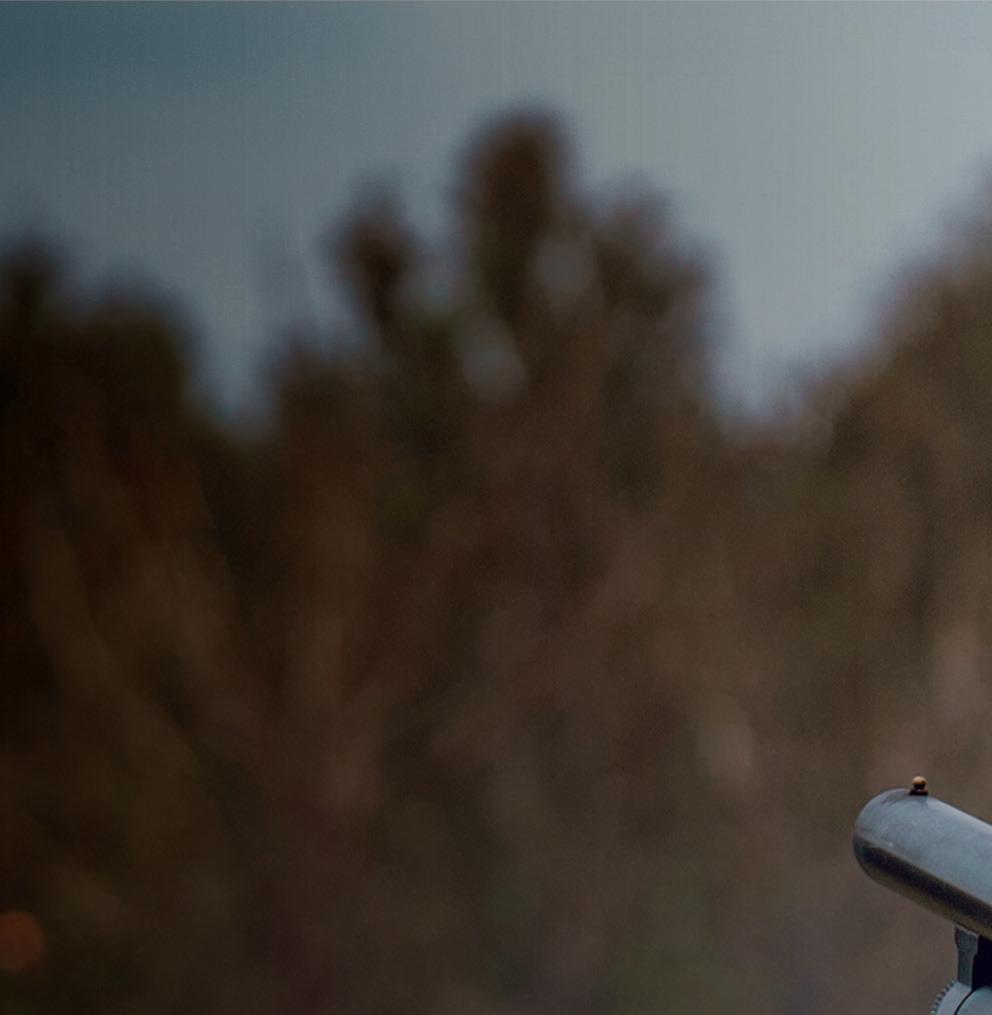
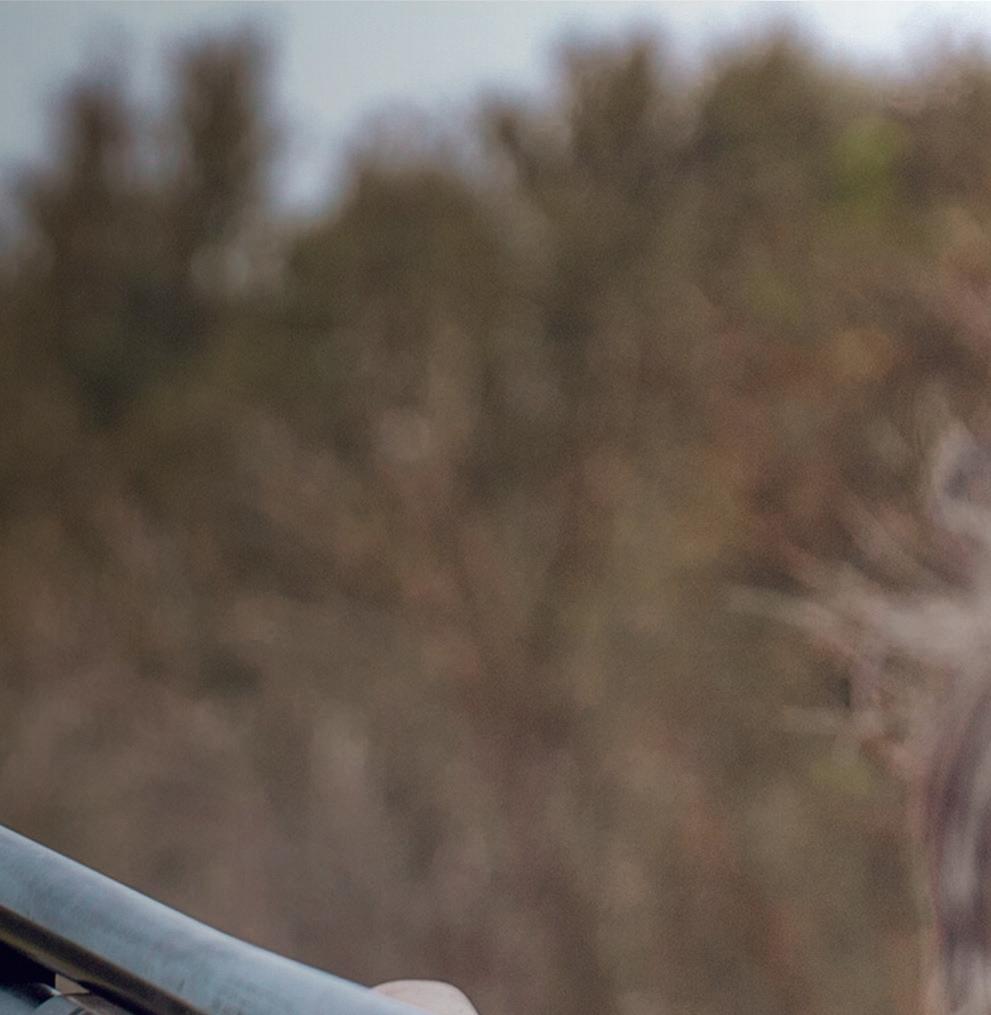
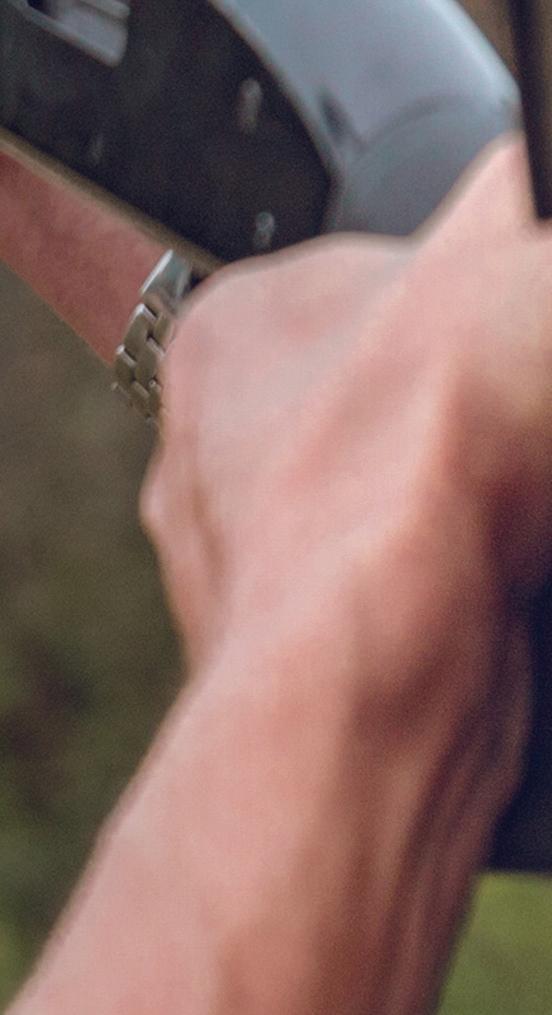


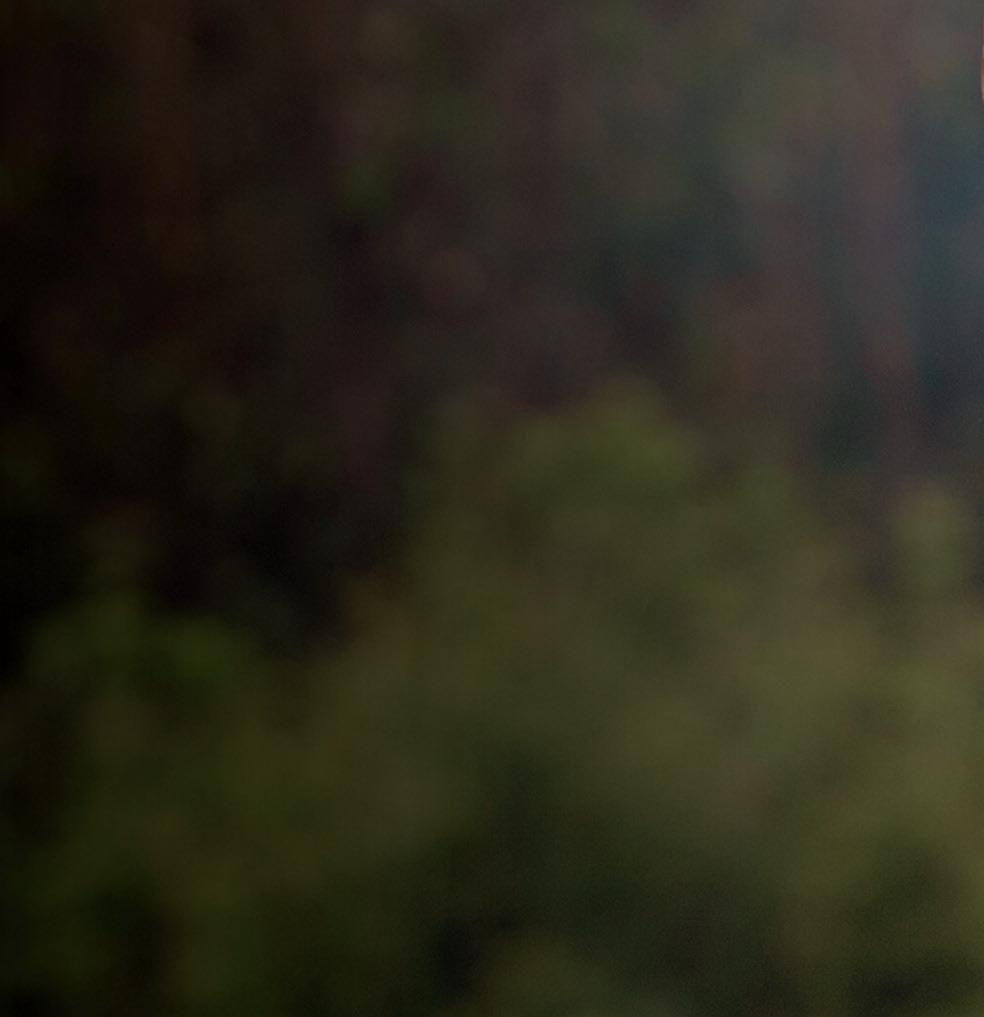
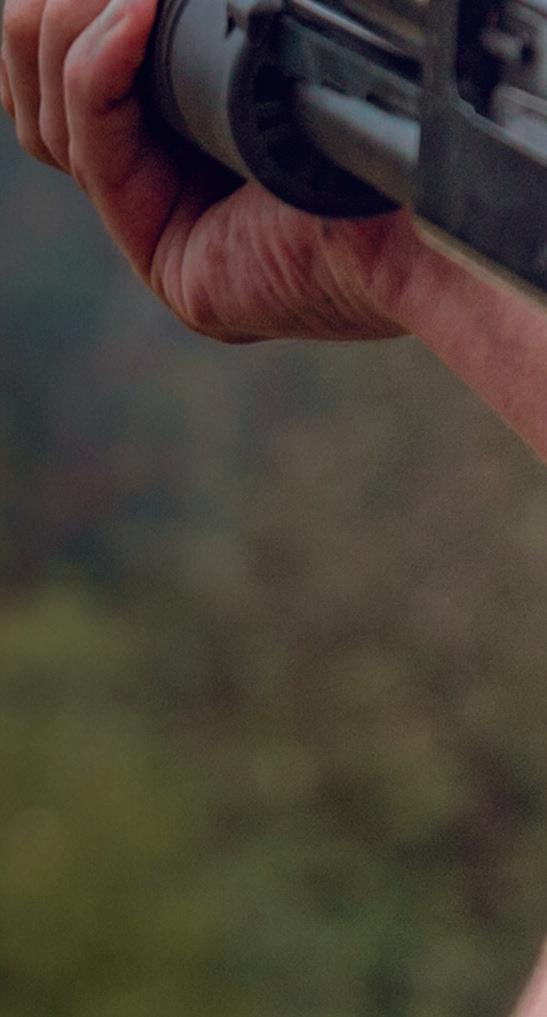
Located in the Waitahora farming district which is under 10 minutes drive from the Dannevirke township and centrally located to the Hawkes Bay and Manawatu is a superb 126 ha finishing farm with balanced contour that will cater to all sectors of the agricultural market.

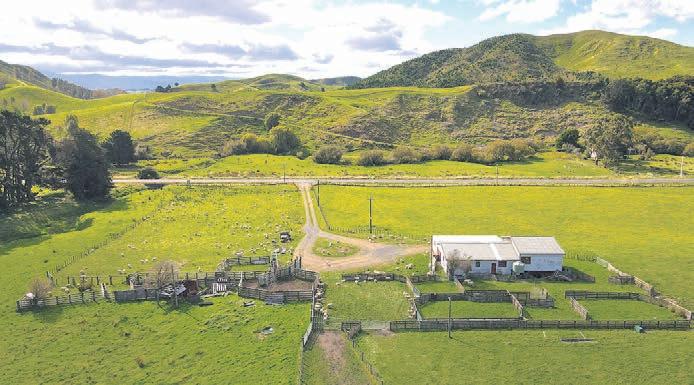
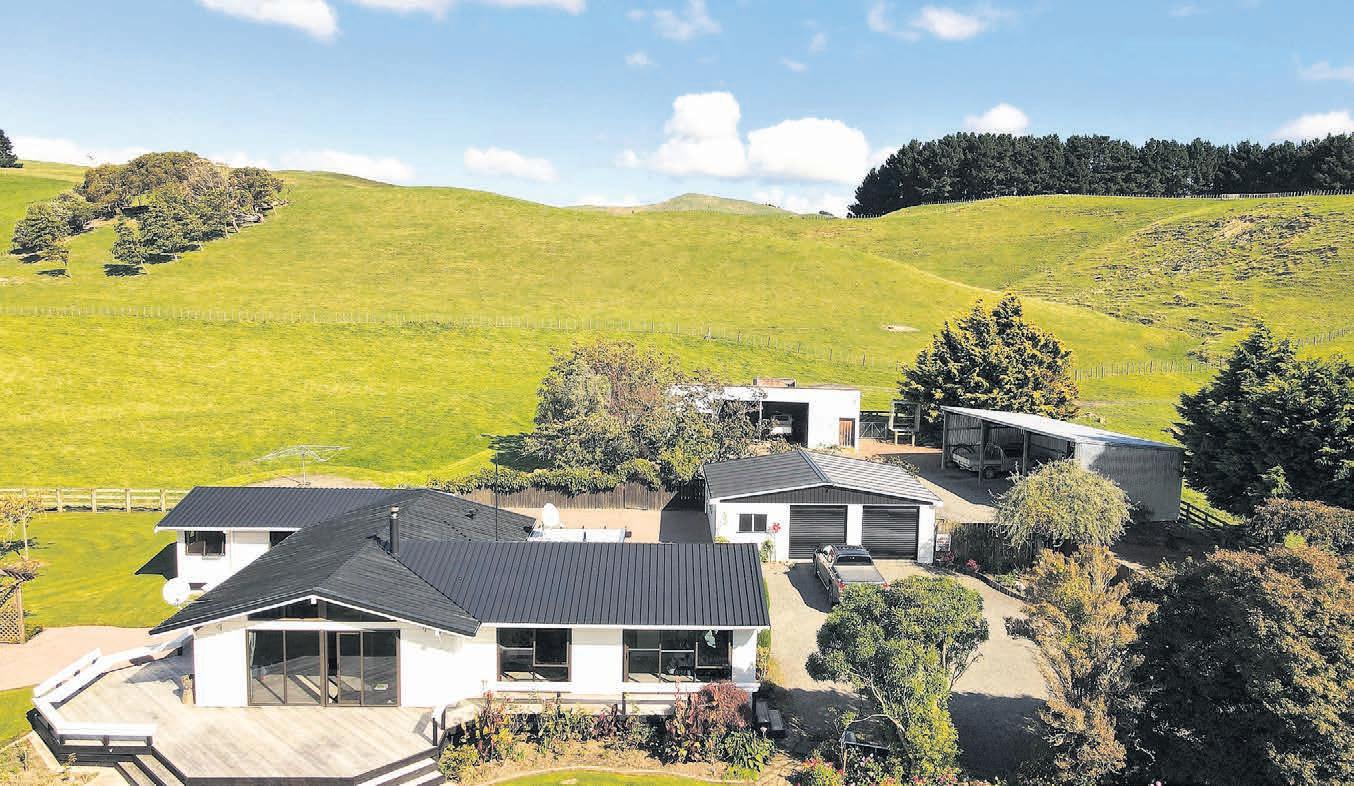
The farm boasts 18 ha of flats in modern pasture species and quality farm infrastructure including three bay and two bay implement sheds, three bay hayshed, three stand woolshed, reticulated water and sheep and cattle yards. A modernised four bedroom home set in established ground provides ample accommodation or future sell down opportunities.
Deadline Sale closes Wednesday 24th May, 2023 at 2.00pm, (unless sold prior), Property Brokers, 4 Stanley Street, Dannevirke


View By appointment
Web pb.co.nz/DR119001
Jim Crispin

M 027 717 8862 E jimc@pb.co.nz






Sam McNair M 027 264 0002 E sam.mcnair@pb.co.nz

With 1,105ha (subject to survey) currently under lease for a further 17 years from March 2024, to very capable and progressive tenants - this property will attract the investor who wants to see young farmers go forward, while also investing in a quality east coast station. Located in the renowned Whangara farming district, this is a wellbalanced property with 88ha of flats, and a modest mix of easy to medium and steep hill country. An adjoining 530ha (subject to survey) forestry block, is available in conjunction with the property to add to the investment appeal.
A unique opportunity for those that have ambition to be station owners, without running the business bayleys.co.nz/2752902
International Tender (unless sold prior)
Closing 4pm, Wed 14 Jun 2023
10 Reads Quay, Gisborne View by appointment
Simon Bousfield 027 665 8778 simon.bousfield@bayleys.co.nz
Stephen Thomson 027 450 6531 stephen.thomson@bayleys.co.nz BOUSFIELD


Trophy
Stunning natural environment. Awhea River terraces, medium to steep hills, large sunny basins home to free-roaming deer and other wildlife. Luxurious lodge/home provides panoramic views. Whether you’re looking for that trophy stag or adventure with the family, this amazing property has something for everyone. Support buildings include a 4 bay implement shed, 5 bay shed with roller doors, large chiller, processing area and workshop, original woolshed, sheep and cattle yards. With native bush areas already mapped for potential carbon credits, this property offers many options: forestry, grazing, hunting, guided tours, tourist destination with ability to host functions or conferences with luxury accommodation. Exceptionally well presented and unique. bayleys.co.nz/3151157
362.1427ha
Tender (will not be sold prior)
Closing 4pm, Thu 25 May 2023
186 Chapel Street, Masterton View by appointment
Lindsay Watts 027 246 2542 lindsay.watts@bayleys.co.nz
Andrew Smith 027 760 8208 a.smith@bayleys.co.nz
Simon Clinton-Baker 021 953 909 simon.clinton-baker@bayleys.co.nz
‘Dunard’ High Performance Hill Country - 247.2 hectares 1618 Waituna Tapuae Road, Feilding
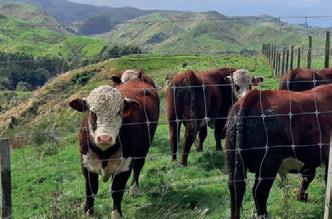

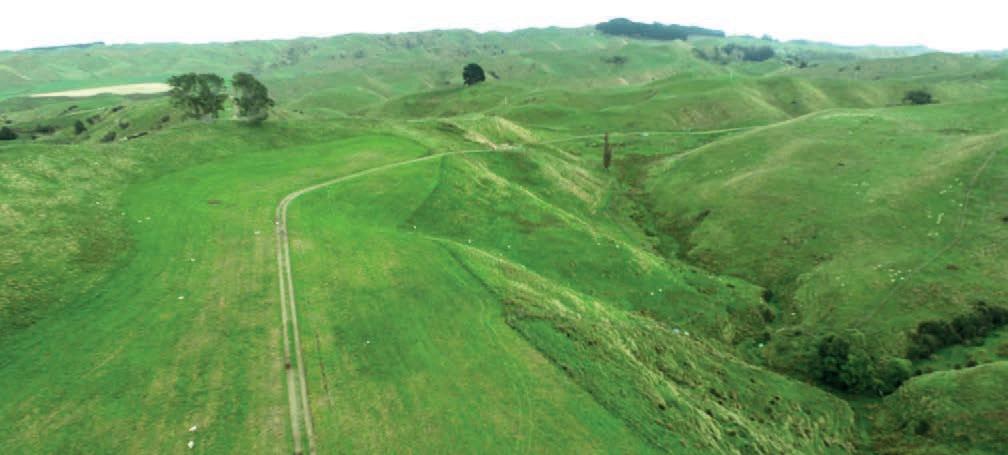

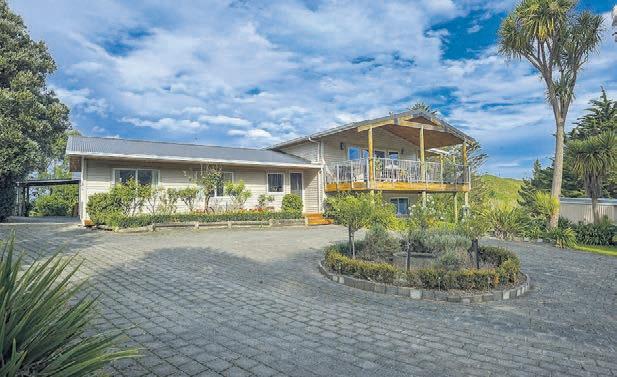


• 2,600 - 2,700 stock units
• High quality Kiwitea series soils on the hills and silt loam flats, with good fertilizer history
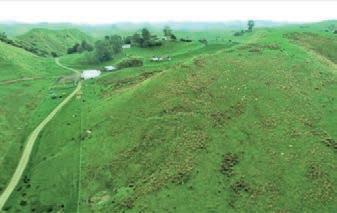
• Fenced into 22 main paddocks
• Well tracked and double fenced central laneway Airstrip, metal quarry and 7Ha mature pine plantation
• Good water supply reticulated to troughs 4 stand woolshed and yards
• 5 bedroom home with stunning views in need of renovating
For Sale By Tender
Tenders Close: 4.00pm 11th May 2023 at 56 Stafford St, Feilding.
View: By Appointment.
Call Richard or Robert for more information or to arrange a time to view.
Richard Anderson 027 543 1610 richard@rals.co.nz
Robert Dabb 027 255 3992 robert@rals.co.nz

This extensively renovated, four bedroom home on 3.475ha approx of good grazing land, offers large family living areas with fantastic indoor/ outdoor flow to inground pool, where you can soak in the expansive farmland and mountain views. Also great shedding options as well as cattle yards with loadout facility.


For Sale $2.345m
View Sunday 7 May, 1.00 - 2.00pm
Howard Ashmore 027 438 8556


Pauline Love 021 155 4689

rwteawamutu.co.nz/TEA30560
Rosetown Realty Ltd Licensed (REAA 2008)

Located nearly halfway between Te Kuiti and Taumarunui is this very fertile, well tracked, and watered property. The vendors finish all lambs and their Hereford cow herd supplies bulls to their dairy farm clients. 1st June 2022 they wintered 232 MA cows, 104 R1 heifers, 94 R2 heifers, 92 R1 bulls, 46 R2 bulls, 1580 MA ewes, 597 ewe hogget's, 280 wether hogget's and 640 2 tooth ewes. The homestead is a very tidy four bedroom on an elevated position. There is also another two x three bedroom farm cottages in very good condition and fully rental compliant. All the farm buildings are numerous and in good condition. Water is very good, going to approximately 57 paddocks. Very strong fertiliser history. The contour is mostly medium hill with some steeper sidlings. Some easier contours allow the making of 220 bales of silage per annum. The Taylor family has farmed in the district since 1952 so this is an excellent opportunity to purchase a well farmed and cared for property. This is a very fertile sheep and beef finishing farm that has been producing at a high level for years and is a perfect "late in the season" opportunity to purchase and move in before spring this year.

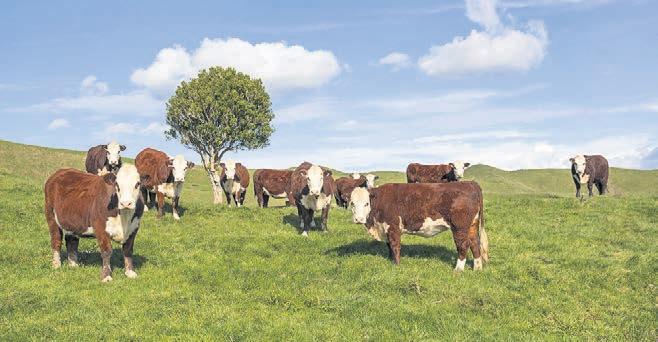
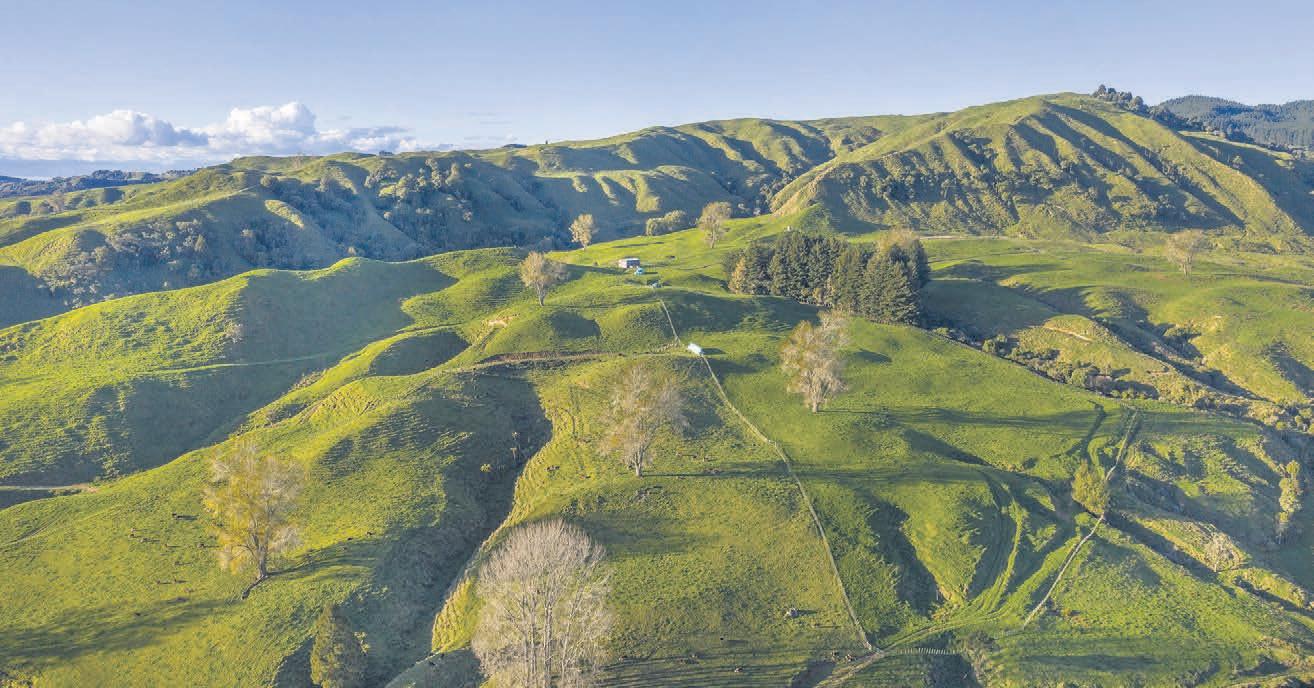
TENDER Plus GST (if any)
(Unless Sold By Private Treaty)
Closes 11.00am, Friday 2 June
VIEW 10.00-12.00pm, Wednesday 3 & 10 May
M
E pwylie@pggwrightson.co.nz
ANIMAL HANDLING
Farmers/Woodlot owner


Tired of waiting for someone to harvest your trees?
We are not committed to one buyer that is how we get our customers the most profit we can. Set up to do the smaller, trickier wood lots. No job too big or too small. Buyers of Woodlots and Forest.
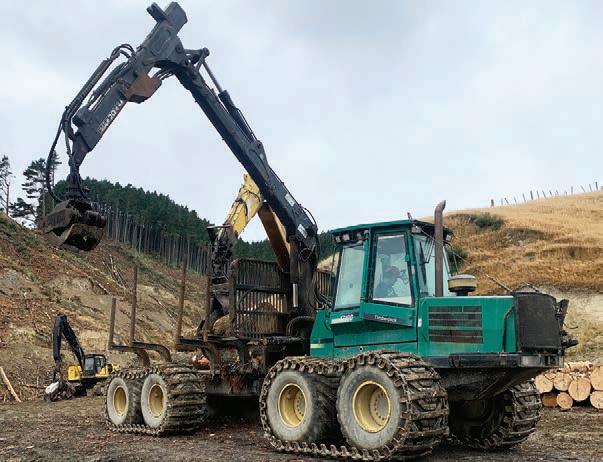
DairyNZ is the industry organisation that represents all New Zealand dairy farmers. With $90 million in revenue and ~300 staff DairyNZ supports farmers through investing in research, resource development, extension, and advocacy to ensure they lead the world in sustainable dairy farming. With a purpose to deliver a better future for dairy farmers, DairyNZ seeks to support better farming practices, develop better solutions for their challenges, and shape a better future for them.
The DairyNZ Board of Directors are looking for a replacement CEO following the recent resignation of longstanding incumbent.
DairyNZ requires an outstanding leader who is contemporary and focused on outcomes with a vision for the future of the sector. The CEO will be decisive and have the ability to lead transformation within complex stakeholder environments. The new CEO will have credibility in the arena of science and a strong understanding of New Zealand’s primary sector.

The ideal candidate will be an outstanding, proven, transformational leader with the credibility to inspire and engage with farmers first and foremost. Their influencing and stakeholder management skills will be exemplary, and the new CEO will possess credibility from a diverse range of stakeholders including government and industry, and science & research institutions. As well as exceptional people leadership skills and the ability to build a high-performing executive leadership team, the new CEO will bring strong strategic agility and a track record of engaging all stakeholders in a united vision.
They will bring demonstrable experience fostering respectful relationships, leadership gravitas and cultural sensitivity. Attraction and retention of talented people underpins the success of DairyNZ. With ability to understand what motivates staff and create a vision that inspires the workforce into the future.
The future of DairyNZ and the sector it serves is critical to the success of New Zealand’s GDP. This Chief Executive Officer role presents a rare opportunity to lead the sector and play a key role in its future success driving best practice through research, insights, and advocacy.
For more information or to apply, please contact Maia Stewart at Hobson
Leavy Executive Search: maia@hobsonleavy.com
Applications close 5.00pm, Friday 28th April 2023.

ANIMAL AND HUMAN healer, also manipulation on horses and dogs. Mid/South Canterbury, North Otago, Dunedin area 1st-3rd May. South Otago, Gore, Edendale 4th-5th May. Invercargill, Otautau, Te Anau, Winton 6th-7th May. West/Central Otago, Maniototo 9th-11th May. Phone Ron Wilson 027 435 3089.
CRAIGCO SHEEP JETTERS. Sensor Jet. Deal to y and Lice now. Guaranteed performance. Unbeatable pricing. Phone 06 835 6863. www.craigcojetters.com

SORE BACK? Busy lives?
GIBB-GRO GROWTH PROMOTANT

PROMOTES QUICK PASTURE growth. Only $6.50+gst per hectare delivered. 0508-GIBBGRO [0508 442 247] www. gibbgro.co.nz. “The Proven One.”
Sports massage. Relaxation massage. Pedicure. Mobile services at your home. BOP. Call 020 411 34425. www. massagetherapyirene.com

GOATS WANTED. All weights. All breeds. Prompt service. Payment on pick up. My on farm prices will not be beaten. Phone David Hutchings 07 895 8845 or 0274 519 249. Feral goats mustered on a 50/50 share basis.
GOATS. 40 YEARS experience mustering feral cattle and feral goats anywhere in NZ. 50% owner (no costs). 50% musterer (all costs). Phone Kerry Coulter 027 494 4194.
Gibboost Gibberellic Acid
Contact us: 0508 733 343 or 021 228 5035 www.vernado.co.nz


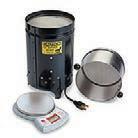
DOGS FOR SALE
BUYING / SELLING. Huntaways. Heading dogs. Deliver NZ wide. https:// www.youtube.com/@ mikehughesworkingdog 07 315 5553.
NZ KELP. FRESH, wild ocean harvested giant kelp. The world’s richest source of natural iodine. Dried and milled for use in agriculture and horticulture. Growth promotant / stock health food. As seen on Country Calendar. Orders to: 03 322 6115 or info@nzkelp.co.nz
LEASE LAND WANTED
2000-4000SU SHEEP AND beef lease block. Anywhere in New Zealand considered. Mid 40’s couple, approximately 30 years experience. References available. Phone Karyn 027 246 9668. DAIRY OR GRAZING. Rangitīkei / Manawatū through to HB. Regenerative farming practiced. Open to developing land in partnership. Phone Michael 027 223 6156.

FARM MAPPING
ACCURATE AND PRACTICAL farm maps showing area sizes of paddocks and vegetation. Visit farmmapping.co.nz or phone 0800 433 855 for a free quote.
WORKING FARM WANTED. Lease or lease to buy, with all facilities. Auckland to Taupō. Suitable for regrassing. Will maintain to a high standard. Phone 027 396 9134.
WILTSHIRES-ARVIDSON.
Self shearing sheep. No1 for Facial Eczema. David 027 2771 556.
RELAXING FULL BODY massage in rural Ohaupo. Unwind. De-stress. www. ruralmassage.co.nz or call 027 529 5540.
IS YOUR SHEEP scanning getting ridiculously expensive? My rates might surprise you. Over 20 years quali ed sheep scanning experience. Hassle free, easy system with 3-way draft. I do the marking. $$ saved to you. Wet/dry to all multiples. Lates included. Areas covered Taihape, Hawke’s Bay, Whanganui, Wairoa, Wairarapa. Phone to discuss options. Greg on 0274 588 900.
WHAT’S SITTING IN your barn? Don’t leave it to rust away! We pay cash for tractors, excavators, small crawler tractors and surplus farm machinery. Ford –Ferguson – Hitachi – Komatsu – John Deere and more. Tell us what you have no matter where it is in NZ. You never know.. what’s resting in your barn could be fattening up your wallet! Email admin@ loaderparts.co.nz or phone Colin on 0274 426 936 (No texts please)
SAWN SHED TIMBER including Black Maire. Matai, Totara and Rimu etc. Also buying salvaged native logs. Phone Richard Uren. NZ Native Timber Supplies. Phone 027 688 2954.
P o r t a b l e , m o d e r n a n d i n n o v a t i v e , o u r e x p a n d a b l e t w o - b e d r o o m u n i t i s t h e i d e a l s o l u t i o n f o r f a r m w o r k e r ' s a c c o m m o d a t i o n C l e v e r l y e n g i n e e r e d a n d b u i l t f o r m a x i m u m c o m f o r t a n d e n e r g y e f f i c i e n c y , t h e u n i t c o m e s c o m p l e t e w i t h a g e n e r o u s l i v i n g s p a c e , k i t c h e n , a n d f u l l y - e q u i p p e d b a t h r o o m
Confirmed in-calf to homebred registered Speckle Park Bull

• 15 heifers
• 10 cows
BVD tested and vaccinated. A Canterbury based stud recently established from the best genetics available in NZ, Australia and Canada. www.kotingotingospecklepark.co.nz


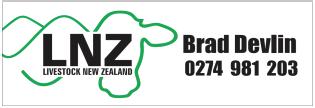
A/C Daniel Furness
Date: Thursday 4th May
Start Time: 11:00am
887 Skeet Road, Kapuni, D/N 41683

COMPRISING DETAILS
• 89 x 2-8 year Friesian/FsnX Early Calving Cows, BW 131 PW 180

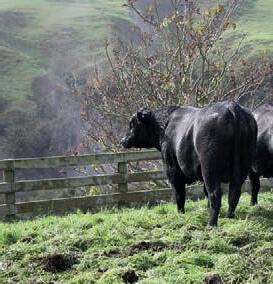

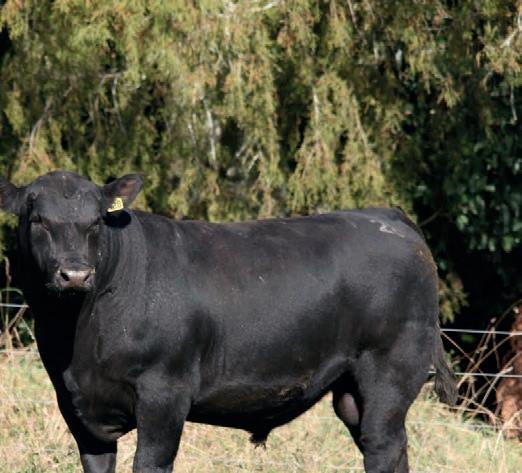

• Calving start date: 12/7/2023
4.5 Week LIC Friesian
• Tailed with Jersey Bulls removed 3/12/22 followed with 2 weeks short gestation
• SCC 80,000
• Production 480-500ms per cow annually
• System 3 feed base. Grass, PKE, silage, molasses, summer turnip crop Auctioneer Notes: Cows have been PTIC scanned and dated and will be done a week before sale again, all cows will come forward in good condition, originally a CRV based herd which has switched to LIC the past 2 seasons, delivery will be the week following sale unless prior arrangement made by new share milkers or farm purchasers, payment will be 14 days after the sale unless prior arrangements made, cows here to suit all budgets and requirements from a top vendor. Rebates offered on the day for outside independent agents with prior arrangement to the sale.
Please Contact
Agent: Kent Myers 027 247 6970 kent.myers@progressivelivestock.co.nz
Other Enquiries, phone any PLL Agent
Davidson 027 452 3882
027 304 0533


www.progressivelivestock.co.nz
A/C D & L Gamble
Friday 12th May 2023
Start Time - 10:30am
54 Karakariki Rd,Hamilton, OCD361
COMPRISING



Calving Start Date 20/7/2023
4.5 Week LIC Friesian
Tailed Easy Calving Hereford Bulls, Removed 22/12/2022, SCC 150,000.

Production 400-420ms per cow
25 Years Ownership
Auctioneers Note: Cows have been PTIC scanned & dated and will be done again before delivery. Cows are in good condition, they will be dried down and dry cow treated before Auction Day. Delivery Date from 22nd May 2023 onwards, for sharemilkers & new farm owners delivery no later than 1st June 2023.
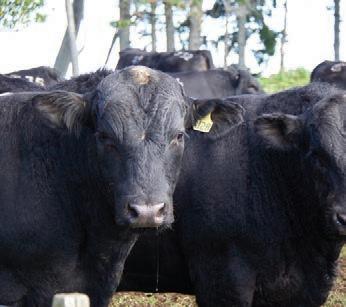
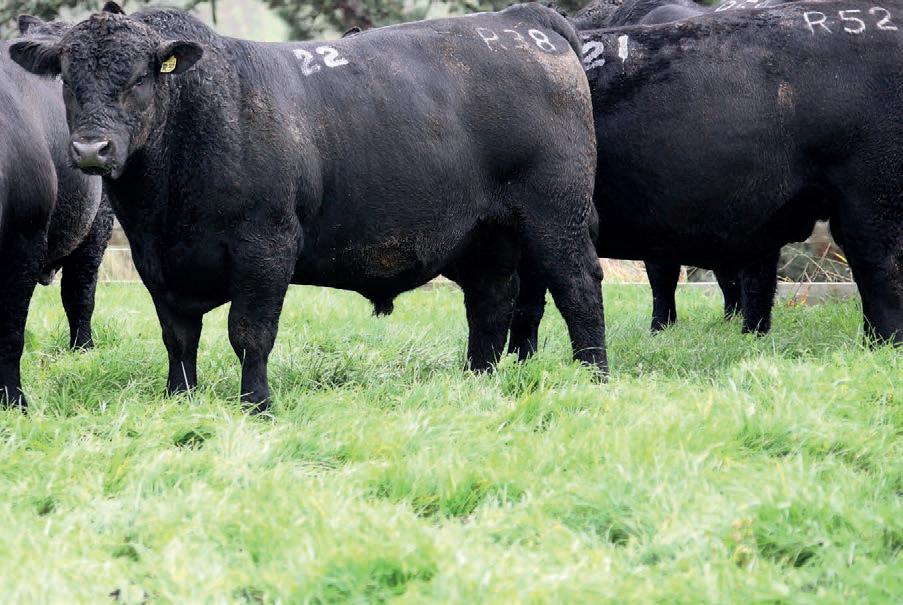
All Payments Due 1st June 2023, Rebates offered to outside independent agents with prior arrangement to this sale.
*Friesian Lovers Don’t Miss This Sale* (Coffee car & food available to purchase)
Please Contact
Steve Old 027 471 2801
Colin Old 027 870 4434
Brad Devlin 027 498 1203
A/C Nigel & Yvonne Rawlings
Maramuku Dairies
Wednesday 10th May 2023
Start Time - 10:30am Coffee cart on site
Mangawhero Road Otorohanga
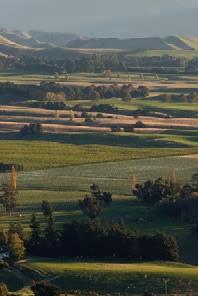
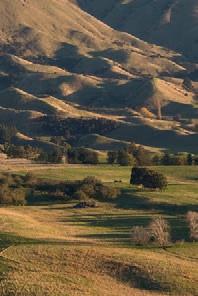
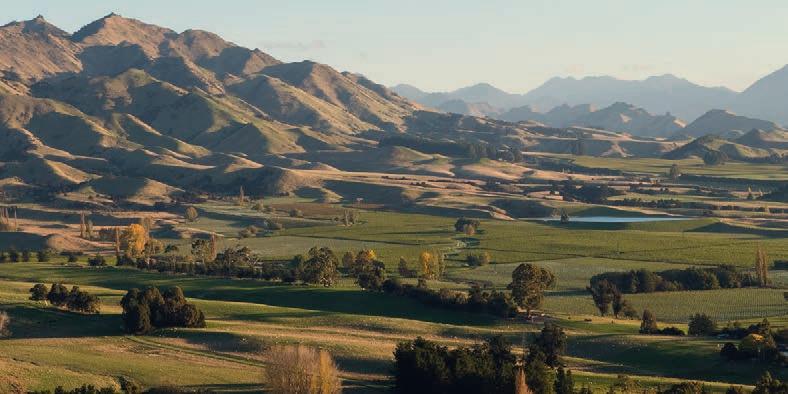
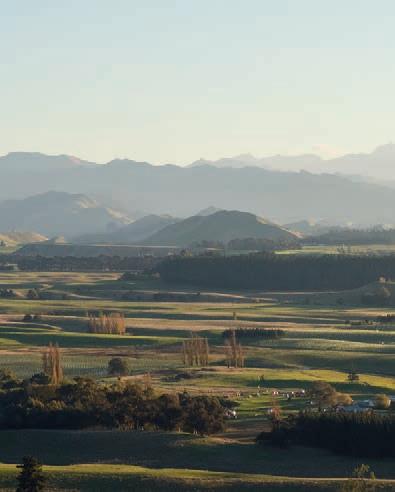
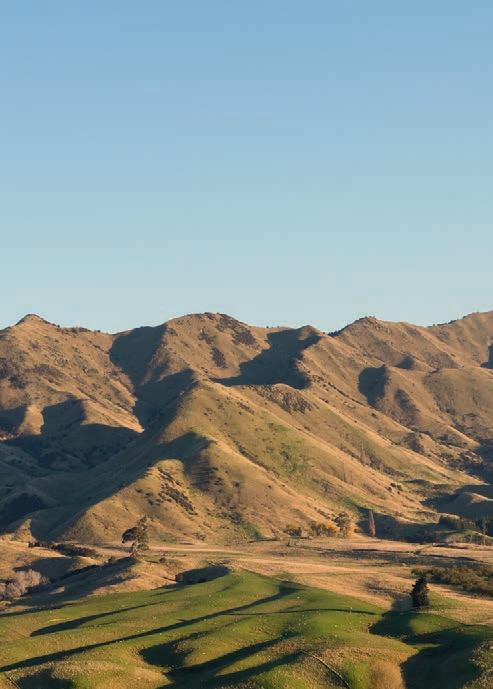
2000 Valtra 6650, 100hp, approx 5500 hrs. 2017 Valtra N141, approx 2500 hrs. 2012 Case
Puma 160 CVT, approx 2500 hrs. Massey
Fergusson Tractor 375 Kubot T2080 Tractor.
Case IH Tractor. Giltrap Bale Feeder Gen 2. 2013 – Silver Cut 380. Feraboli Baler HTC265.
2009 - 6 Tonne Combi Spreader. International
684.Nissan 380 Dropside Tipper, Crate to Suit. SIP Opticut 300 Mower. Kubota Mower with 48” Deck. 2022 Kubota Ride On Mower. 2021 – Claas Dicso 320 Mower. Redback Cultivator. Bale Feeder. Raceworks Headbale. Trailer 12
Tonne. Giltrap MAX100 Wagon. Suzuki 500
Motorbike. 2022- Suzuki DR200. 2019 - Suzuki
LFT 400. 2018- Can-Am Defender. Can-Am Max. Can-Am Outlander. 2 x Suzuki DR 200s, approx 2017. Spider 550 Pro. Simba Xpress 300 Disks. Wrangler Cattle Crush. C-Dax Sprayer. Giltrap Quick Hitch. Drillrite Seed Drill. Quick Hitch. Drench System. Hayrake. PZ Haybob Tedder. C-Dax Sprayer Unit. Calf Shelter. Rata Fork. 500-gal Storage Tank. Clough Ripper. Diesel Tank. Mastitis Detector. Taupo Roller. Calf Hay Feeder x 2. Fella TS880 Swather. Diesel Water Pump. Woodsplitter. Calf Feeder – 60 Teat. Maize Cover. Platemeter. EID Tag Reader. Silostop Cover. Spray Unit. Maize Bin To Suit. Generator. Outside Entries Welcome
Please Contact
Nigel Rawlings 027 476 7360
Colin Old 027 870 4434
Steve Old 027 471 2801
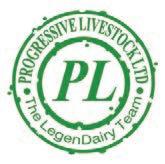
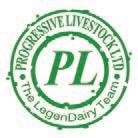
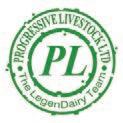

LK0115334©

www.progressivelivestock.co.nz
www.progressivelivestock.co.nz
Wednesday 17th May from noon.
Venue: 2435 State Highway One, Rata. 15 minutes north of Bulls.
Ensol aluminium fuel tank (60/40 diesel/petrol); Claas tractor 530C Arion with bucket; front-end bale forks; Quick-hitch x 2; Hustler SL700X bale feeder; McIntosh 600 side-feed forage wagon; McIntosh 700 side-feeder wagon; softhands; Rata 1.5m silage grabs; Celli 3.5m crumbler power harrow; grader blade; Duncan 701 Seedliner drill; single-row maize chopper; Aitchison drill; Jaguar 75 silage chopper; Croplands 700lt spray unit; 3m Fella mower; Klough 850 SPL 6-furrow plough; Cambridge roller; Pro-lick 6000Lt stainless feed trough; Platinum Pro-Crane forks; 2016 Ford Courier flat deck ute; 2017 Toyota SR5 ute (200000km); 2022 Honda 520 Quad; 2019 Honda 2-wheeler; 100Lt Inex bike tow sprayer; assorted ATV tyres; 70-teat Stallion tandem wheel calf feeder; calf trailer; 30-teat Silvan calf feeder; causmag bike spreaders; Condor 500Lt electric-start fluid movement pump; home-built light tandem trailer with hoist; 6 x Waste-not feeders; calf meal feeders; 6m PK feed troughs; calf crush; hay racks; assorted electric fence gear; 20 a-side cowshed/plant dismantled; water cooled vacuum pump; 5700 Lt vat; 250Lt hot water cylinder; wash-down pump; 2 x 3500Lt Promax tanks; current season wrapped baleage (both pasture & clover/plantain – 11 equivs).
Full list in next week’s paper, or find it on www.MyLivestock.co.nz/go/event/list
under May 17th
Enquiries: NZFL agent
IN CALF DAIRY HEIFER SALE
Monday 8 May 2023, 11.30am
A/C Estate of DL Burgess, Te Aroha
To be held at Morrinsville Saleyards

Comprising:
• 128 Friesian, Ayrshire, Shorthorn X & Jersey Incalf Dairy Heifers
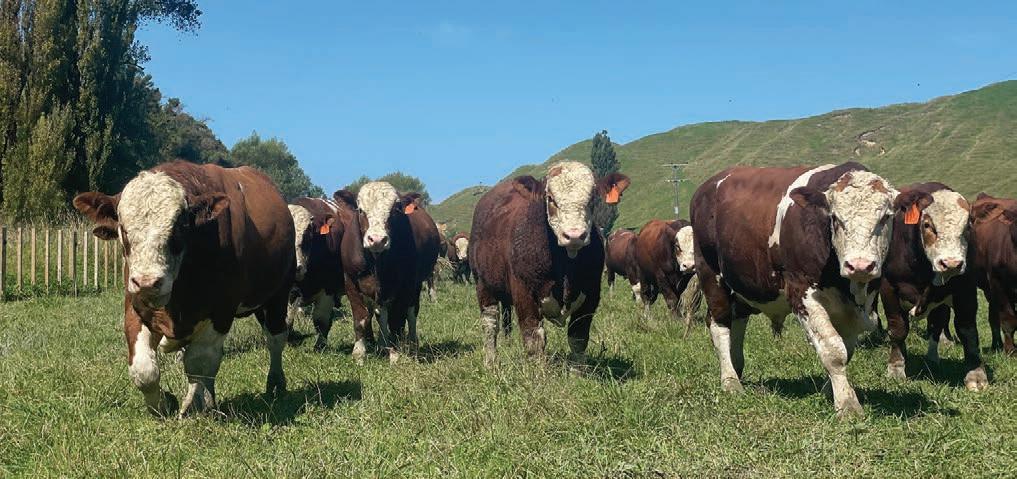
Complete replacement line of Incalf Heifers.
Farm Sold. Ambreed Sires from pedigree dams
(Unrecorded)
Calving from 1st August to Jersey bulls.
Bull out 16/1/23.
These heifers come forward in good condition.
TB Status C10, EBL Free, BVD Neg
Enquiries:
Allan Jones 027 224 0768
Regan Craig 027 502 8585
CALVES FOR PRIVATE SALE
• 200 Hereford/Friesian x Bull Calves
$575 plus GST
200 Hereford/Friesian x Heifer Calves
$550 plus GST
Very good line of Autumn Born. 1 Earmark
Calves. TB Status: CM. Minimum 110kg
Liveweight. Delivery May/June
Enquiries: Greg Cook 027 229 9376
Tangiwai Station, Wairoa
1PM, Tuesday, 23rd May 2023
TUESDAY
WEDNESDAY
www.kerrahsimmentals.co.nz
Winners of the Steak of Origin 2018 “Where Performance
R1YR FRIES & BEEF BULLS
180-220kg
R2YR BEEF OR FRIES HERE X HFRS 350-440kg
R2YR ANG & ANG X STEERS 440-470kg
E info@rdlfinance.co.nz A

SALE TALK
An important banker has an appointment with his local doctor.
He says “Doc, you’ve gotta help me. It’s my ear. There’s something in there and it’s been annoying me for days now.”
“Let’s have a look,” says the doctor. He peers inside, and says with surprise, “You’re right! There’s money inside!” He proceeds to pull out a $50 bill.
“I don’t believe it,” he says, “There’s more in there.” Out comes another fifty, then some twenties, along with some smaller bills.
When all the notes have been removed, the doctor counts up the money, and discovers that it comes exactly to $1999.
“That sounds about right,” says the banker. “I knew I wasn’t feeling two grand.”
Here at Farmers Weekly we get some pretty funny contributions to our Sale Talk joke from you avid readers, and we’re keen to hear more!
If you’ve got a joke you want to share with the farming community (it must be something you’d share with your grandmother...) then email us at: saletalk@agrihq.co.nz with Sale Talk in the subject line and we’ll print it and credit it to you. Conditions apply
Key: Dairy Cattle Sheep Other
Tuesday 9 May, 2023
10.30am Machinery 11.00am Herd
A/C Waterside Farms, R & D Forsythe. On Farm at 66 No 5 Road Waitoa
Comprising:
108 In milk & CTP Friesian Cows
Herd BW 61, PW 121, BWs to 319
Chance to buy genuine autumn calving cows who have been averaging approximately 600ms/cow.
Transition to autumn calving in 2017. Sired by predominantly overseas bulls that are currently making an impact in NZ for conformation and production.
These cows will certainly lift your tanker docket and will come to sale in great condition and fully recommended. TB C10, EBL Free, Lepto vaccinated.
Semen Straws
Semex Straws 9 Alcove & 9 Yellowstone Charolais
World Wide Sires 11 Helix & 10 Mountaineer
Machinery
Tractor - Case JXU 95 4WD Rops FEL 7080 Hrs, 2019 Pearson Grader Blade, Leveling Bar, Cambridge Roller, Cow Sling, 2014 Suzuki TF125 Motorbike, Silorator, Reels, Standards, and Sundries.
Catalogues available on AgOnline.
Enquiries:
Allan Jones 027 224 0768
Andrew Reyland 027 223 7092
offers a flexible cashflow solution for farmers. Scan the code to find out more

Wednesday 10 May 2023, 1.00pm | Online Bidr Only
OPEN VIEWING DAY: Tuesday 9 May | 11.00am- 2.00pm
362 Buckingham Road - Otautau - Southland Supply number 31706
Comprising:
43 Autumn Calved Friesian Cows & Heifers
• 63 Spring Calving Friesian Cows
6 Spring Calving Friesian Heifers
• 27 R1yr Friesian Heifers
Selling all the top shelf at Rivendell. Sale cow’s averages BW 153, PW 258. The use of genomic information has been at the fore for a decade when selecting bulls at Rivendell.
Economically significant traits for production-type-fertility and fat/protein
BVs have been invaluable in transforming the herd to what it is today. Capacious cows with great udders consistently producing 650ms/cow. Owen and Kathy have sold the farm hence the reason the best at Rivendell are for sale which includes some of the best families from around world brought in as embryos giving you an unique opportunity to purchase genetics a head of their time in NZ.
TB C10, EBL Free, Lepto vaccinated. Catalogues available on AgOnline. Payment terms
50% in 14 days

50% 20 September 2023
Enquiries:
Roddy Bridson 027 458 2775 Andrew Reyland 027 223 7092 Owen Copinga (Vendor) 027 553 3196
NZ’s Virtual Saleyard bidr.co.nz

Meats Phenotype”
A/c Navillus Farm Ltd
305 Tiwai Rd, Invercargill, Southland
11th May 2023 @ 7:30pm via ONLY

All G3 tested. BW 182; PW 247; RA 93%
COMPRISING:
380 2-8 year old in calf fully recorded cows for sale, to be sold in computer splits of 45.
21 x Half recorded 2-8 year old cows
22 x late calving 2-8 year old cows
151 x In calf heifers BW 240 PW 268
DETAILS:
• These cows come highly recommended and are on target to produce 460kgMS/cow.
• In shed feeding consists of 322kg PKE/DDG mix with silage/ baleage fed in the paddock on the fringes of the season.
• Two herd tests have been done this season; with the March herd test averaging 1.71kg MS/ day and SCC 117.

• 2 year olds have been Johnes tested the past 4 seasons.
• Mated to Kiwi Cross Sexed semen (cows BW >170); with lower BW cows mated to Hereford. No mating intervention has been used. PSC 8/8/2023.

• Tailed with Hereford X bulls.
• 2021 born heifers in calf to Premier sires Sexed semen AI: 7-day natural AI mated, then PG shot with AI 4 days. Tailed with Jersey X and Hereford X bulls. PSC 8/8/2023.
• BVD bulk test negative (results supplied).

• Cows to be minimum BCS 4.5 at delivery.
• All cows to receive blanket long-acting dry cow at dry off.
• Delivery between 25th and 28th May
• Settlement 1st June 2023
• TB status C10
CARRFIELDS LIVESTOCK AGENT: Scott Gibson-Smith 0272558501 scott.gibson-smith@carrfields.co.nz



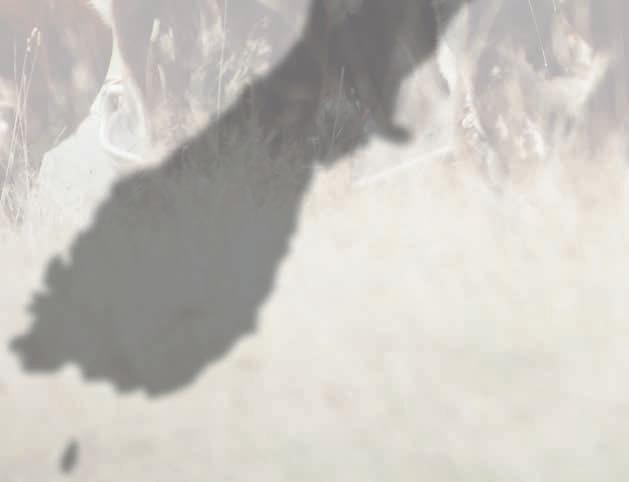


PGG WRIGHTSON AGENT: Roddy Bridson 027 458 2775 roddybridson@pggwrightson.co.nz
C/O Frsn/FrsnX BW165 PW285
98 x I/C Hfrs Frsn/FrsnX BW185 PW199
104 x R1 Hfrs Frsn/FrsnX BW213 PW227 (Drafted into 3 lines)
DETAILS:
Cows: 510 M/S per cow, system 4, SCC

100,000, DTC 10th July to CRV Nominated.
AB 4 ½ Weeks, tailed with Jersey bull removed 20/12/22. Cows vetted to dates.

Heifers: DTC 10th July to Jersey Bull, removed 20/12/22. TB C10, BVD BM Tested, Salmonella & Lepto Vaccinated.
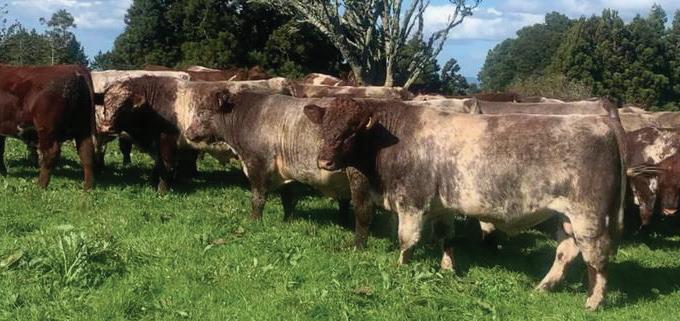
MACHINERY LIST:
Ford 3600 6818 hours, Duncan 701 Seedliner Drill, John Deere 6230 2013 c/w loader & Bucket 3550 hours, John Deere 6120 c/w loader & Bucket, Pearson Auger Bucket, Massey Ferguson 265 2WD, Feeder Leader Bale Feeder, 1985 Horse Float new floor, Visit our website for the full list
AUCTIONEERS NOTE:
Formally an LIC herd converted to CRV 10 years ago. This well uddered and quiet young capacity herd comes forward in excellent condition. It is a very well managed farm and herd in every respect. A great opportunity purchase quality young cows calving early.
DELIVERY/PAYMENT TERMS:
Deferred payments: 1st June 2023
Cows can stay on farm for those with no genuine access to existing farms. CARRFIELDS





Prices will pick up through the early part of the season, as they usually do, but producers would be wise not to let this go to their heads as they look deeper into the year.

were the best it got with values succumbing to weaker demand over the remainder of 2022.
AS WE knuckle down to winter mode, lamb traders are starting to gather some pace on securing numbers to see them through the rest of the season. There is an expectation that lamb slaughter prices will start to show solid upside in an attempt to recreate the pricing trajectory of last season.
Delving deeper into this theory shows immediately that this could be a tough ask. And this isn’t just a hunch, but rather reflects a wad of data that shouldn’t be overlooked in favour of merely anticipating a repeat of pricing upside this winter.
There have been some subtle lifts in asking prices for lamb from key markets in recent months. While prices are looking healthier than last October, they are far from breaking records. Average export values for New Zealand lamb sold into global markets last month came in at $10.90/kg. This is not bad when comparing to historical data for this time of the season. However, lining it up with last year’s values shows a vast difference. A little over 12 months ago, NZ exporters were receiving on average $13.60/kg for lamb into global markets. To put it in perspective, March 2022 values
Current returns are still recovering from the slide in demand witnessed last year. The current softness is not a reflection of our product losing quality but simply that we have lost the attention of some consumers, whose back pockets are no longer bulging with excess cash.
Softer export returns are already being factored into farmgate prices. Slaughter prices are currently $1/kg behind where they were this time last year, but they are similar to what we were receiving back in autumn 2018 and 2019. Typically slaughter prices lift $1.25-$1.55/kg between May and October. Given the much lower starting point, a push to over $9.50/kg is a far steeper climb than we have endured before and currently remains out of reach.

For slaughter prices to continue to lift, ultimately overseas pricing for NZ lamb has to pick up from where it is currently sitting. The question is whether overseas demand has the stamina to support the lift in farmgate returns many are banking on. Global markets are stable right now and exporters appear positive. But there are some underlying concerns about the strength of lamb demand in the face of global economic turbulence.
Key markets are mixed with

Typically, average export values for lamb continue to lift through winter to peak in October. Against a backdrop of weaker consumer demand, that upside will be softer than what we have witnessed in the last two years.
varying levels of movement. China continues to take the bulk of our lamb exports with their market
share by volume lifting to nearly 50% this season. But we’re still awaiting a further boost to their demand as covid restrictions subside. The slowing pace of their economy may stretch that time frame out.
Key indicator cuts into China have improved this year, but prices are currently tracking sideways as summer conditions heat up and there’s still plenty of inventory to consume.
Typically, average export values for lamb continue to lift through winter to peak in October. Against a backdrop of weaker consumer demand, that upside will be softer
than what we have witnessed in the last two years, even allowing for favourable currency rates. The expected drop in NZ lamb production through winter will provide some procurement leverage domestically. But with less fat in the system now, it will need to be recouped somewhere down the track, most likely into the new season.
Despite these concerns, pricing upside through this part of the season is inevitable, but the key is to be realistic this winter, otherwise the chance of securing reasonable margins will be very tricky.

Multi-vendor calf sales at Temuka came to an end on Friday, April 21 with the Fairlie Basin offering. That sale finished the season on a high note with 7500 calves in total offered. Over the four sales, traditional steers averaged 205-245kg and $825-$975 and heifers, 185-225kg and $615-$720. Exotic steers predictably weighed more than the traditional lines and averaged 220-255kg and $820-$940, with the heaviest calves saved for the last sale. These were 348-372kg Charolais-cross from Sherwood, which sold for $1210$1310.
| April 20 | 555 sheep
IMPRESSIVE CALVES: These Charolais-cross steers were the heaviest spring-born calves offered at the Temuka calf sales this season. The top line weighed 372kg and sold for $1310.
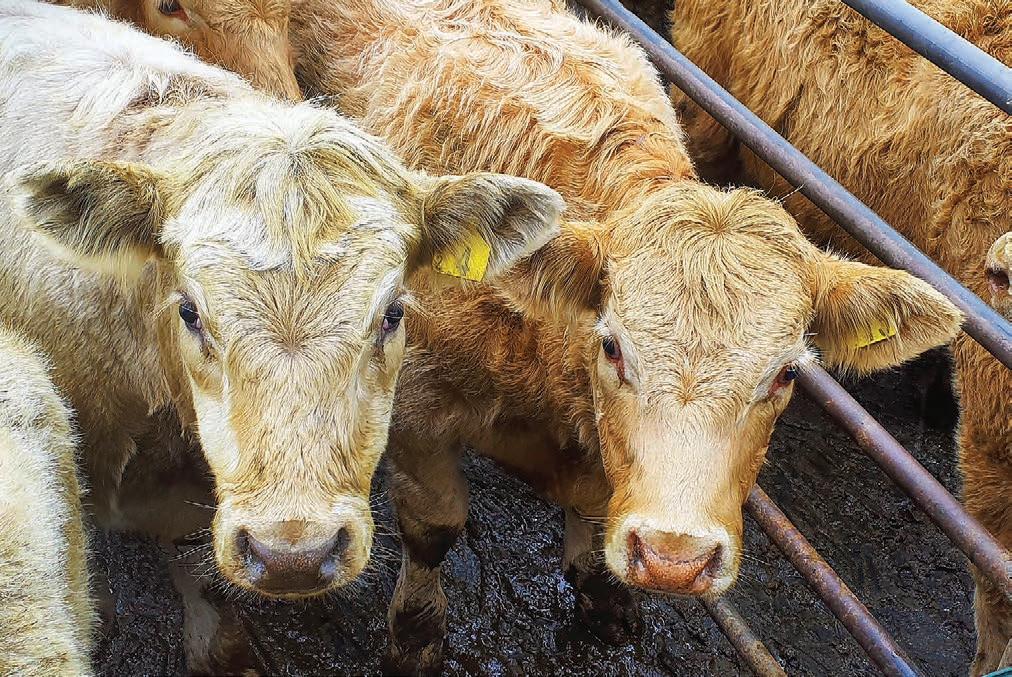
| April 19 | 1187 sheep


NOTE: Slaughter values are weighted average gross operating prices including premiums but excluding breed premiums for cattle.










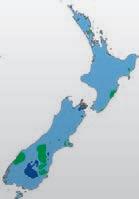










MAY is here and it’s kicking off warmer than average, too. Thanks to a powerful high pressure zone that crossed New Zealand for the end of April, we now have subtropical winds once again – which for the North Island will linger until about Friday. Even then, the airflow across NZ this week will shift from sub-tropical northerlies to Tasman Sea nor’westers, so the first working week of May certainly leans warmer than average for most regions, both by day and by night.
NZ is a small country sizewise and so one big high or one big low can bring us all a week of weather we perhaps don’t always expect. Powerful highs and weak sub-tropical lows have worked in tandem over April and now for early May to bring us these warmer-than-average set-ups.
We are expecting May to continue like other months this year and lean warmer than average – by at least 1degC in the lower South Island and by about half a degree, or more, for the top of the North Island.
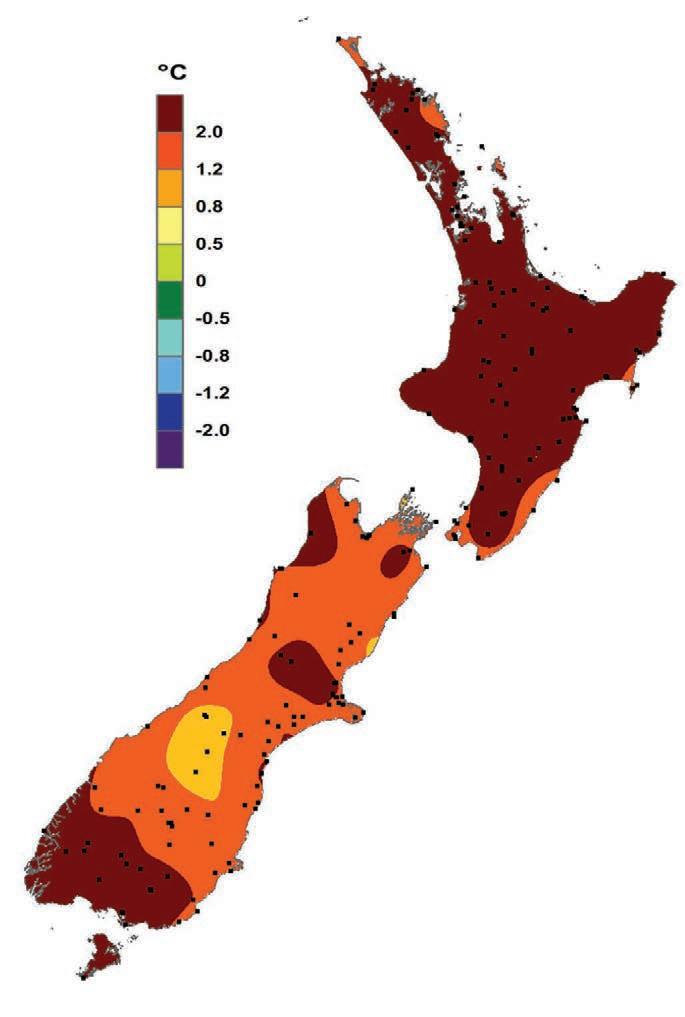
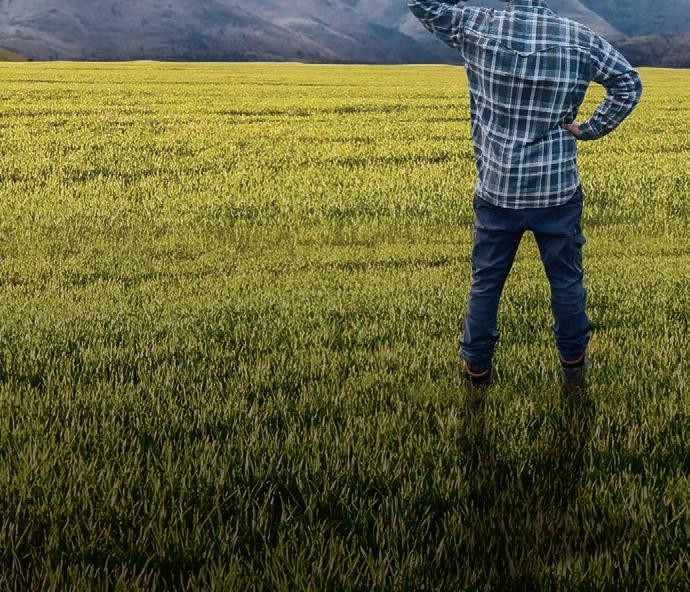
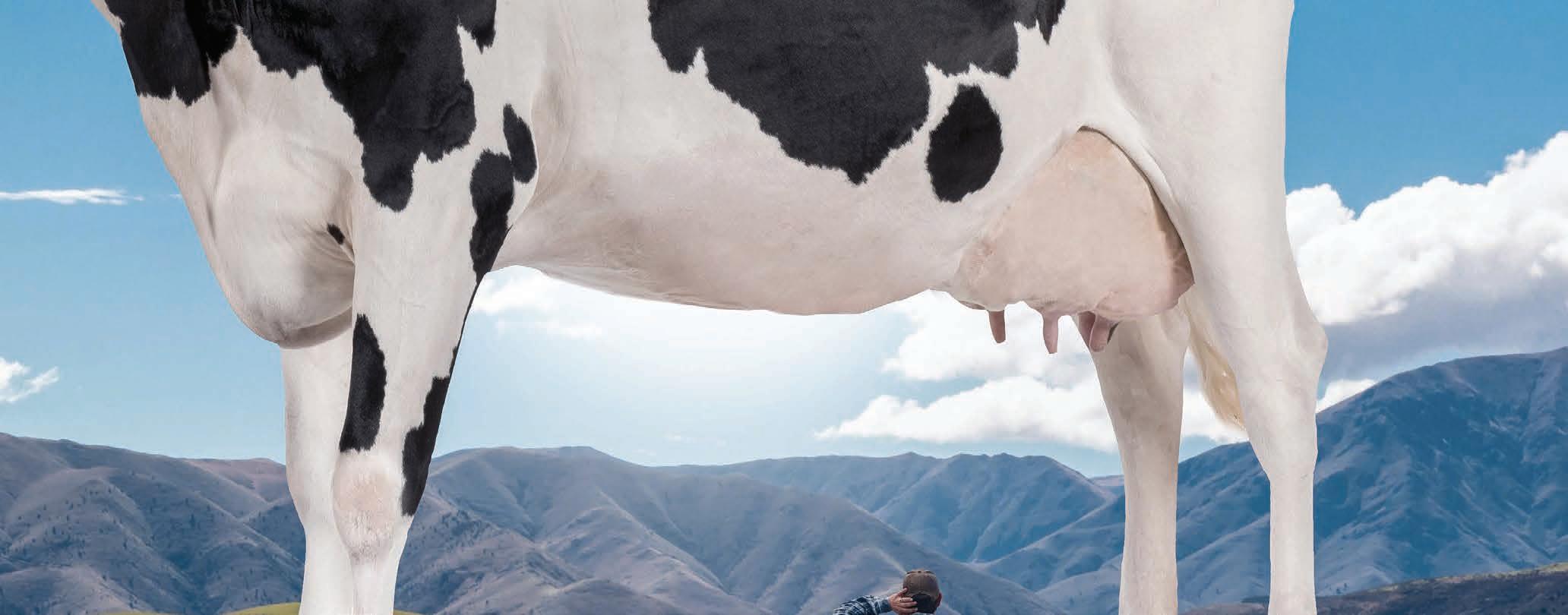
The first weekend of May certainly looks to be a bit cooler, with a southerly change moving up the South Island and flirting with the lower North Island.
But this next southerly is yet again ahead of an enormous high pressure zone that’s roughly the size of Australia. For the first Sunday of May this high is likely to centre roughly around Tasmania, and that placement encourages southerlies into NZ, but these aren’t from Antarctica so they won’t be super cold.
The placement of this high-pressure zone – and its slow movement – mean NZ likely has colder air spilling over into next week too, for May’s second week. Frosts are more likely next week than they are this first week of May.
As we go through May we see more variety with lows and highs, and the pattern of movement is basically from west to east – from Perth to Melbourne, Melbourne to the Tasman Sea, the Tasman Sea to New Zealand. This line of lows and highs produces true variety with warm days/weeks and cold ones, and dry periods mixed with rainy lows. For many farmers this chaotic forecast is a good one in autumn as it brings plenty of variety.
With La Niña we often see more rain


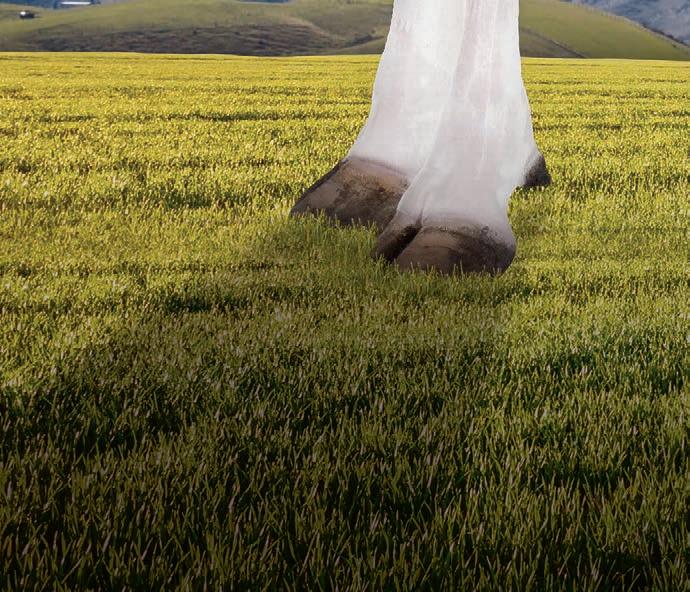
This next southerly is yet again ahead of an enormous high pressure zone that’s roughly the size of Australia.
in the north and east of both islands. With El Niño it’s the opposite, with more rain in the south and west of both islands. But we’re currently in a “neutral” period, which means we’re getting a taste of everything. However, the rain accumulation maps show bigger totals in the west (normal for autumn) but also still some areas of heavier rain in the north of the North Island – a sign that the sub-tropics hasn’t entirely gone quiet.

• First week of May looks warmer than average
• Double digit overnight lows for many, even inland areas
• Most regions are again frost-free this week
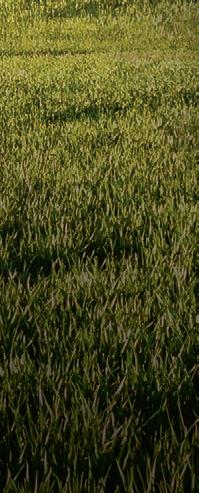
• Cooler change late week and this weekend for the South Island
• Cooler next week in NZ
